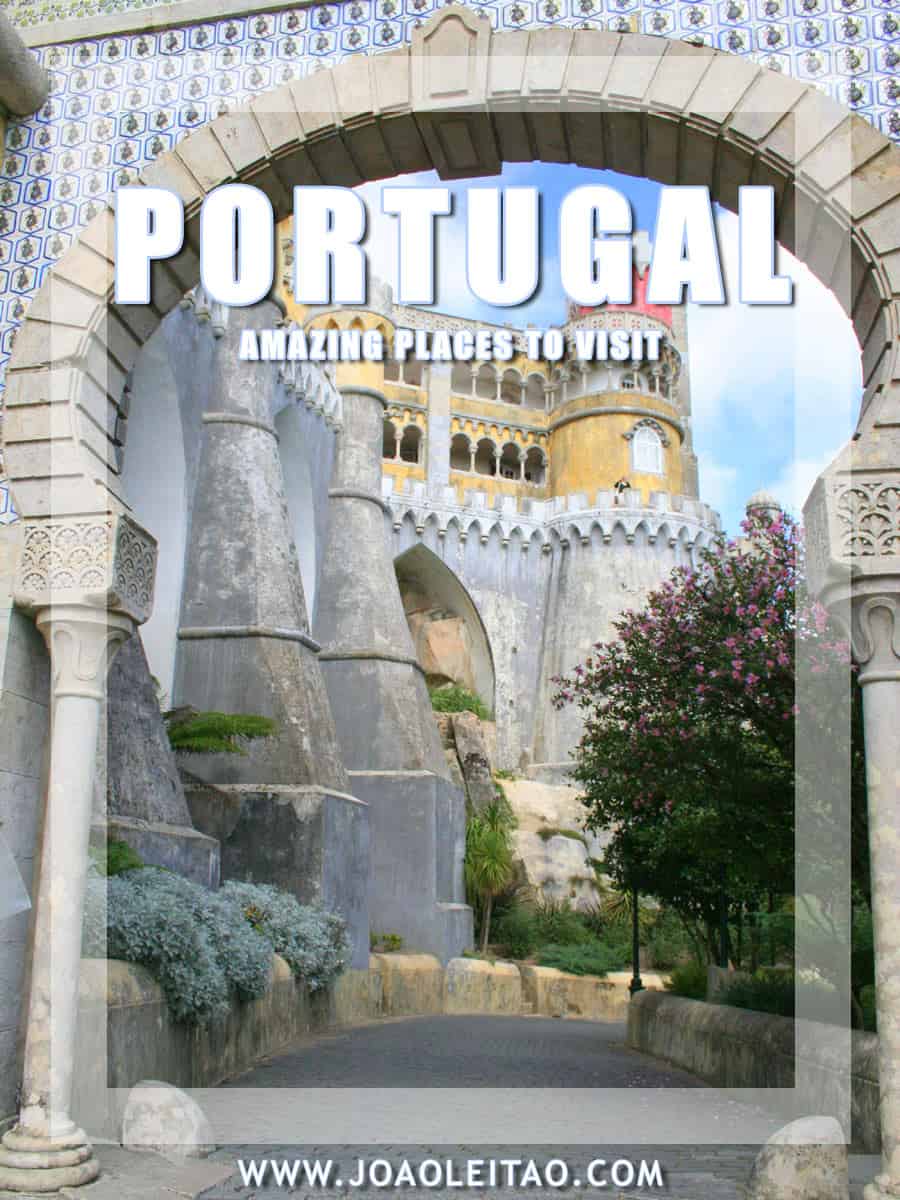Table of Contents
Visit Portugal
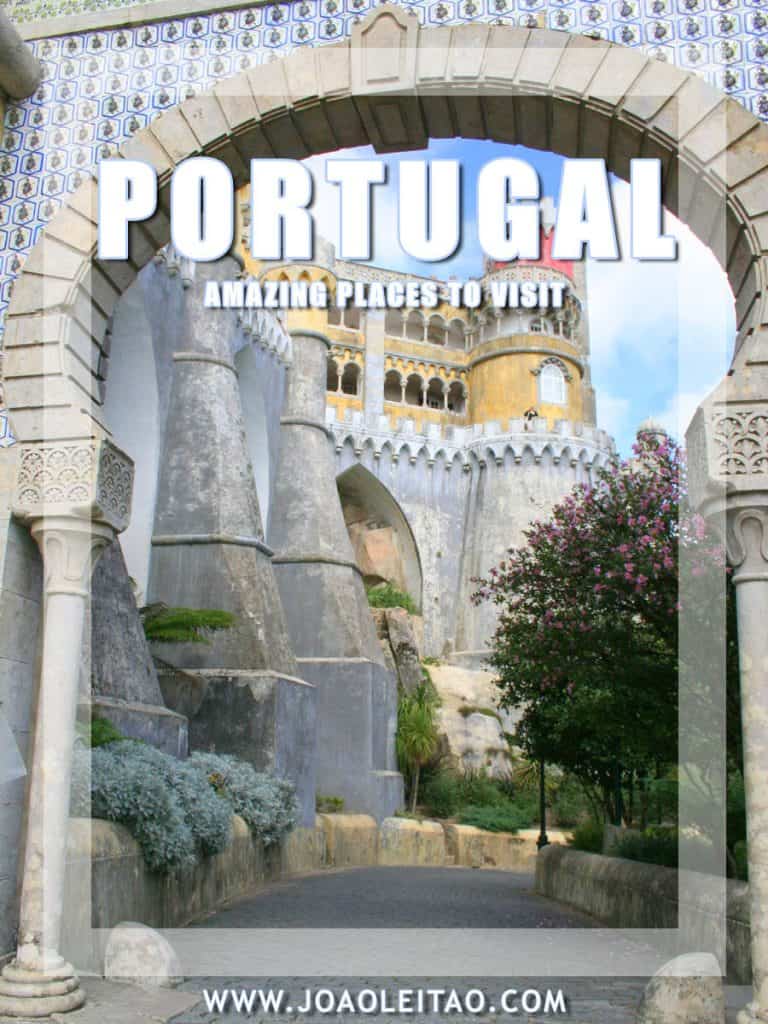
Cradle of world history, Portugal is a unique travel destination.
It is interesting how such a small country offers such a variety of landscapes, history, architecture and gastronomy. To visit Portugal is a great and unforgettable experience.
Portugal tells the history of a country and even a bit of the world, through its historical and archaeological monuments from prehistoric times, with dinosaurs and rock carvings, to the discovery of faraway lands beginning the globalization process through the Discoveries.
Portugal origins by date: The Foundation – year 868, Re-founding – year 1095, Sovereignty – year 1128, Established Kingdom – year 1139.
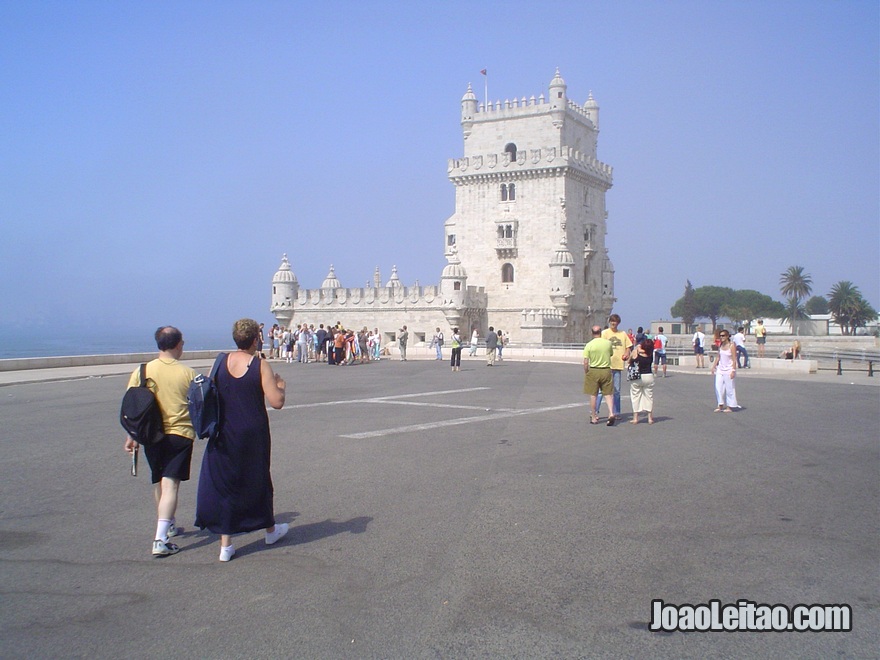
Portugal is a small country located at the westernmost edge of Europe, but it is a nation of great achievements. The more I travel, the more I understand how this country is so rich in landmarks and heritage.
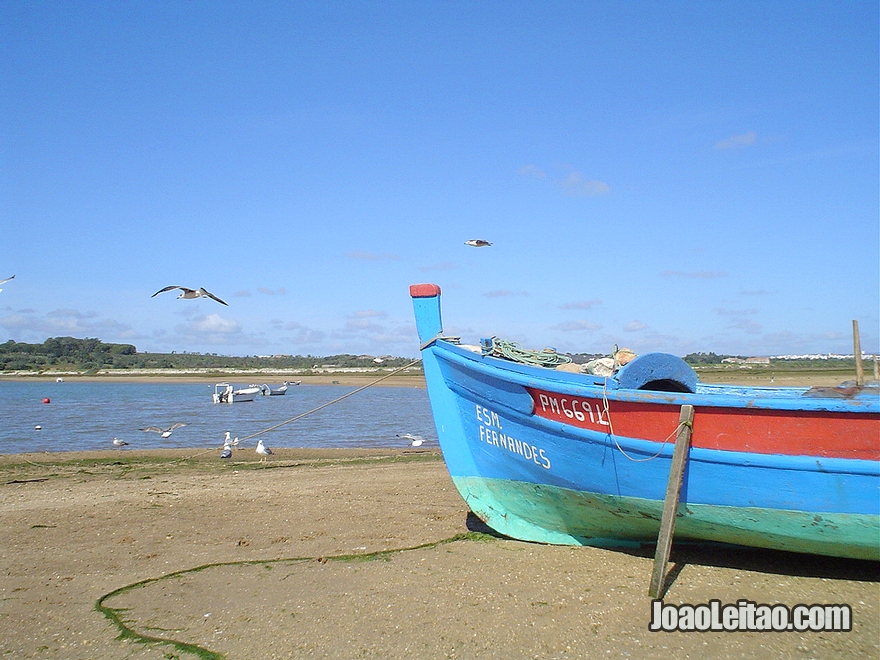
Visit Portugal – 115 of the Best Places
1. Sintra
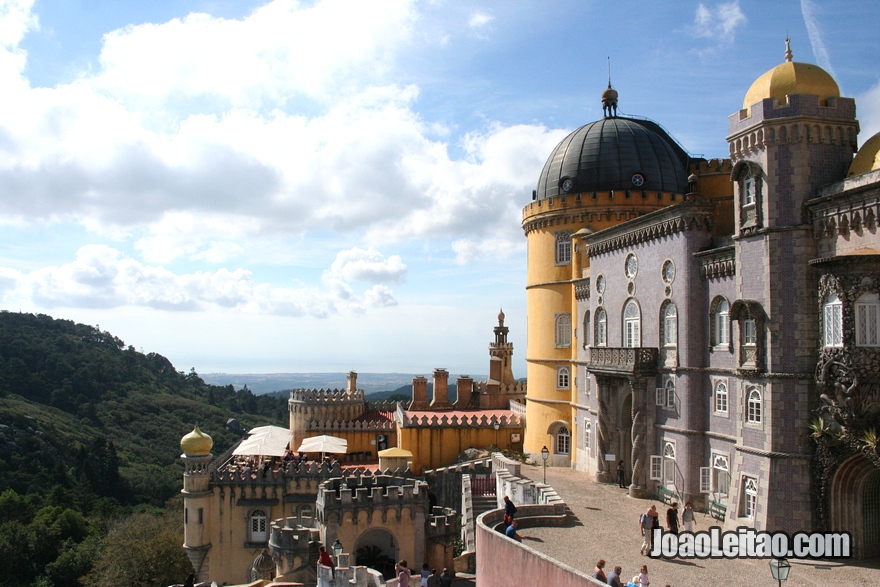
Sintra is a town that seems to have come out of a fairy tale. Sintra’s green landscape is featured here and there by majestic monuments. The Palace of Pena in Sintra is one of the most worldwide acknowledged Portuguese monuments which inspired the famous German castle Neuschwanstein, which consequently inspired the castles of Walt Disney.
What to visit in Sintra
- Park and National Palace of Pena
- Castle of the Moors
- Quinta Da Regaleira
- Park and Palace of Monserrate
- Palace of Seteais
- Adraga Beach
- National Palace of Sintra
- Sintra Museum of Modern Art
- Sintra Natural History Museum
- Convent of the Capuchos
- Chalet and Garden of the Countess of Edla
- National Palace and Gardens of Queluz
- Cabo da Roca
- Ursa Beach
2. Vinhais
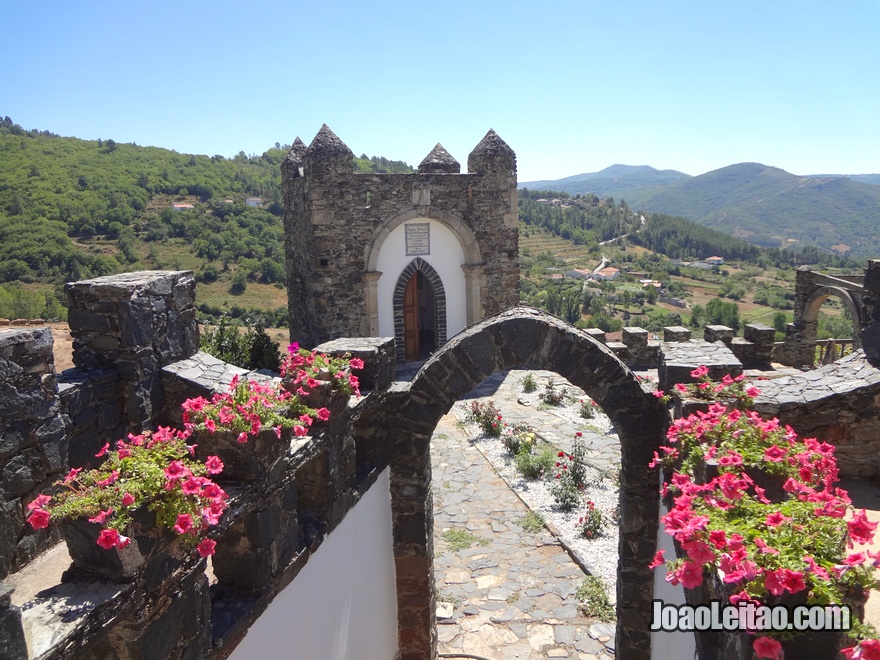
Vinhais is located in the region of Trás-os-Montes, within Montesinho Natural Park area. It is a place to enjoy the natural beauty and stone villages lost in the countryside.
What to visit in Vinhais
- Vinhais Castle
- São Francisco Convent
- Pillory
- Vilar de Ossos Palace
- Old Trees Route
- Montesinho Natural Park
- Corujeira Palace
- Town Hall and Former Prison
- Counts of Vinhais Palace
- Museum of Sacred Art
- Alto da Ciradelha Archaeological Site
- Charca of Vidoeira Biological Park
- Prada Dam
3. Vimioso
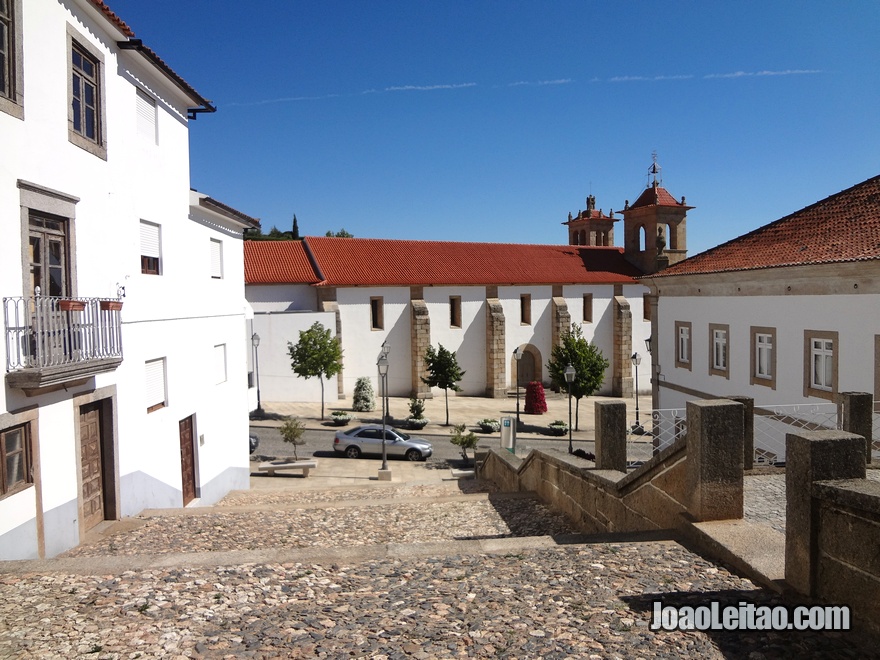
Vimioso is an ancient village with prehistoric remains, which suffered several invasions and has survived throughout the centuries keeping a rich cultural heritage such as the “Mirandês” dialect, which has been raised to the status of Portugal’s second official language.
What to visit in Vimioso
- Vimioso Parish Church
- Pillory
- Castro de Batoqueira Archaeological Site
- Vale de S. Miguel Archaeological Site
- Casa da Cultura
- Atalaia Tower
- Market of S. Lourenço
- Feira de Artes, Ofícios e Sabores
- Town Hall
- Nossa Senhora dos Remédios Chapel
- Atalaia Chapel
4. Vilar Maior
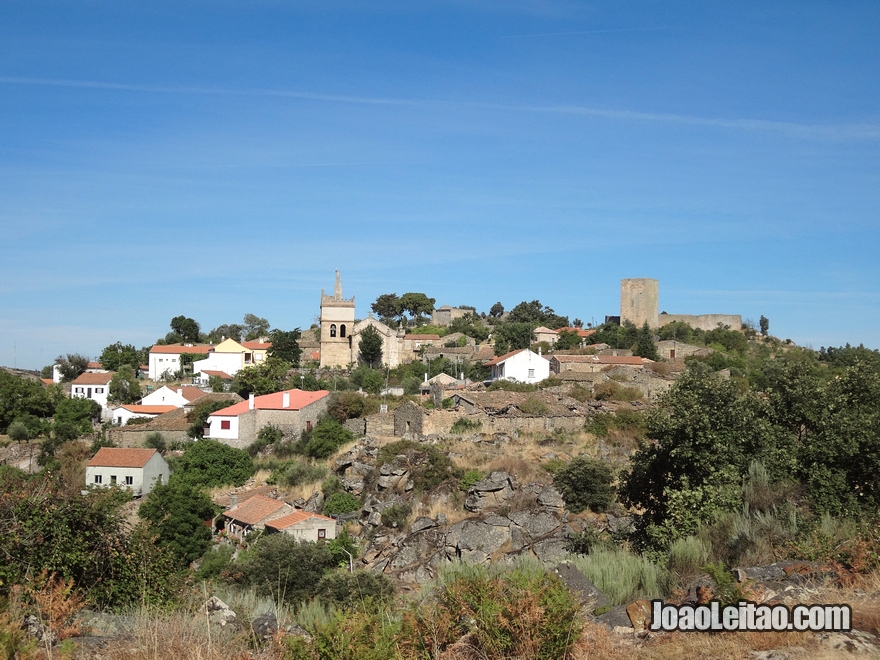
The Castle of Vilar Maior village was an important strategic defense point on the border of Kingdom of León (before being named Portugal). The medieval castle is the highest point of the village which is now sparsely inhabited.
What to visit in Vilar Maior
- Vilar Maior Castle
- São Pedro Parish Church
- Vilar Maior Pillory
- Santa Maria do Castelo Church
- Largo da Praça Square
- Medieval Bridge
- Rebochos Manor House
- Cesarão River
- Côa River
5. Lagos
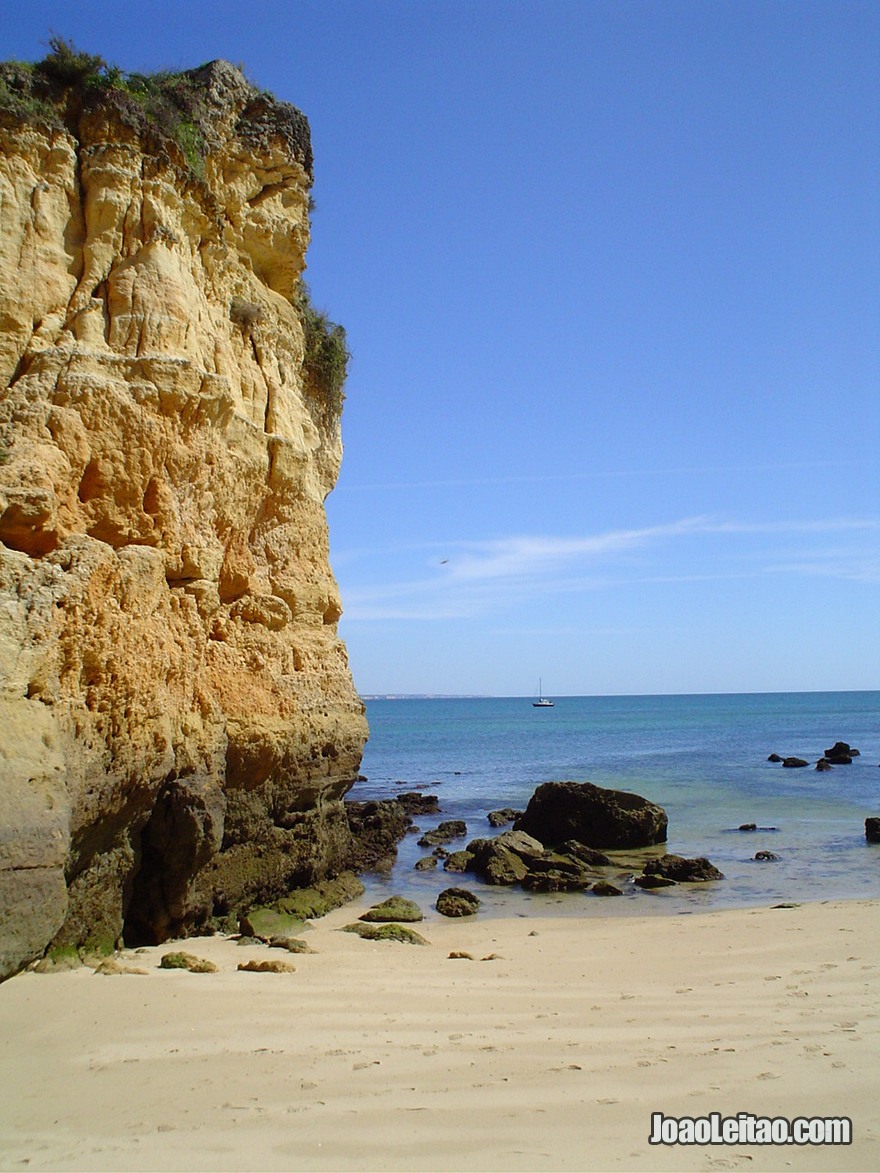
Lagos is the most picturesque city on the Algarve coast. Despite the large flood of tourists, this town did not suffer the loss of character that some cities in the Algarve have experienced due to mass tourism.
What to visit in Lagos
- Santa Maria Church
- D. Ana Beach
- Ponta da Bandeira Fortress
- Santo António Church
- Celtic ruins of Lacóbriga
- Governors’ Castle
- Infante D. Henrique Square
- Dr. José Formosinho Municipal Museum
- Lagos Pillory
- Town Hall
- Slave Market
- Meia Praia Beach
- Praia da Luz Beach
- Wax Museum of Portuguese Discoveries
- S. Sebastião Church
- Avenida Municipal Market
- King Sebastião Statue
- Statue of Explorer and Navigator Gil Eanes
- Infante D. Henrique Statue
- Marina of Lagos
- Nossa Senhora do Carmo Convent
- Old City Walls
- Regimental Warehouse
6. Zêzere Glacier Valley
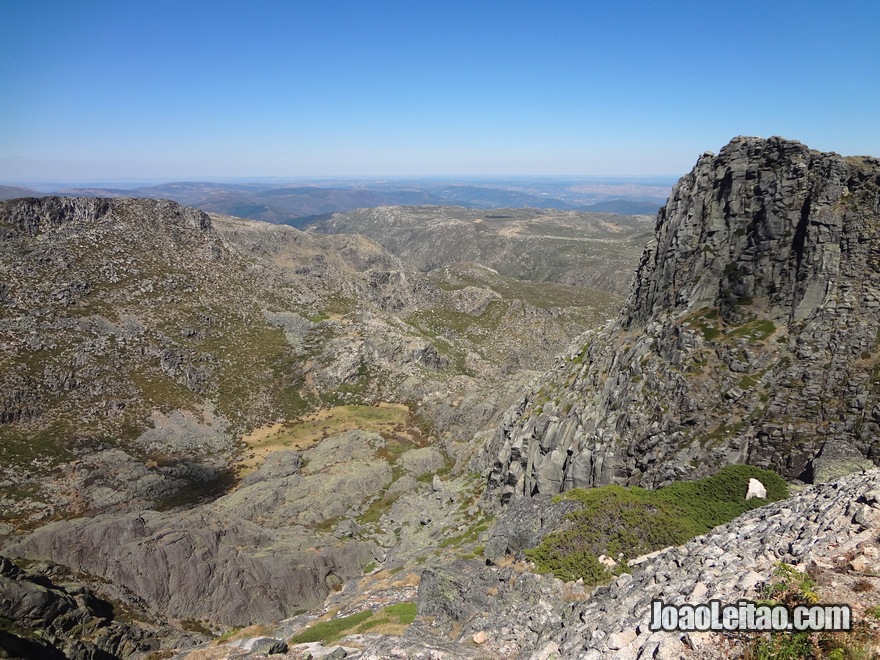
Zêzere Glacier Valley is the largest glacier valley in Europe and stands right in Serra da Estrela National Park. It is ideal for those who enjoy tourism within nature.
What to visit in Zêzere Glacier Valley
- Zêzere Glacier Valley Interpretive Center
- Covão d’Ametade Natural Site/li>
- Nave de S. António Natural Site
- Glacier Route
- Spa Town of Caldas de Manteigas
- Poios Brancos Route
- Palácio do Maciço Central Natural Site
- Wild Boar Route
- Quartelas Route
- Poço do Inferno Route
- Reboleira Route
7. Tomar
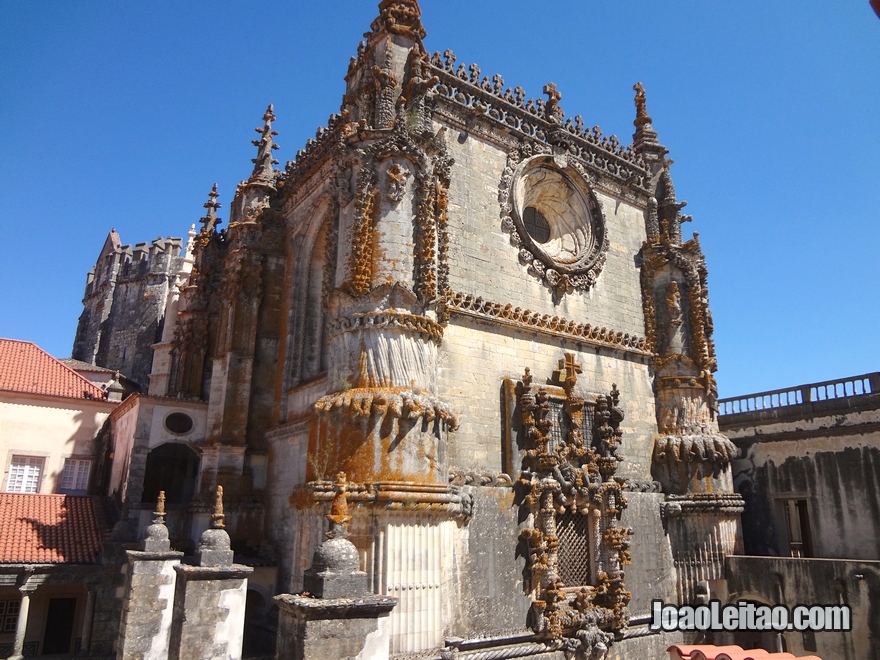
Tomar is known as the city of the Knights Templar, because it was offered by the King D. Afonso Henriques to the Knights Templar, after the conquest of the city from the Arabs in 1147. The Templar Castle and the Convent of Christ (with the famous window in “Manuelino” style) are some of the most important monuments in the history of Portugal.
What to visit in Tomar
- Convent of Christ
- Tomar Castle
- São João Baptista Church
- Tomar Synagogue
- Santa Maria dos Olivais Church
- Pegões Ancient Aqueduct
- National Forest of Seven Hills
- Contemporary Art Museum
- Castelo de Bode Dam
- Nossa Senhora da Conceição Chapel
- Casa dos Cubos
- Abraão Zacuto Hebrew Museum
- Palace of Alvaiázere
- Pillory Square
- Mouchão Park
- Monument with Coat of Arms
8. Sortelha
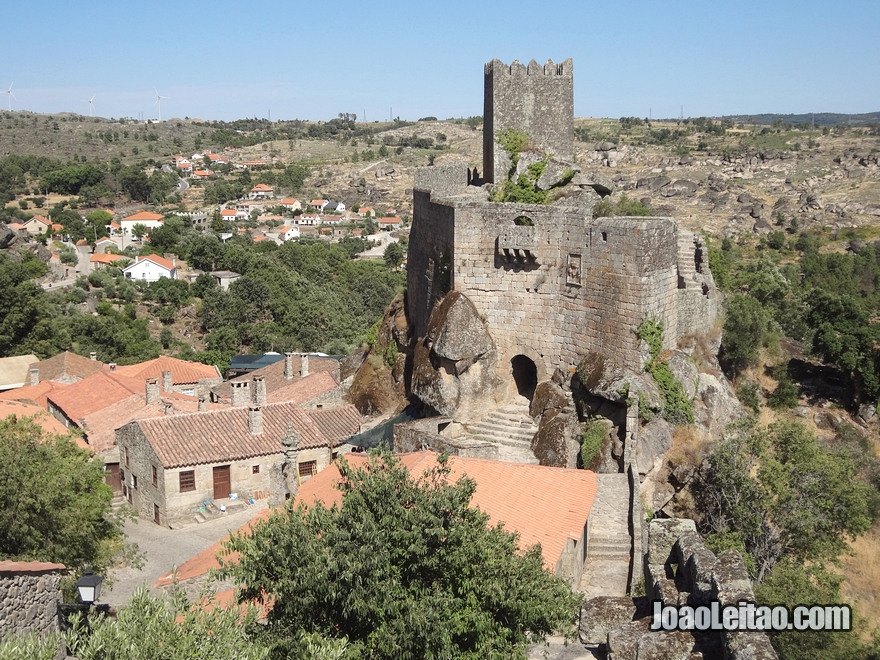
Sortelha is one of the historic villages of Portugal, with granite houses standing within the village outer wall, and the castle on top of the highest hill. Sortelha stands in Sabugal municipality, in the northern Portugal inland.
What to visit in Sortelha
- Cabeça da Velha Rock
- Arab House
- House with “Manueline” Style Window
- Town Hall and Prison
- Governor’s House
- Falcão House
- House Number One 1
- Castle and Walls of Sortelha
- Town Gate
- Castle Gate
- False Gate
- New Gate
- Medieval Paving
- Azenha Fountain
- Mergulho Fountain
- Misericordia Hospital Building
- Misericordia Church
- Sortelha Parish Church
- Station of the Cross
- Mouchão Park
- Pillory
- Parish Residence
- Anthropomophic Tombs
- Facho Tower
- Bell Tower
9. Vieira de Leiria Beach
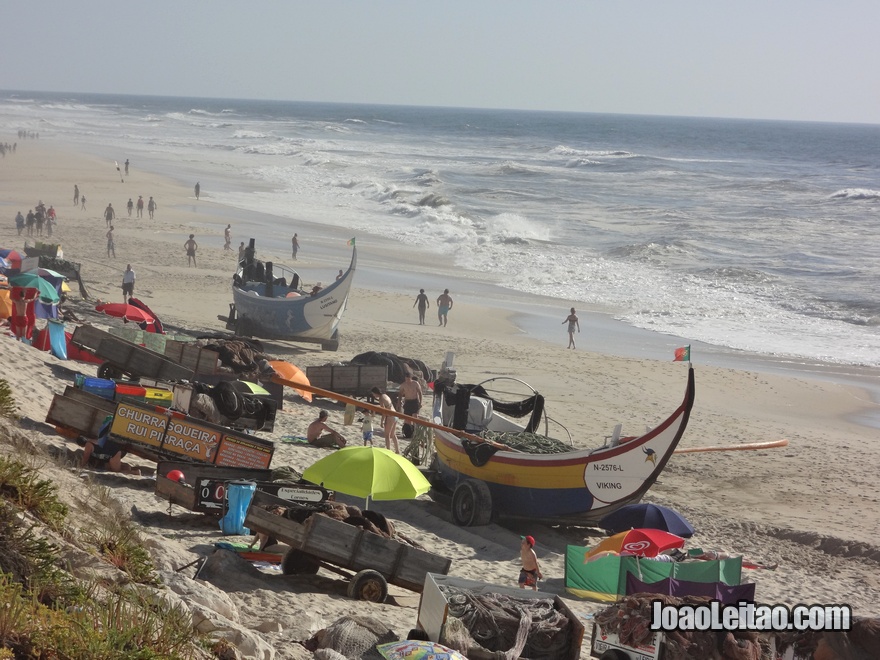
Vieira de Leiria is situated in the well-known Pinhal de Leiria (pine wood forest of Leiria) and it has a beautiful beach. The old fishing village gives the beach its picturesque look, and small fishing boats and traditional fishing equipment can still be seen on the beach. This type of fishing is called “Xávega” art and it uses encircling nets.
What to visit in Vieira de Leiria Beach
- Vieira de Leiria Parish Church
- Passagem Chapel
- Vieira Beach Chapel
- Traditional Houses
- Arte Xávega Monument
- Fisherman Monument
- Glassmakers Monument
- Ribeiro da Tábua Natural Site
- Lis River
- Sardão Fountain
- Popular Education Library
10. Soajo
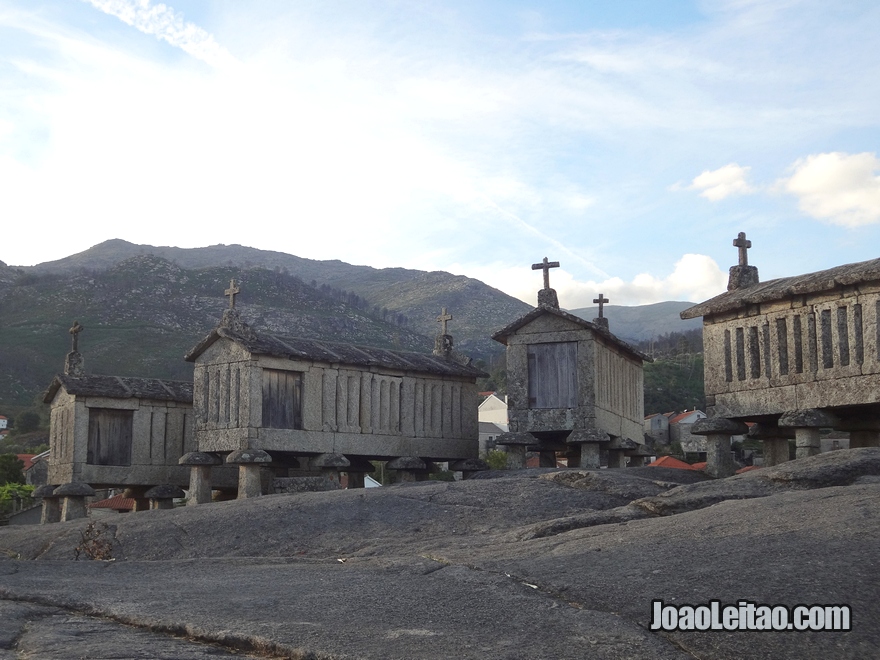
Soajo is a historic village which lies in the outmost north of Portugal, in Ponte da Barca municipality, inside Peneda-Gerês National Park. It is one of the most typical villages completely built of stone and with granaries, interesting stone storages on high stakes that are still used nowadays for drying corn.
What to visit in Soajo
- Soajo Granaries
- Souto House
- João Fidalgo House
- Eiró House
- Videiras House
- Soajo Parish Church
- Mezio Archaeological Site / Gião Interpretive Center
- Mezio Picnic Area
- Mezio Dolmen
- Pillory
- Medieval Paving
- Adrão River Lagoons
- Mezio Gate of Peneda Gerês National Park
11. Silves
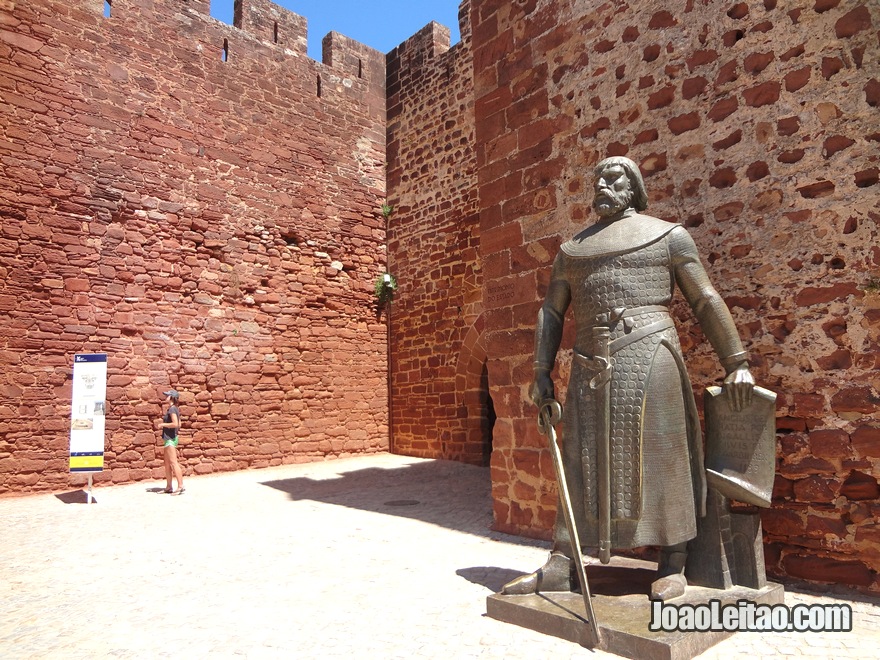
Silves was the capital of the Algarve until the 16th century. It has always been an important town because of its strategic location on the banks of Arade River.
What to visit in Silves
- Silves Castle
- Alcantarilha Castle
- Silves Cathedral
- Silves Old Bridge
- Nossa Senhora dos Mártires Chapel
- Municipal Archaeological Museum
- João de Deus House Museum
- House of Islamic and Mediterranean Culture
- Armação de Pera Beach
- Grande Oeste Beach
- Grande Este Beach
- Costumes and Traditions Museum
- Vilarinho Archaeological Route
- Silves Pedagogical Farm
- Algarb Islamic Heritage Interpretation Center
12. Serra da Estrela
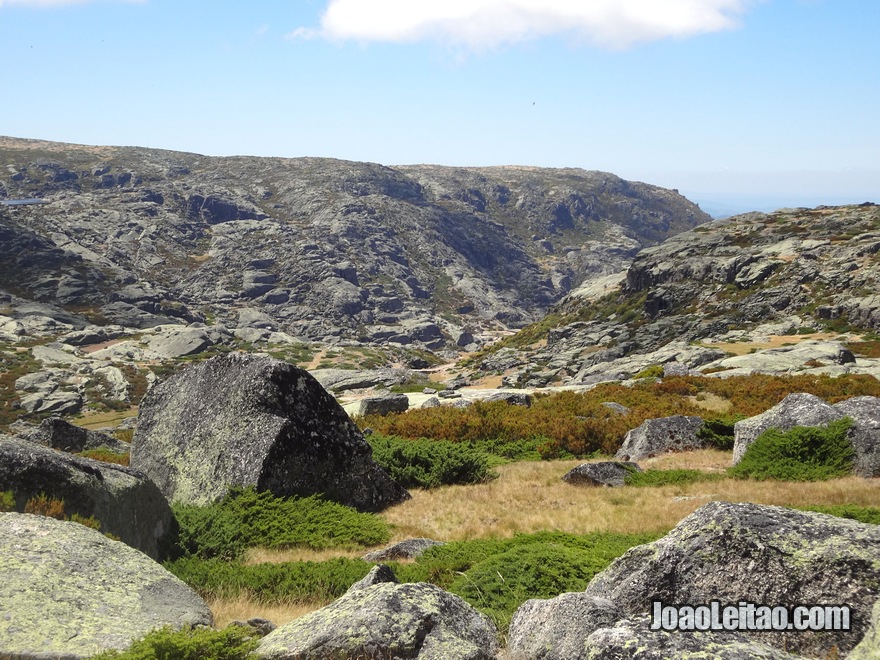
Serra da Estrela means “snow” for the majority of the Portuguese people, since it is the only ski resort in the country. In fact, the snow is a great attraction and during the winter months, when the mountain is covered with a white blanket, it offers breathtaking scenery.
What to visit in Serra da Estrela
- Serra da Estrela (Torre)
- Estrela Ski Resort
- Nossa Senhora da Boa Estrela Image
- Casais de Folgosinho Village
- Covão d’Ametade Natural Site
- Cântaro Magro Natural Site
- Cabeço do Velho Natural Site
- Cabeça da Velha Natural Site
- Folgosinho Village
- Valezim Village
- Pêro Soares Village
- Vide Village
- Lapa dos Pinheiros River Beach
- Mondego River
- Pedra do Urso Natural Site
- Rosa Negra Natural Site
- Penhas Douradas
- Penhas da Saúde
- Barriosa Village
- Cabeça Village
- Casal de Travancinha Village
- Manteigas Town
- Caldeirão
- Vale do Zêzere Glacier
- Loriga Terraces
- Dark Lagoon
- Bear Lagoon
- Round Lagoon
13. São Pedro de Moel Beach
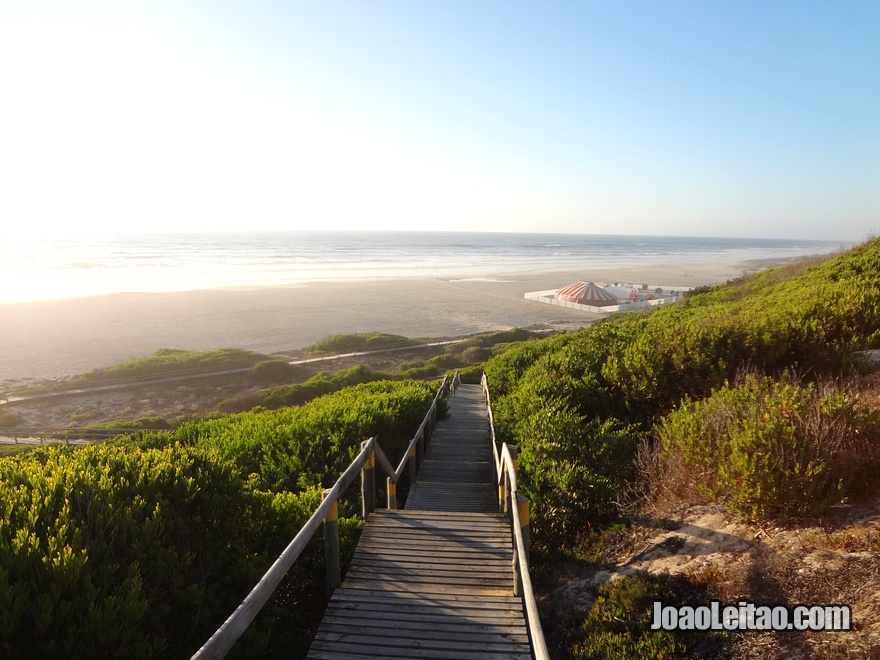
São Pedro de Moel has a long sandy beach and it is a very popular destination during the summer months. It is close to Marinha Grande, a city famous for the manufacturing of glass.
What to visit in São Pedro de Moel Beach
- D. Dinis and D. Isabel Statues
- São Pedro de Moel Lighthouse
- Garcia Chapel
- Amieira Chapel
- São Pedro de Moel Chapel
- Afonso Lopes Vieira House Museum
- Ribeiro de São Pedro de Moel
- Vale do Ribeiro Park
- São Pedro de Moel Beach
- Praia Velha Beach
- Samouco Beach
- Comboio de Lata Old Trail
- Coastline – Pedras Negras Footpath
- Coastline – Ribeiro de São Pedro Footpath
14. São João das Lampas
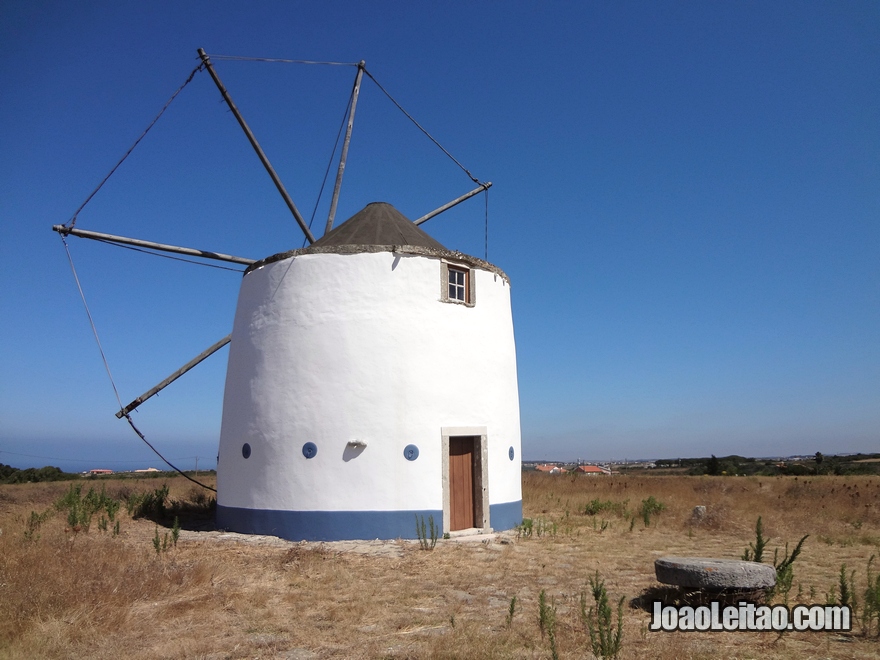
São João das Lampas is a town on the coast, north of Lisbon, in Sintra area. The town stands on top of the rugged coastline overlooking the sea. We can also find beautiful windmills along the coast.
What to visit in São João das Lampas
- Catribana Roman Bridge and Paving
- Fervença Waterfalls
- Buracas de Armés Archaeological Site
- Armés Roman Fountain
- Santa Maria Church
- Nossa Senhora da Esperança Church
- Nossa Senhora de Belém Chapel
- Nossa Senhora da Consolação Chapel
- São João Baptista Church
- Espírito Santo Chapel
- São João das Lampas Bandstand
- Farmer Statue
- Garden Square
15. Sanctuary of Fátima
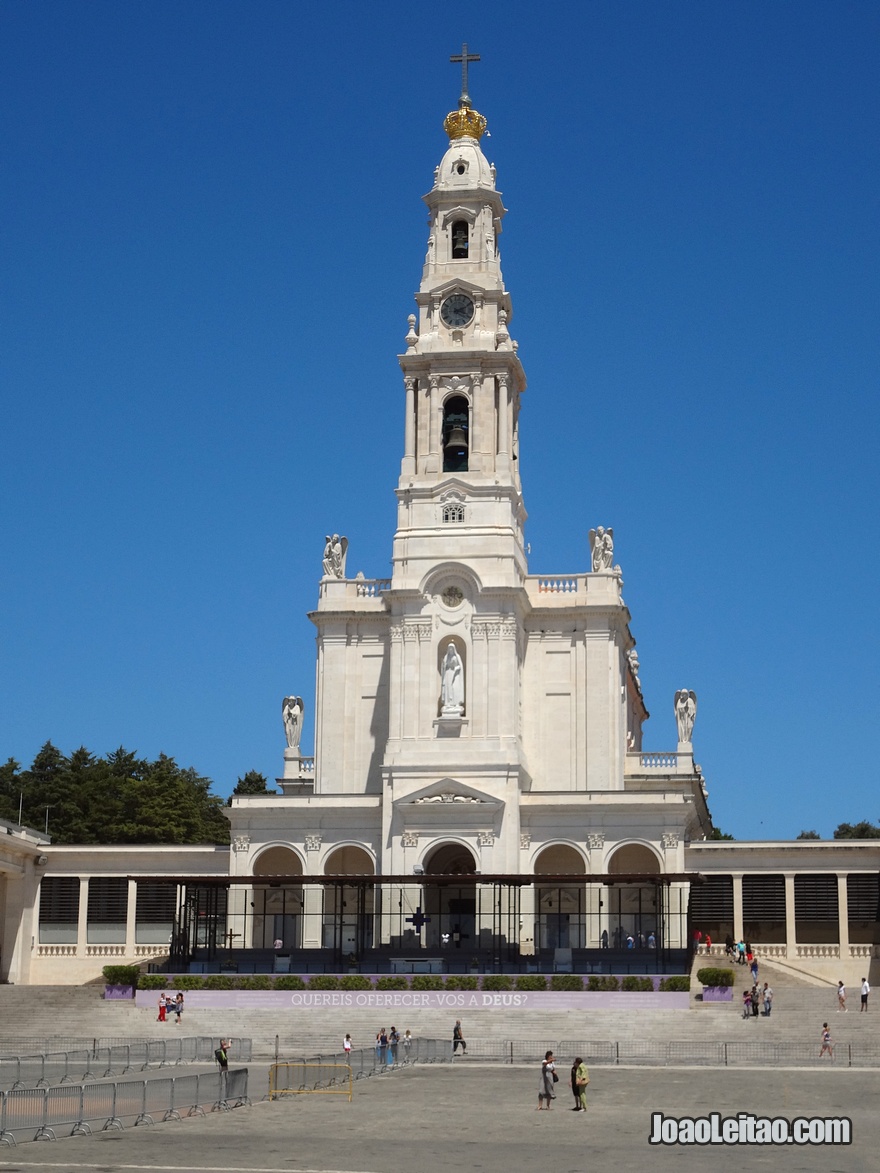
The Sanctuary of Fátima is located in Cova de Santa Iria, where the apparition of Virgin Mary occurred to three children (3 shepherds) on 13th May 1917. Every year great festivities are held there on this day, with millions of pilgrims attending the ceremony.
What to visit in Fatima
- Sanctuary of Fátima
- Chapel of the Apparitions
- Nossa Senhora do Rosário Basilica
- Way of the Cross of Valinhos
- Loca do Cabeço Site
- Aljustrel House Museum
- 3 shepherds House
- Fatima Parish Church
- Museum of the Shrine of Fatima
- Casa das Candeias
- Moedas Cave
- Fazarga Mills
- Pio XII Monastery
- Santa Cruz Monastery
- Fatima Wax Museum
- Religious Art and Ethnology Museum
- Olive Oil Museum
- Casal Farto Chapel
- Basilica of the Holy Trinity
16. Santa Justa
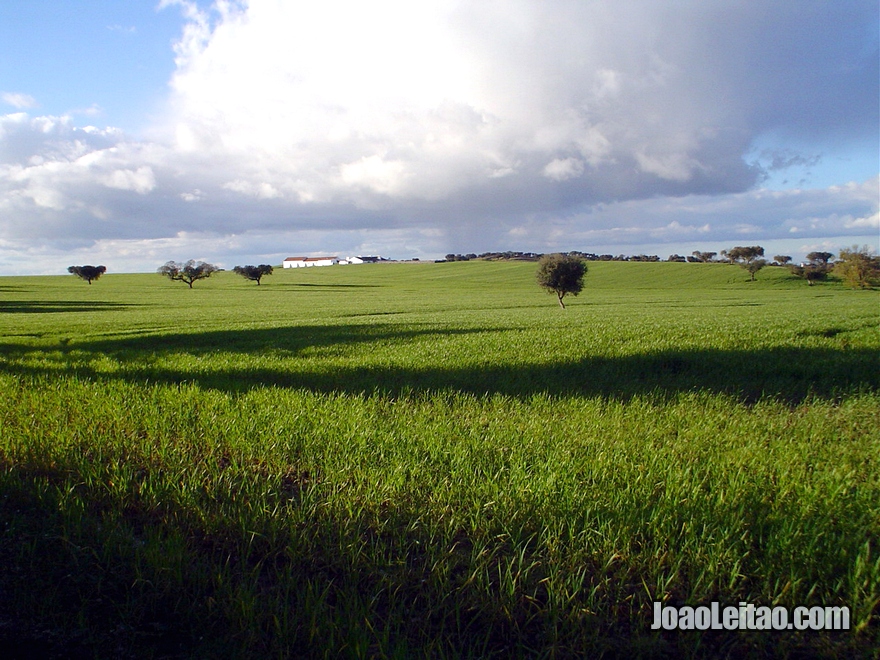
Santa Justa is a off the beaten path village in Alto Alentejo, in Évora district. With an old population, it conveys the typical quiet lifestyle of Alentejo villages. The endless fields, covered with a beautiful green mantle in Spring, feature the amazing landscape of Alentejo.
What to visit in Santa Justa
- Santa Justa Old Parish Church
- Old School
- Vale do Pereiro Village
- Evoramonte Village
17. Sagres
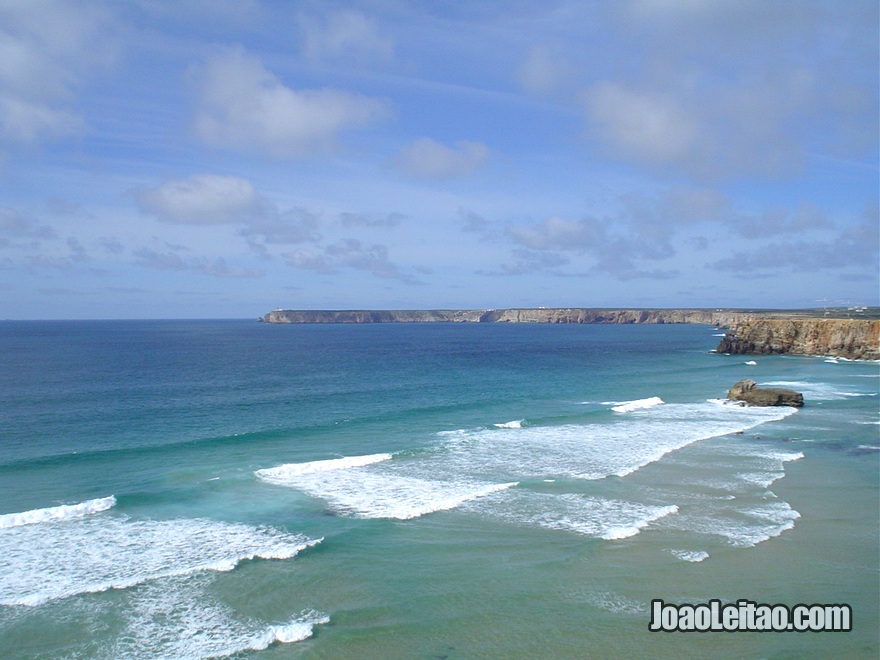
Cape St. Vincent is situated on the most southwestern point of Europe, where the Fortress of Sagres stands. From the top of the promontory we can enjoy the strong sea breeze and listen to the splashing waves.
What to visit in Sagres
- Sagres Fortress
- Baleeira Fortress
- Santo António de Belixe Fort
- Ponta de Sagres Lighthouse
- St. Vicent Lighthouse
- Nossa Senhora da Graça Church
- Sagres Point
- Cape St. Vicent
- Compass Rose
- Martinhal Beach
- Roman Ruins of Martinhal Beach
18. Sabugal
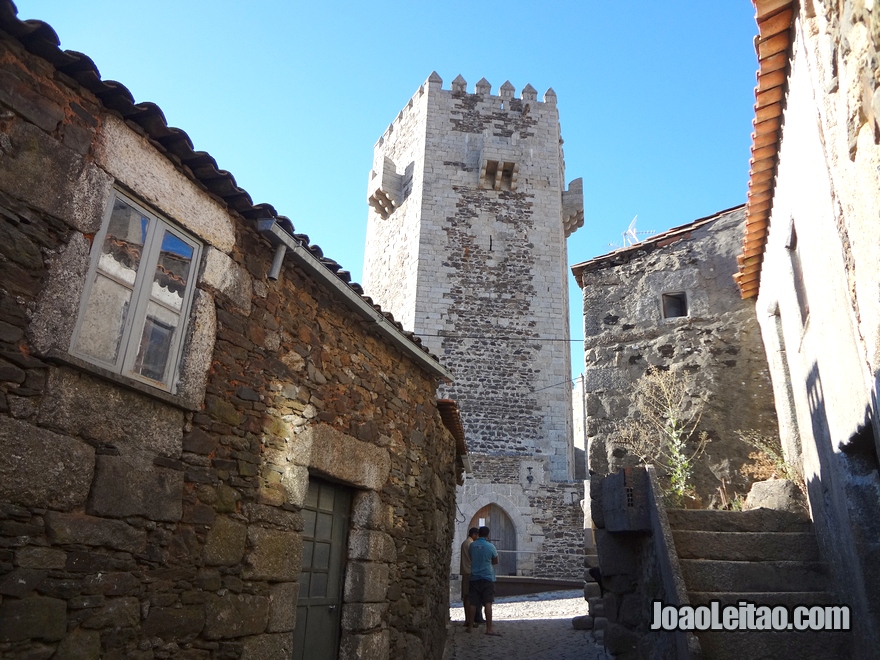
Sabugal is a small village in Portugal inland, near Serra da Estrela. It has a beautiful medieval castle, the only one with 5 corners, where, according to the legend of the miracle of roses, a well-known episode in the history of Portugal took place.
What to visit in Sabugal
- Sabugal Castle and Walls
- Pillory
- Centenários Calvary Cross
- Rainha House
- São João Church
- Sabugal Museum
- Fonte Velha Fountain
- Côa River Bridge
- Serra da Malcata Natural Reserve
- Sabugal Dam
19. Roman Ruins of São Tiago
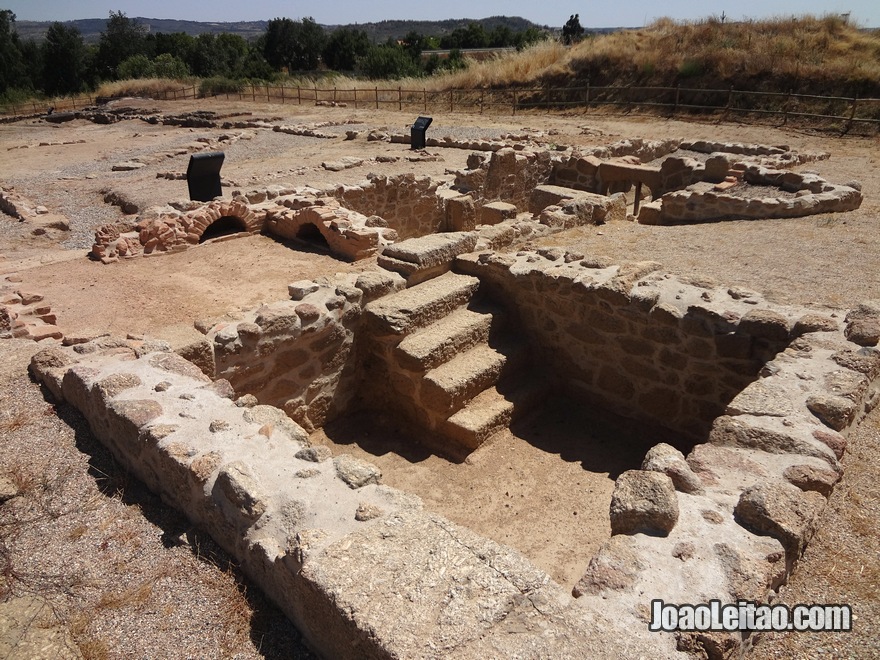
The Roman Ruins of São Tiago Cellas are an archaeological complex located in Alto de Santo Antão, in Belmonte municipality. Although it has been the subject of various legends, there is no accurate information about its history. The tower is the most emblematic building on the site.
What to visit in Roman Ruins of São Tiago Cellas
- São Cornelio Tower
- Archaeological Ruins
- Belmonte Historical Village
20. Centum Cellas Tower
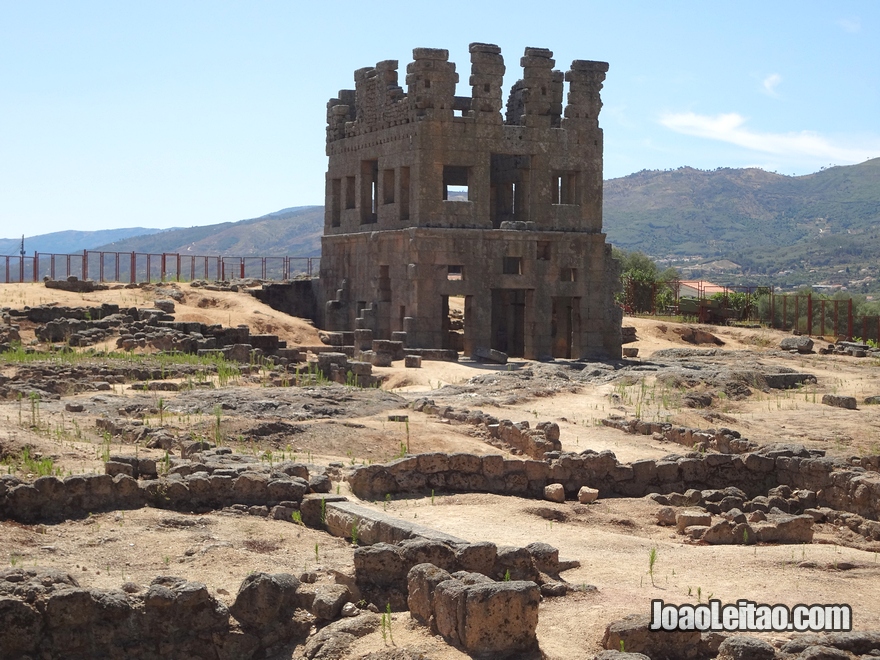
Centum Cellas Tower, also known as St. Cornelius Tower, is the best preserved building of the archaeological complex, so it is what stands out. The Tower, built around the first century AD, is believed to have been part of a Roman villa belonging to a wealthy citizen.
What to visit in Centum Cellas Tower
- São Cornelio Tower
- Archaeological Ruins
- Belmonte Historical Village
21. Pulo do Lobo Waterfall
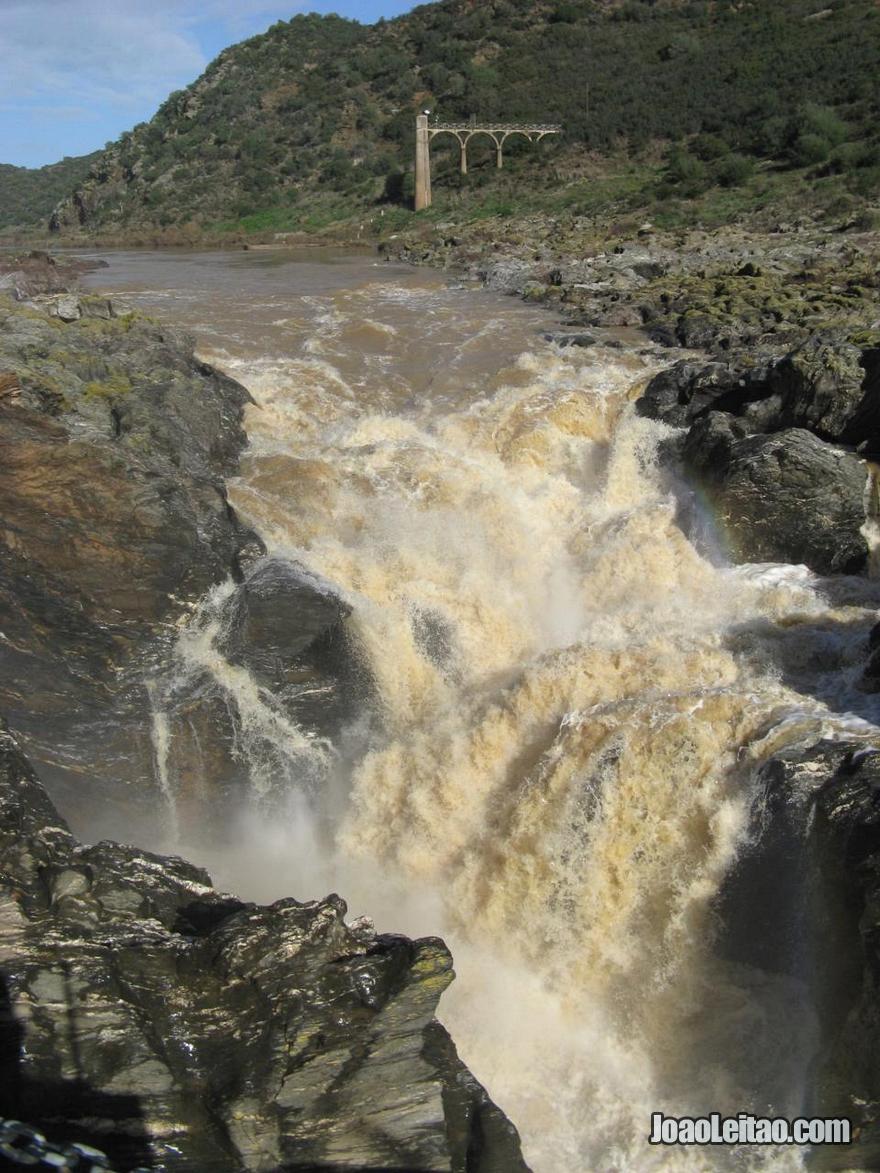
Pulo do Lobo has a waterfall of 20 meters high and stands in Beja district, in the Guadiana River route. It is a natural phenomenon uncommon in the south of Portugal.
What to visit in Pulo do Lobo Waterfall
- Pulo do Lobo Waterfall
- Guadiana River
- Pulo do Lobo River Beach
- Guadiana Valley Natural Park
- Mertola Village
22. Guincho Beach
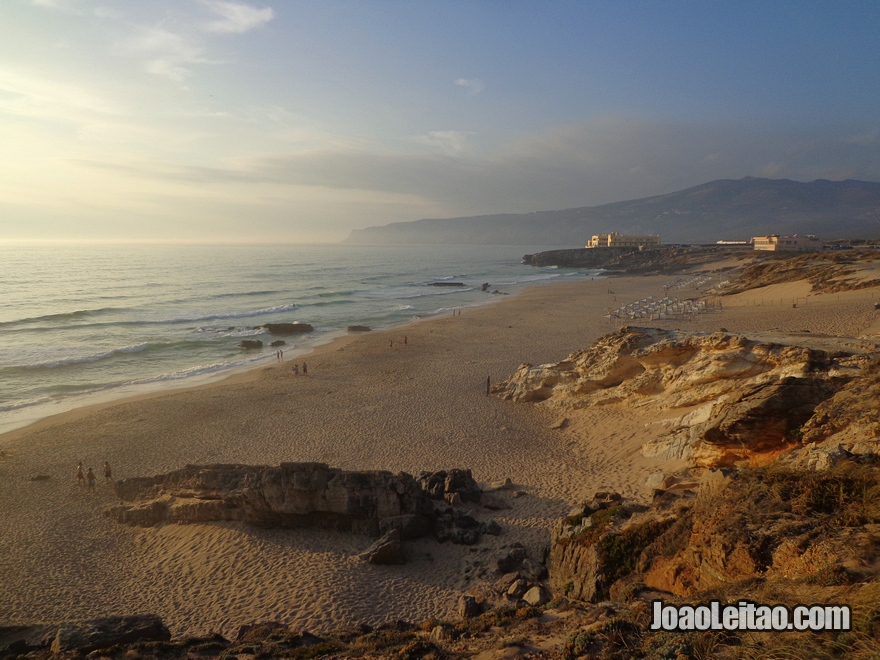
Guincho is known for being the surfers’ beach. It lies on the Atlantic coast, north from Lisbon. It has one of the best beaches in the world for surfing, windsurfing and kitesurfing.
What to visit in Guincho Beach
- Guincho Beach
- Guincho Fortress
- Sintra-Cascais Natural Park
- Agua Doce Beach
23. São Bernardino Beach
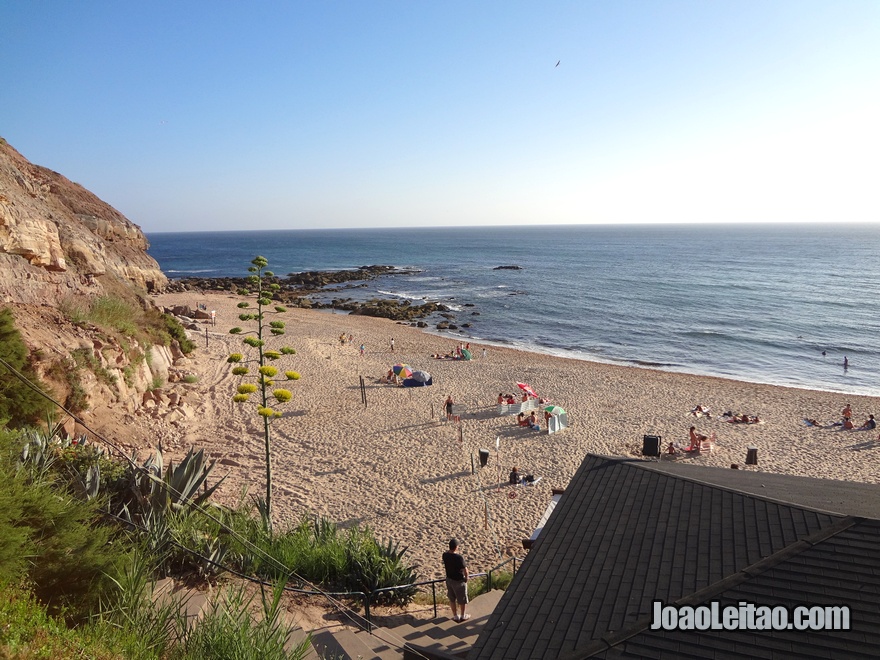
São Bernardino Beach is located on the west coast of Portugal, in Peniche area. Its beach is included in the “Jurassic Route”, a marked walking path where you can see footprints of those giants that inhabited our planet millions of years ago.
What to visit in São Bernardino Beach
- São Bernardino Beach:
- São Bernardino de Sena Convent:
- Santa Filomena Chapel
- Frades Beach
- City of Peniche
24. Carcavelos Beach
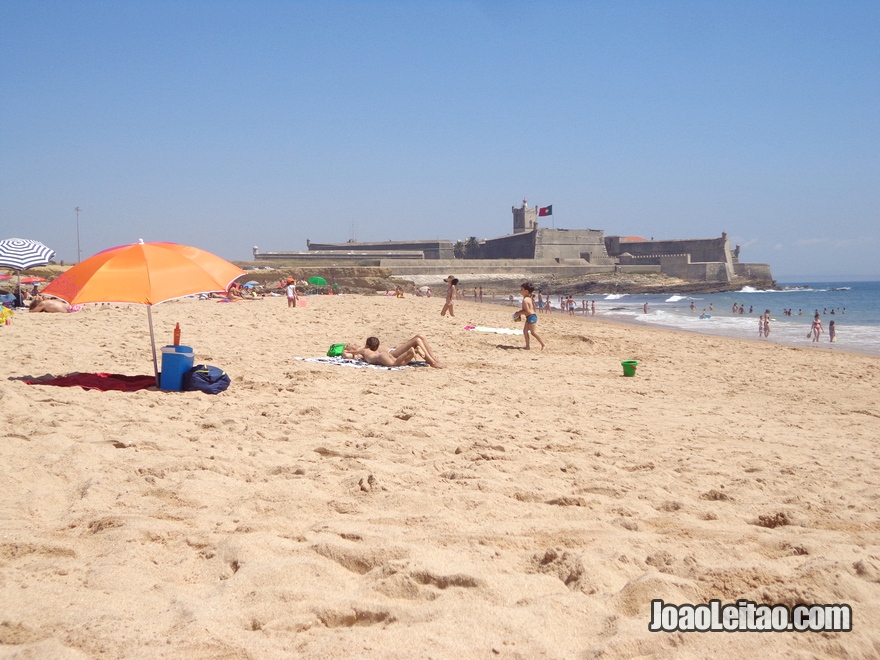
Carcavelos is famous for its beach, located on the Atlantic coast, west from Lisbon (Estoril line). It is a postcard image of Cascais with Fort of São Julião da Barra standing out in the background.
What to visit in Carcavelos Beach
- Carcavelos Beach:
- São Julião da Barra Fortress
- Torre Beach
- Tagus River (Mouth)
- Oeiras Marina
25. Torre
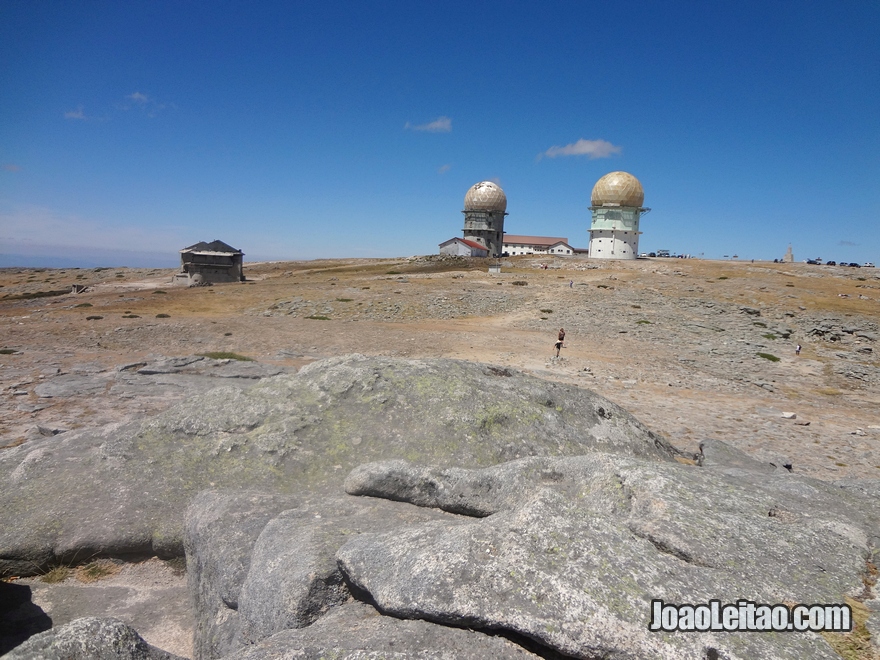
Torre (tower) is the highest point in mainland Portugal. In fact, it is a geodesic mark that indicates the highest point of Serra da Estrela, which naturally reaches 1993m high, but relying on the tower reaches 2000m (6561ft).
What to visit in Torre
- Serra da Estrela Torre
- Estrela Ski Resort
- Triangulation Station
- Serra da Estrela Natural Park
- Torre Shopping Mall
- Nossa Senhora do Ar Chapel
- Torre Chapel
- Senhora da Boa Estrela Sculpture
26. Pedras Negras Beach
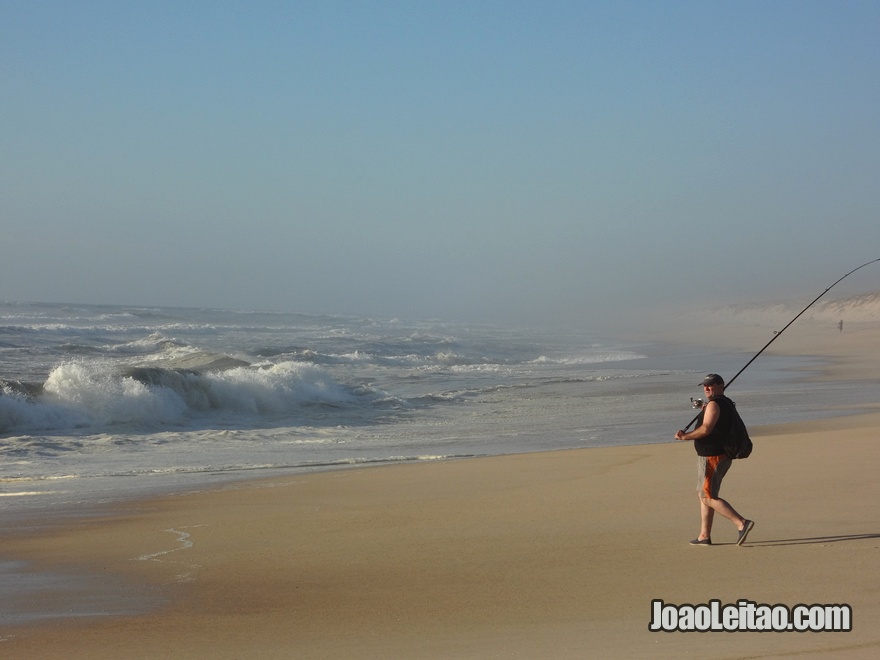
Pedras Negras is located in São Pedro de Moel municipality, and its beach consists of a huge sand area, with a long walkway over the dunes, which allows a pleasant stroll by the seaside.
What to visit in Pedras Negras Beach
- Pedras Negras Beach:
- São Pedro de Moel Village
- Pedras Negras Walkways
27. Praia das Maçãs Beach
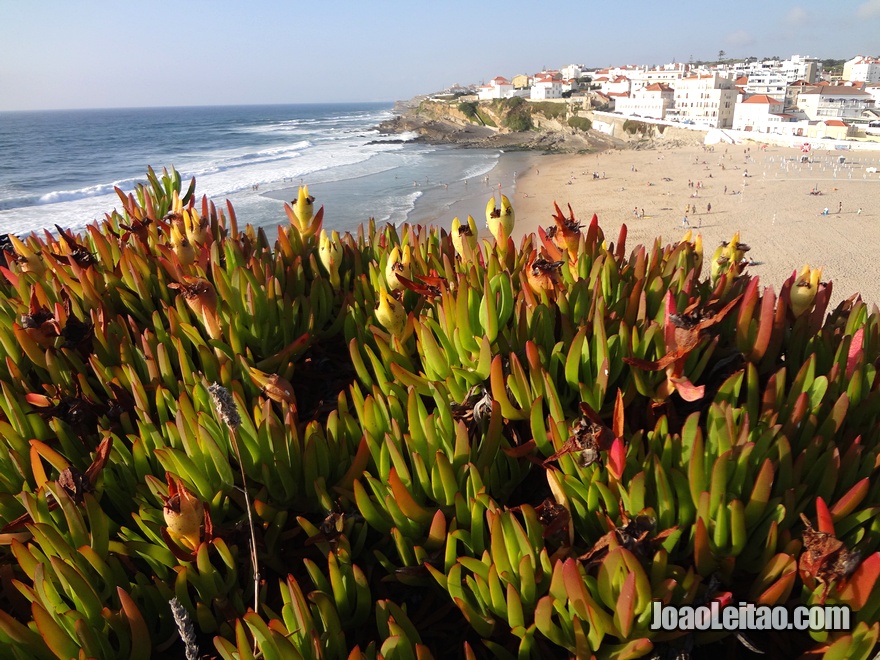
Praia das Maçãs is a well-known beach, where many scenes of classic Portuguese novels take place. As it is the closest beach to Sintra it was the hangout of the Portuguese socialite. It has an old tram that was the connection between the beach and the town of Sintra.
What to visit in Praia das Maçãs Beach
- Praia das Maçãs Beach
- Praia das Maçãs Beach Pool
- Ribeira de Colares
- Praia do Rodizio Small Beach
- Sintra Cascais Natural Park
28. Praia da Rocha Beach
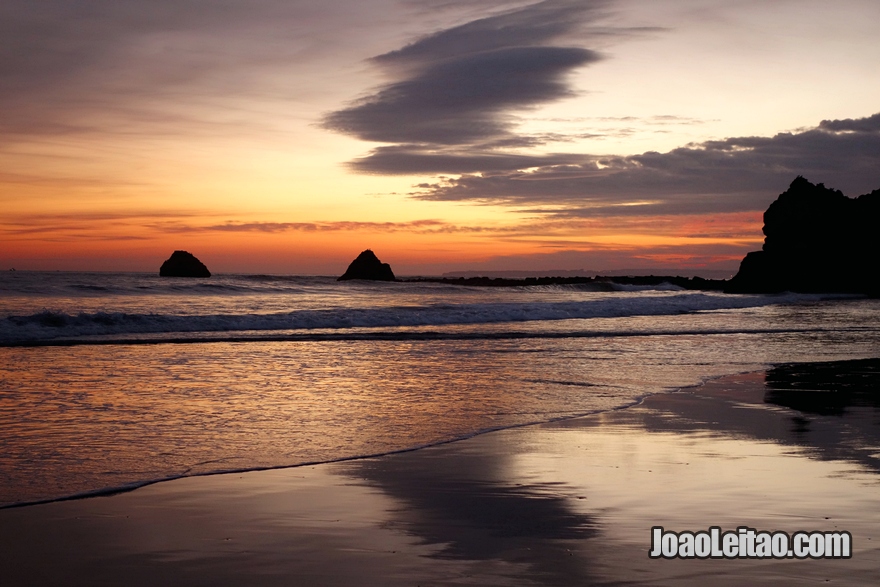
Praia da Rocha is the Algarve beach with the largest sand extension. Strolling the promenade we can see the beach below, with its vast sand area and many bars/ restaurants along the wooden walkway.
What to visit in Praia da Rocha Beach
- Praia da Rocha Beach
- Portimão Marina
- Santa Catarina Fortress
- Praia dos Três Castelos Beach
- Arade River
- City of Portimão
29. Comporta Beach
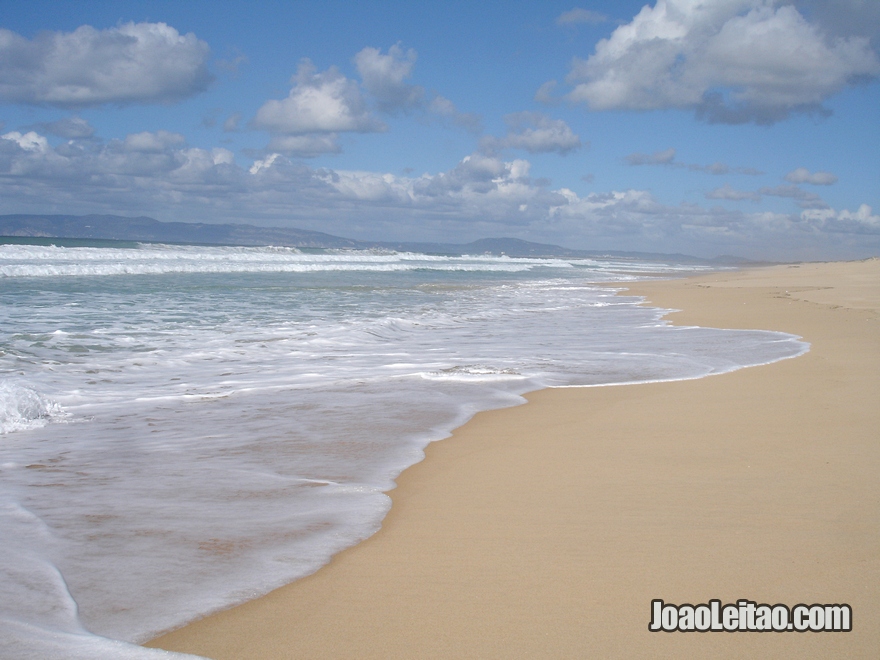
Comporta Beach still keeps its wild nature, in spite of the increasing influx of tourists that has taken place in the past few years, due to the construction of infrastructures to support tourism. It is a prime area near Lisbon.
What to visit in Comporta Beach
- Comporta Beach
- Sado Estuary Natural Reserve
- Rice Museum
- Herdade da Comporta Wine Cellar
- Herdade da Comporta
30. Oporto
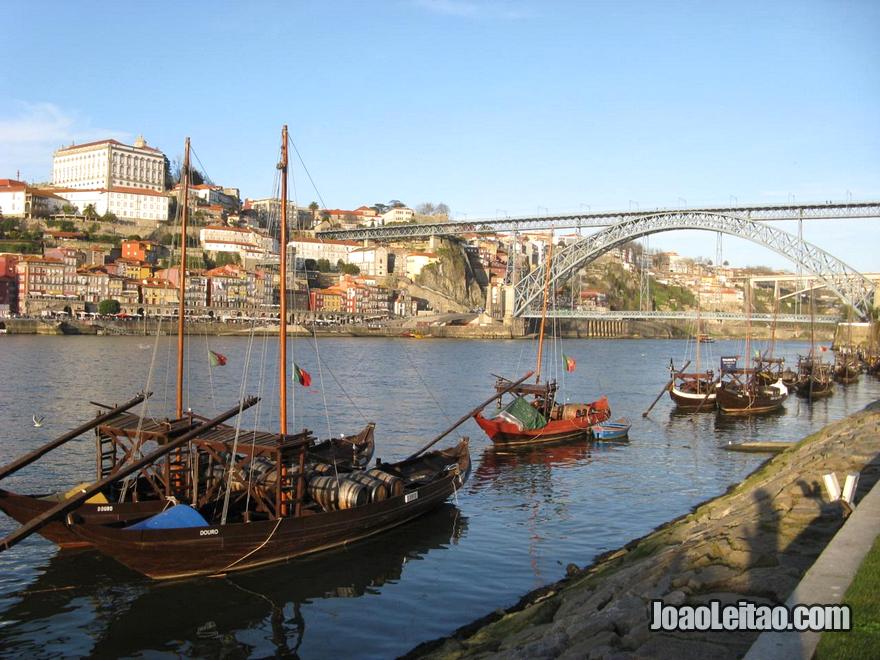
Porto (Oporto) is also known as “Invicta” city (Invincible in Latin) for having resisted the French invasions. Oporto is a unique city on the national scene: it is a large and cosmopolitan city with a village spirit. People from Oporto have strong feelings for their city that you cannot find elsewhere in Portugal. “Being from Oporto” is part of the character of a person who was born here.
What to visit in Oporto
- Porto City Hall
- Palácio da Bolsa
- Sé do Porto Cathedral
- São Francisco Church
- Avenida dos Aliados
- Kadoorie Synagogue
- Clérigos Tower
- D. Maria Pia Bridge
- D. Luís Bridge
- University of Porto Rectory
- São João National Theatre
- Rua de Santa Catarina Street
- Rua das Flores Street
- Ferreira Borges Market
- Coliseu do Porto
- Medieval Walls
- Casa do Cabido
- D. Pedro de Pitões Tower
- Rua das Taipas Fountain
- Casa dos Maias
- Carlos Alberto Square
- Leões Square
- Lello Library
- Batalha Square
- Serralves Foundation
- Cedofeita Church
- São Lazaro Garden
- Casa da Musica
- Palácio de Cristal Gardens
- Bolhão Market
- Ribeira Square
- São Bento Railway Station
- Porto Wine Museum
- Porto Tram Museum
- Casa do Infante
- Soares dos Reis National Museum
- Porto Military Museum
- Portuguese Centre of Photography
- Alfandega Building
- Campo Alegre Theatre
- Museum of Transport and Communication
- Santa Clara Church
- Santo Ildefonso Church
- São Nicolau Church
- São Lourenço Church
- Sacred Arts Museum
- National Press Museum
- Rivoli Theatre
- Sá da Bandeira Theatre
- Contemporary Art Museum
- Cordoaria Garden
- Mouzinho de Albuquerque Square
31. Porto de Mós
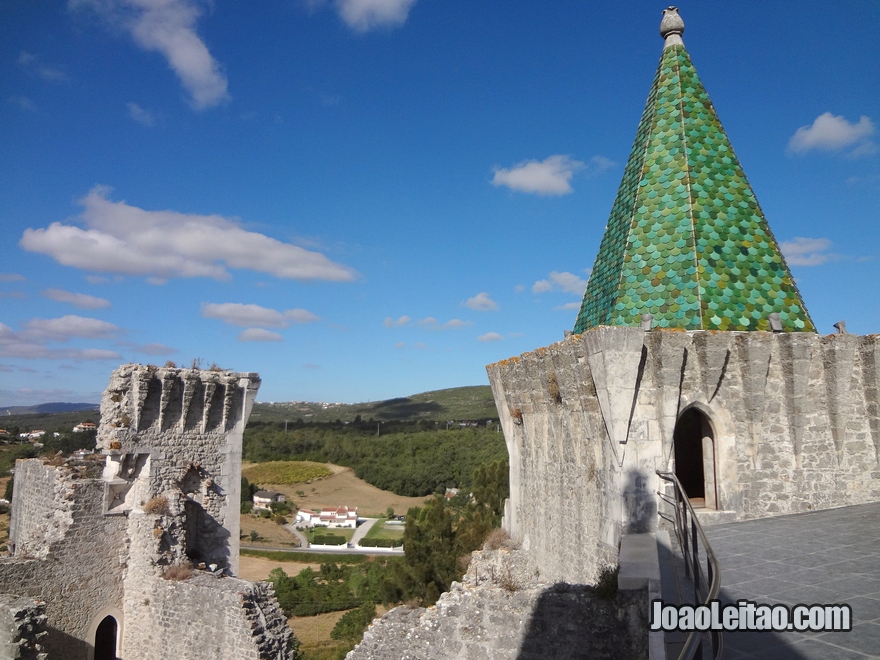
Porto de Mós is a village in the west central region of Portugal. The village landscape is dominated by the castle on the hill around which the settlement lies. The castle has a medieval style with two pinnacle towers, covered by green tiles, which is an unusual feature in Portugal.
What to visit in Porto de Mós
- Porto de Mós Castle
- São Pedro Church
- São João Church
- Santo António Chapel
- São Jorge Chapel
- Arrimal Lagoon
- São Bento Jurassic Beach
- São Silvestre Chapel
- Mira de Aire Caves
- Alvados Caves
- Santo António Caves
- Aljubarrota Battle Interpretation Centre
- Arco da Memória Monument
- Fórnea (Chão das Pias) Archaeological Site
- Pillory
32. Portimão
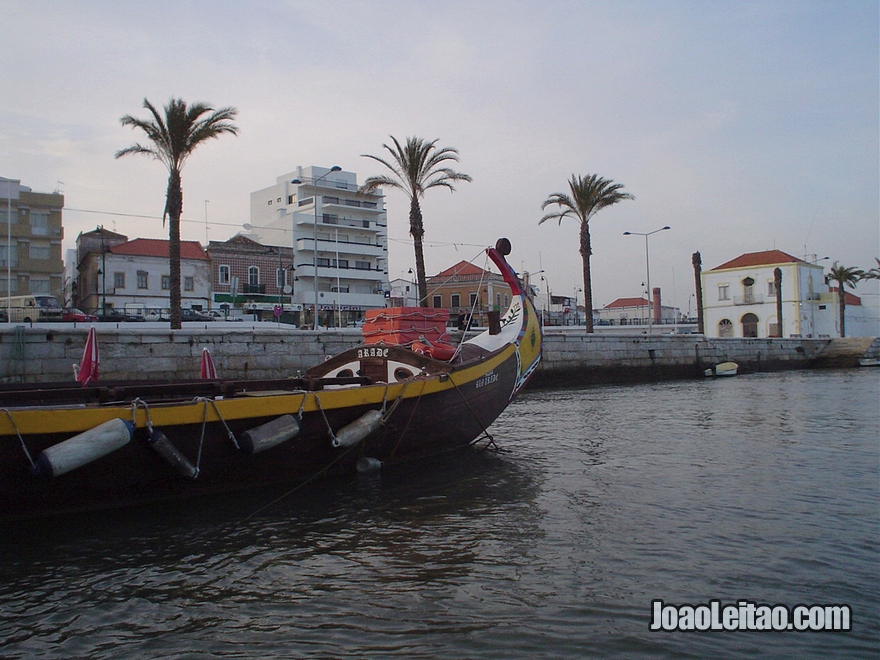
Portimão is a city on the Algarve coast. Despite being a mass tourism destination, it stills keeps more typical features of the Algarve than any other urban center of the region. Fishing is still the main economic activity, right after tourism, and it is the best place to eat the typical charcoal grilled sardines.
What to visit in Portimão
- Municipal Theatre
- Mó Square
- Portimão Museum
- São José Chapel
- Senhora do Amparo Chapel
- São Francisco Convent
- Manuel Teixeira Gomes House
- Bandstand
- Sarrea Gárfeas Palace
- Manuel Teixeira Gomes Square
- Santa Catarina Fortress
- Alvor Lagoon
- Arade River
- Ponta João Arens
- Portimão Marina
- Três Castelos Scenic Viewpoint
- Pedagogical Farm
- Colégio dos Jesuitas Church
- Bivar Palace
- Parish Church
- Praia da Rocha Beach
- Marina Beach
- Três Castelos Beach
- Careanos Beach
- Vau Beach
- Alemão Beach
- Prainha Beach
- Três Irmãos Beach
- Torralta Beach
- Alvor Beach
- Megalithic Monuments of Alcalar
33. Piódão
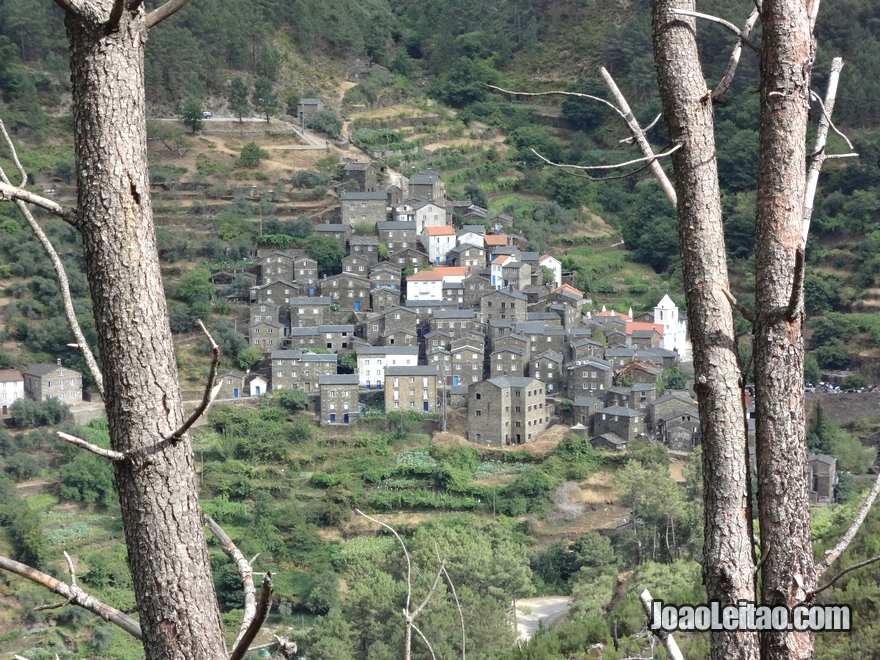
Piodão is a small historic village located in Serra do Açor, in Arganil municipality. The houses are made of shale, with roofs of slabs and blue wooden doors. The houses are organized in terraces on the hillside, looking like a nativity scene.
What to visit in Piódão
- Parish Church
- São Pedro Chapel
- Almas Chapel
- Threshing Floor
- Algares Fountain
- Tourist Office and Museum
- Santa Barbara Chapel
- Piódão River Beach
- Açor Wind Farm
- Nicho das Almas Monument
- M. F. Nogueira Sculpture
34. Peniche
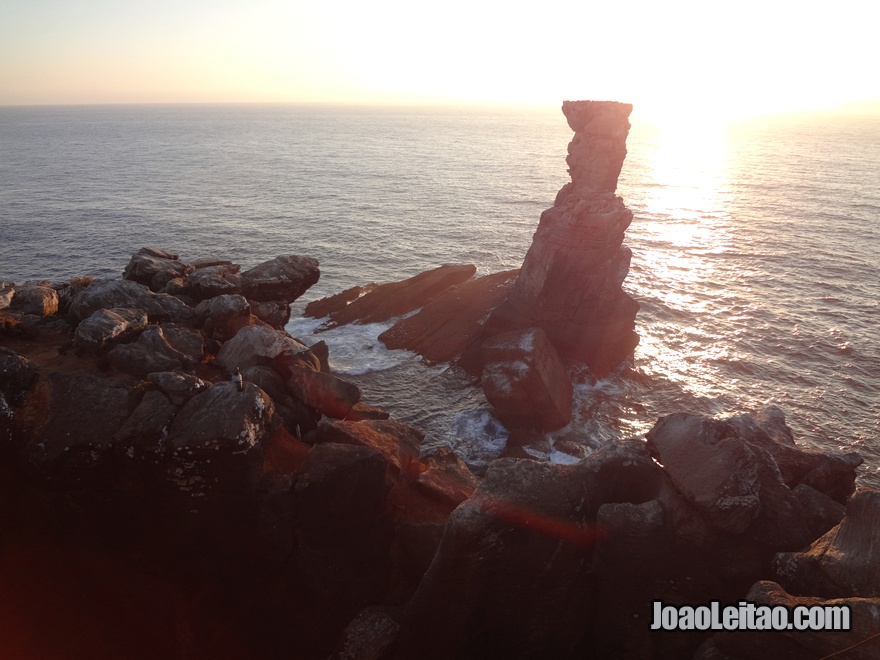
Cabo Carvoeiro, in Peniche, is the westernmost part of Portugal, after Cabo da Roca. The Fortress of Peniche is a mandatory stopover on a visit to this city. Peniche is traditionally a fishing town and it keeps the simple character of its people.
What to visit in Peniche
- Peniche Fortress
- São Pedro Church
- Nossa Senhora da Conceição Church
- Misericórdia Church
- Nossa Senhora dos Remédios Chapel
- São Leonardo Church
- Praça Forte Square
- Gothic Fountain
- Atouguia da Baleia Pillory
- Nossa Srª da Conceição Church
- Peniche Walls
- Cabo Carvoeiro Cliff
- Cabo Carvoeiro Lighthouse
- Furninha Cave
- Peniche Municipal Museum
- Consolação Beach
- Gamboa Beach
- Baleal Beach
- Supertubos Beach
- Peniche de Cima Beach
- Peniche de Baixo Beach
- Berlengas Island
- Morracal da Ajuda Archaeological Site
35. Penhas Douradas
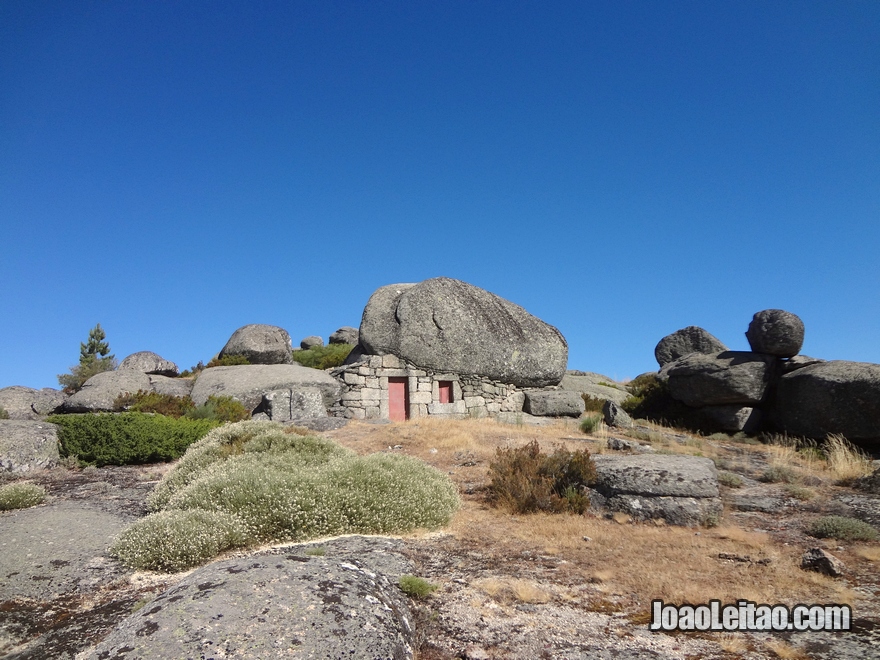
Penhas Douradas is located in Serra da Estrela region and it is a very rocky area, where you can see large granite geological formations (from which derives its name: “penhas” means rocks). The villages in this region are quite isolated from each other and they are camouflaged in the rocky landscape.
What to visit in Penhas Douradas
- Serra da Estrela Natural Park
- Praia das Maçãs Beach Pool
- Fragão do Corvo Scenic Viewpoint
- Manteigas Village
- Penhas Douradas
- Penhas da Saúde
36. Penha de Prados
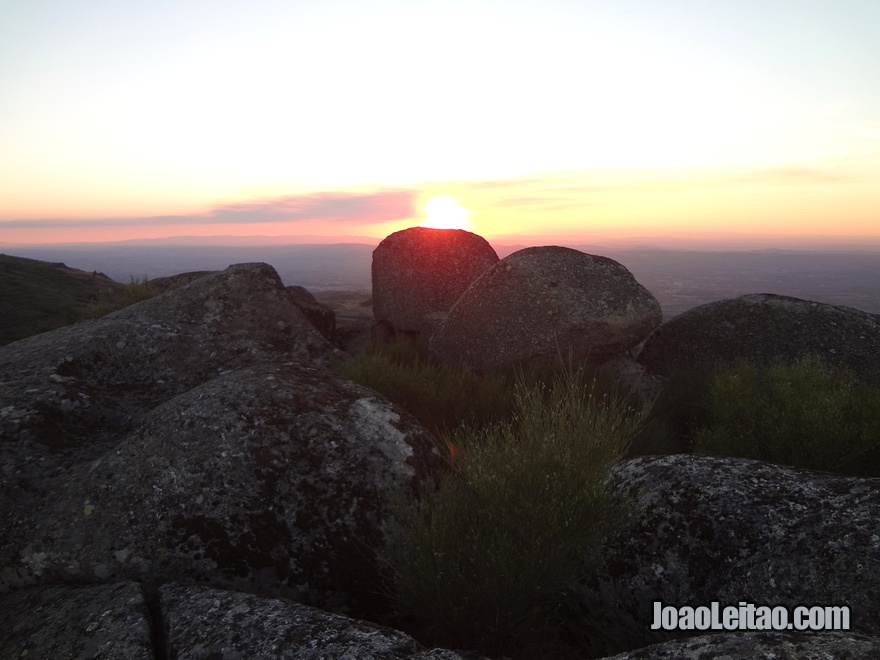
Penha dos Prados stands in Celorico da Beira municipality and it is an excellent natural viewpoint, because the village is at an altitude of 1100m, from where you can see over the Mondego Valley, which stands at about 500m above sea level.
What to visit in Penha de Prados
- Penha de Prados Scenic Viewpoint
- Linhares Village
- Serra da Estrela Natural Park
- Prados Parish Church
- São Sebastião Chapel
- Cano Fountain
37. Penedo Durão
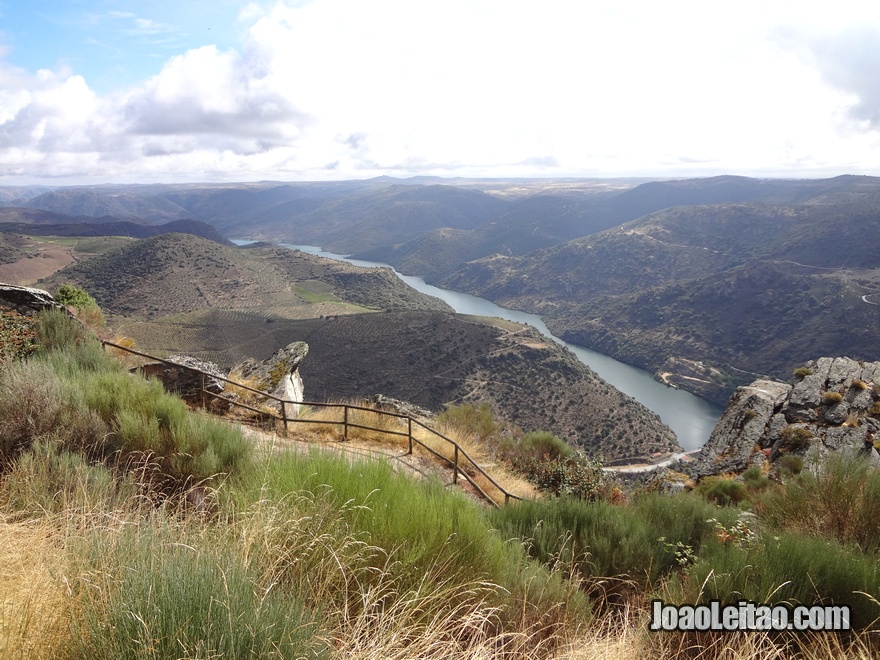
Penedo Durão is situated in Freixo de Espada à Cinta municipality, right in Douro International National Park, on the border with Spain. Penedo Durão is a natural viewpoint with wonderful views over Douro River and it has a terrace structure which enables gorgeous scenery. Birds of prey like eagles, vultures and falcons can be often seen in the area.
What to visit in Penedo Durão
- Penedo Durão Scenic Viewpoint
- Bird Observation Route
- Freixo de Espada à Cinta Village
- Douro River
38. Penamacor
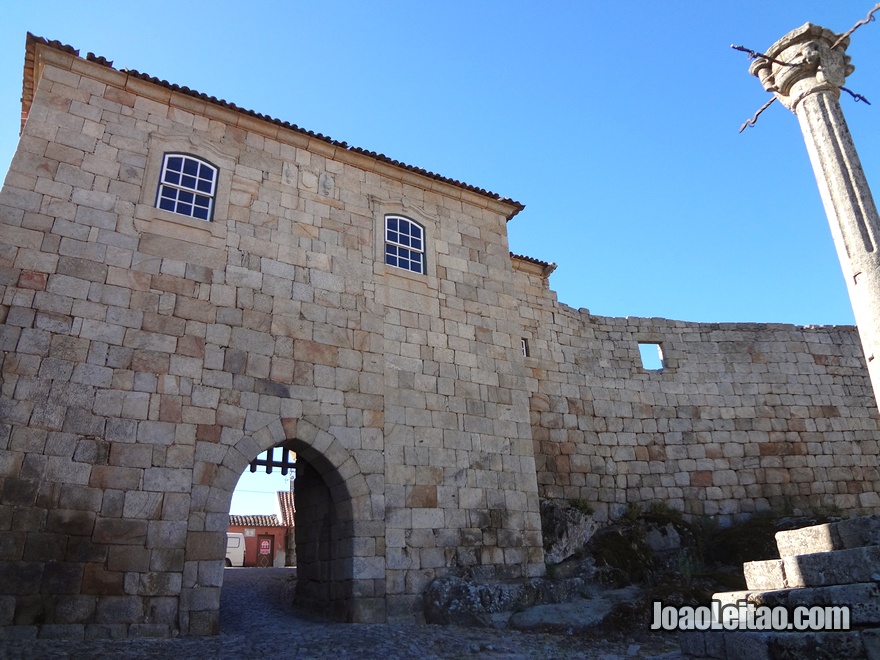
Penamacor is a village which lies in the district of Castelo Branco. The village received its first charter in 1189 by King D. Sancho I and retains some medieval heritage such as the Penamacor Castle, the Dungeon, the Pelourinho and the Misericórdia Church. From the top of the Castle walls, we can have the best panoramic view over the village.
What to visit in Penamacor
- Penamacor Castle
- Municipal Museum
- Mário Bento Museum
- São Domingos Chapel
- Nossa Senhora da Conceição Chapel
- Santo Cristo Chapel
- Conde e Osórios Palace
- Old Town Hall
- Clock Tower
- Pillory
- Santo António de Penamacor Convent
- Combatentes da Grande Guerra Monument
- Frade Fountain
- Seninho Winery
- Pina Ferraz Institute
- Ramalhão Archaeological Site
- Ribeiro Sanches Sculpture
- Calvary Sculpture
- Serra da Malcata Natural Reserve
- São Tiago Church
- Misericórdia Church
39. Dinosaur Footprints of Serra de Aire
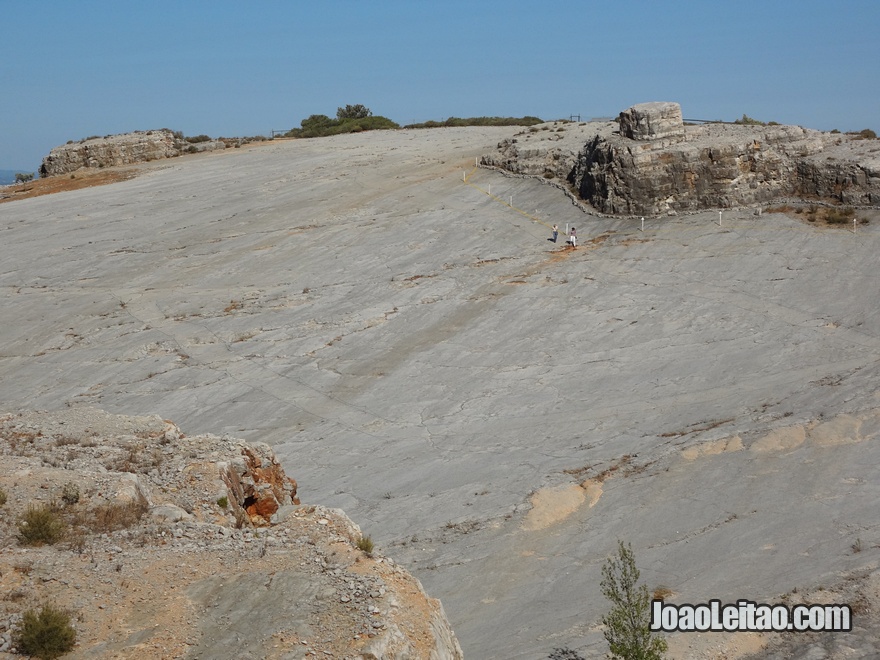
The Natural Monument of Dinosaur Footprints of Serra de Aire is in Serra de Aire e Candeeiros Natural Park, about 10 km away from Fátima. It is an important legacy that remains from the Jurassic period till nowadays. Dinosaur footprints were pressed in a swampy ground that later dried out and left these marks in history.
What to visit in Dinosaur Footprints of Serra de Aire
- Serra de Aire Natural Park
- Jurassic Gardens
- Dinosaur Footprints
40. Douro International Natural Park
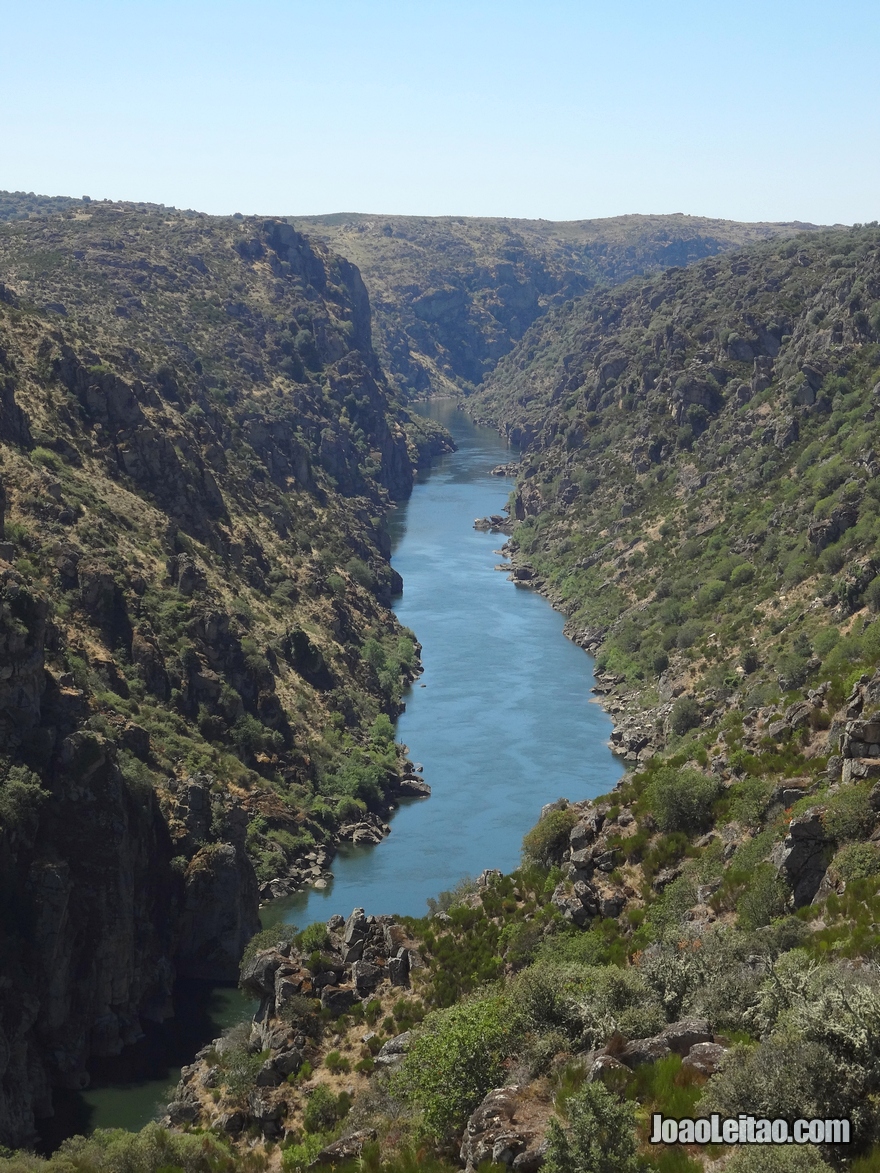
Douro International Natural Park is a natural reserve area and its main attraction is Douro River, which is a natural border between Portugal and Spain. It runs along 122 km in the districts of Bragança and Guarda.
What to visit in Douro International Natural Park
- Miranda do Corvo Old Town
- Terra de Miranda Museum
- São João de Arribas Scenic Viewpoint and Picnic Park (Aldeia Nova)
- Paradela Dovecotes
- Bemposta Village
- Santa Barbara Viewpoint (Bemposta)
- Freixo de Espada à Cinta Old Town
- Carrascalinho Viewpoint (Fornos)
- Colado Viewpoint (Mazouco)
- Congida River Beach
- Cruzinha Viewpoint (Lagoaça)
- Penedo Durão Viewpoint (Poiares)
- Santa Maria de Aguiar Dam (Almofala)
- Alto da Sapinha Viewpoint (Escalhão)
- Barca d’Alva Railway Station
- Barca d’Alva Quay
- Santo André Scenic Viewpoint (Almofala)
- Douro River
41. Alvão Natural Park
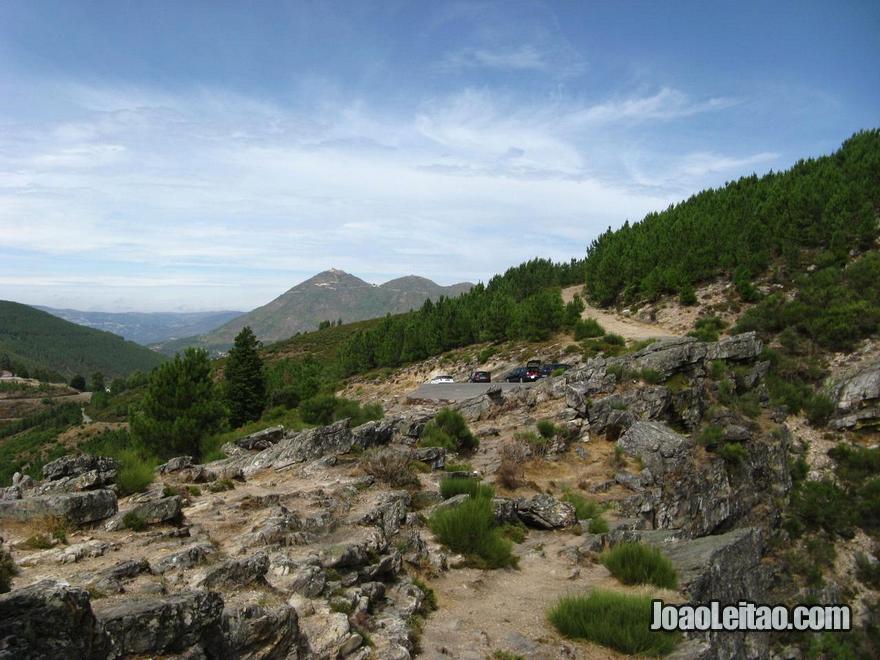
Alvão Natural Park is a nature reserve situated in Vila Real and is one of the many nature destinations Portugal has to offer. In addition to the beautiful mountain landscapes, Fisgas do Ermelo watefall is the highlight of this place.
What to visit in Alvão Natural Park
- Caos Granítico de Arnal Geological Site
- Fisgas de Ermelo
- Lamas de Olo Scenic Viewpoint
- Barreiro Viewpoint
- Mondim de Basto Information and Interpretation Center
- Lamas de Olo Village
- Cimeira Dam
- Agarez – Arnal Trail
- Barreiro – Lamas de Olo Trail
- Ermelo Village
- Olo River
- Ribeira de Arnal
- Fundeira Dam
- Bobal Picnic Park
42. Arrábida Natural Park
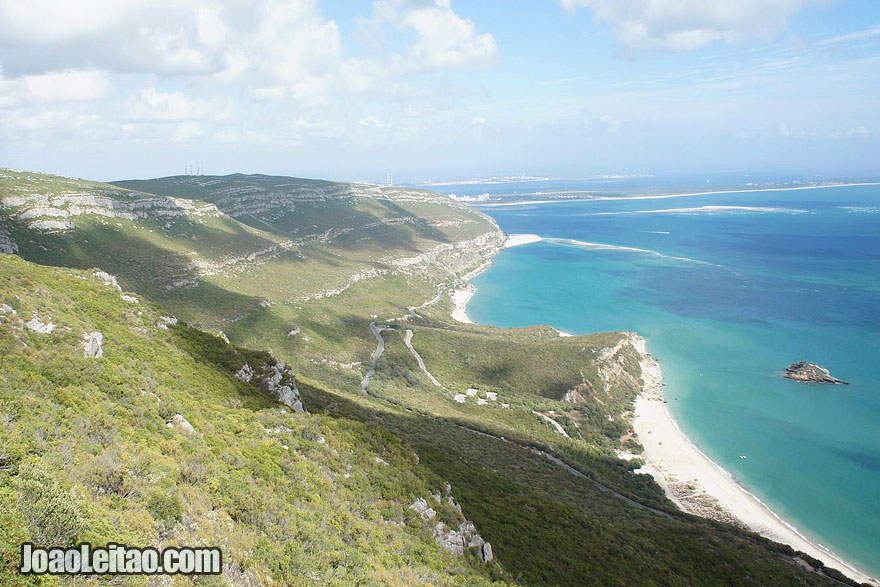
Arrábida Natural Park is a true natural treasure. It combines the most beautiful landscapes of Serra da Arrábida with magnificent beaches such as Portinho da Arrábida. It is considered a paradise right at the gates of the capital city Lisbon.
What to visit in Arrábida Natural Park
- São Filipe Fortress
- Santa Maria Fortress
- Oceanographic Museum
- Palmela Castle
- Santiago do Outão Fortress
- Albarquel Fortress
- Nossa Senhora da Arrábida Convent
- Quinta da Bacalhoa
- Quinta das Torres
- Casal do Mocinho
- Jazida dos Pinheirinhos Archaeological Site
- Mar de Ancão Archaeological Site
- Lapa do Fumo Archaeological Site
- Alpertuche Beach
- Portinho da Arrábida Beach
- Creiro Beach
- Coelhos Beach
- Galapos Beach
- Galapinhos Beach
- Figueirinha Beach
- Albarquel Beach
- Serra da Arrabida
- Vila Nogueira de Azeitão Village
- Quinta do Anjo Caves
- Chibanes Archaeological Site
- Duques de Aveiro Palace
- Alto da Queimada Alqueria
- Portela Alqueria
- Roça do Casal do Meio
- Lapa do Bugio Archaeological Site
- Castelo dos Mouros Archaeological Site
- Terras do Risco Archaeological Site
- Arrabida Wine Route
- Arrabida Gastronomic Route
- Serra do Louro Trail
- Windmills
- Serra do Risco
- Calhariz Palace
- Coina a Velha Castle
43. Peneda-Gerês National Park
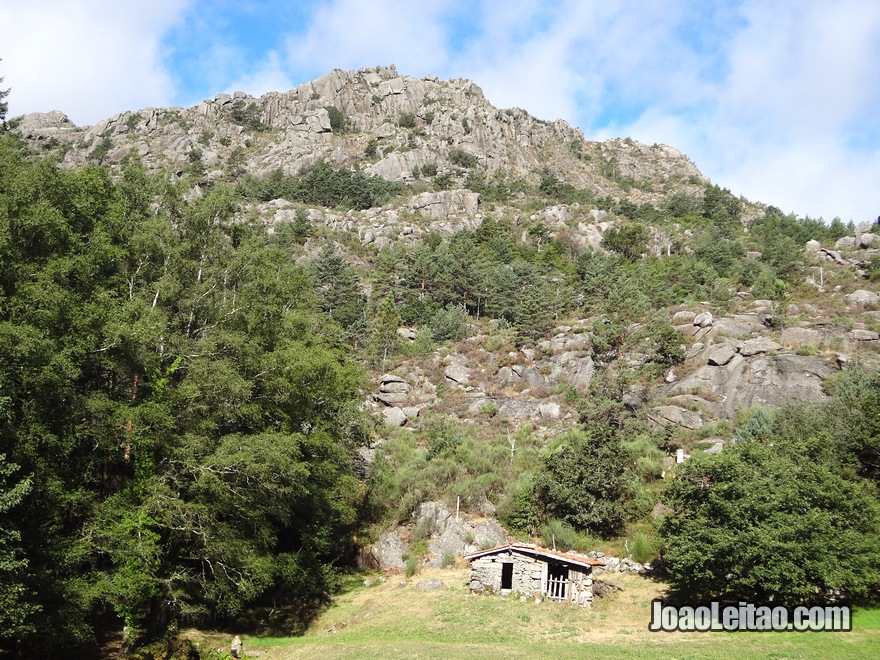
Peneda-Gerês National Park is the largest protected area of the country, stretching over 22 parishes and more than 72,000 hectares.
What to visit in Peneda-Gerês National Park
- Geira XVIII Roman Road
- Castro Laboreiro Castle
- Castro Laboreiro Village
- Preguiça Scenic Viewpoint
- Leonte Waterfall
- Lindoso Castle
- Lindoso Village
- Soajo Village
- Pitões das Júnias Village
- Pitões das Júnias Waterfall
- Soajo Megalithic Monuments
- Portela da Fairra Wolf Trap
- Arado Waterfall
- Sobreiral da Ermida do Gerês
- Visitação Parish Church
- Nossa Senhora da Peneda Sanctuary
- Germil Wolf Trap
- Castro Laboreiro Water Mills
- São Bento da Porta Aberta Sanctuary
- Smuggling Route
- Moinhos de Parada Trail
- Brandas Trail
- Caminho do Pão Trail
- Fafião Wolf Trap
- Xertelo Village
- Cela Cavalos Waterfall
- Pedra Bela Scenic Viewpoint
- Caniçada Dam
- Castrejo Trail
- Montalegre Castle
- Sistelo Terraces
- Calcedónia Archaeologcal Site
- Assureira Bridge
- Aguia do Sarilhão Trail
- Gerês Village
- Preguiça Trail
- Mata da Albergaria National Forest
- Portela do Homem
- Silha dos Ursos Trail
- Currais Trail
- Megalitismo do Planalto de Castro Laboreiro Trail
- National Park Gate (Lindoso)
- National Park Gate (Campo do Gerês)
- National Park Gate (Mezio) National Park Gate (Lamas de Mouro)
- Barroso Ecomuseum
- Pitões das Júnias Barroso Ecomuseum
- Ermida Museum
- Geira Museum
- Vilarinho da Furna Ethnographic Museum
- Paredes do Rio Hydrological Complex
- Lamas de Mouro Trail
- Curro da Velha Trail
- Penedo do Encanto Trail
44. Ourém
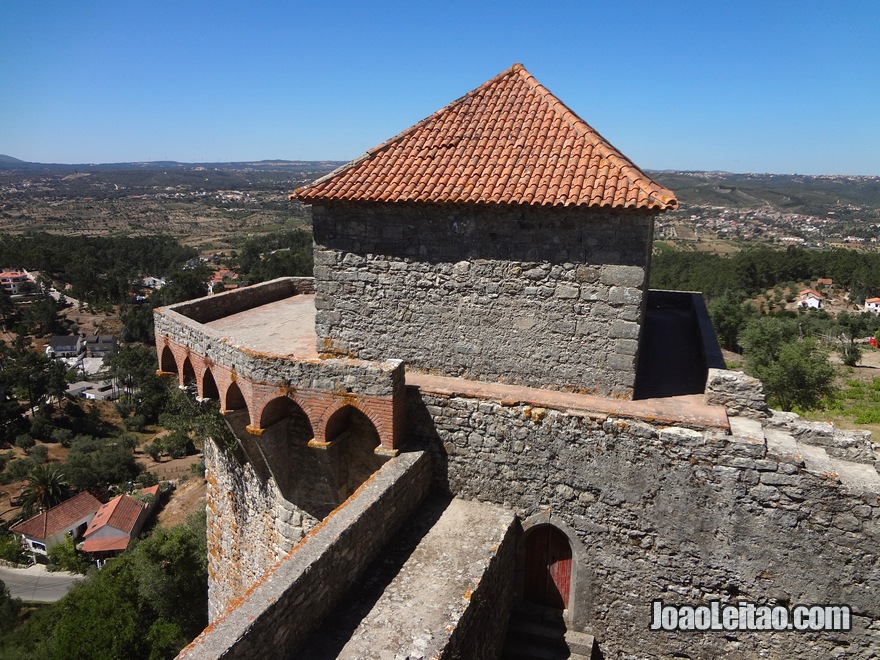
Ourém is located in the central region of Portugal near Fátima, in Santarém district. Ourém Castle is the landmark of the city. It stands alone on top of a hill and has a very distinctive architecture comparing to the most common castles in Portugal.
What to visit in Ourém
- Sanctuary of Fátima
- Santíssima Trindade Church
- Aljustrel Village
- Ourém Village
- Ourém Castle
- Terreiro de São Tiago Scenic Viewpoint
- Ucharia do Conde
- Ourém Pillory
- Olival Church
- Cabeço dos Valinhos
- Environmental Interpretation Centre of Alto Nabão
- Colegiada Church
- Ourém Gallery
- Ourém Municipal Forest
- António Teixeira City Park
- Natural Monument of Dinosaur Footprints of Serra de Aire
- Agroal Spring
- Agroal Nature Park
- Municipal Theatre
- Agroal Trails
45. Óbidos
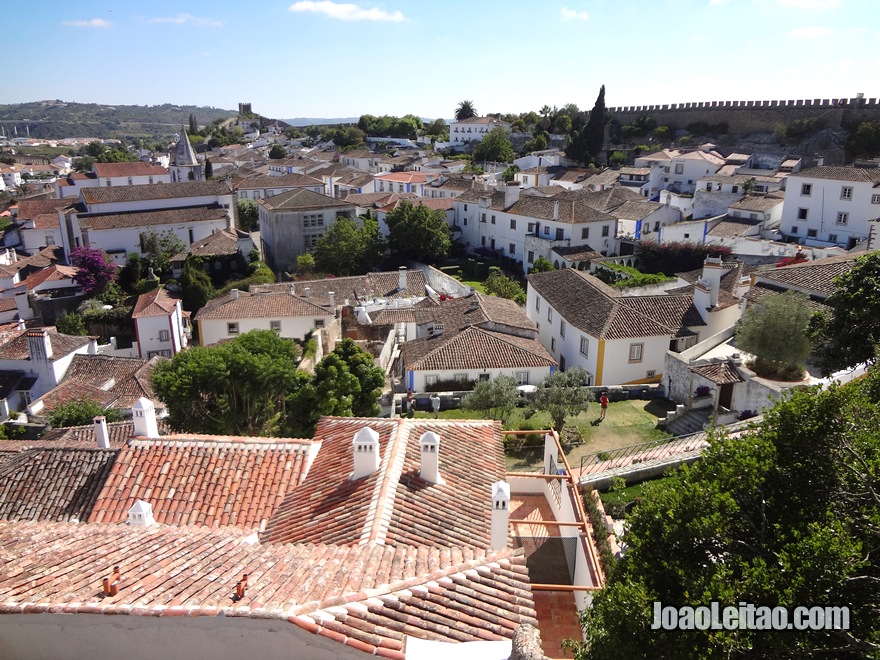
Óbidos is a charming village, within the castle walls. It is one of the most beautiful historic villages of Portugal.
What to visit in Óbidos
- Óbidos Castle
- São João Baptista Church
- Vila Gate
- Vale / Senhora da Graça Gate
- Rua Direita Street
- São Pedro Church
- São Martinho Chapel
- Misericórdia Church
- Santa Maria Church
- Pillory
- Praia d’El Rei Beach
- Rei Cortiço Beach
- Bom Sucesso Beach
- São Tiago Church
- Nossa Senhora do Carmo Chapel
- Ordem Terceira Chapel
- Aqueduct
- Senhor Jesus da Pedra Sanctuary
- Óbidos Lagoon
- Ninho da Cegonha Trail
- Patos Reais Trail
- Óbidos Hunting Park
- Covões Beach
- Várzea da Rainha Bikepath
46. Nossa Senhora da Peneda
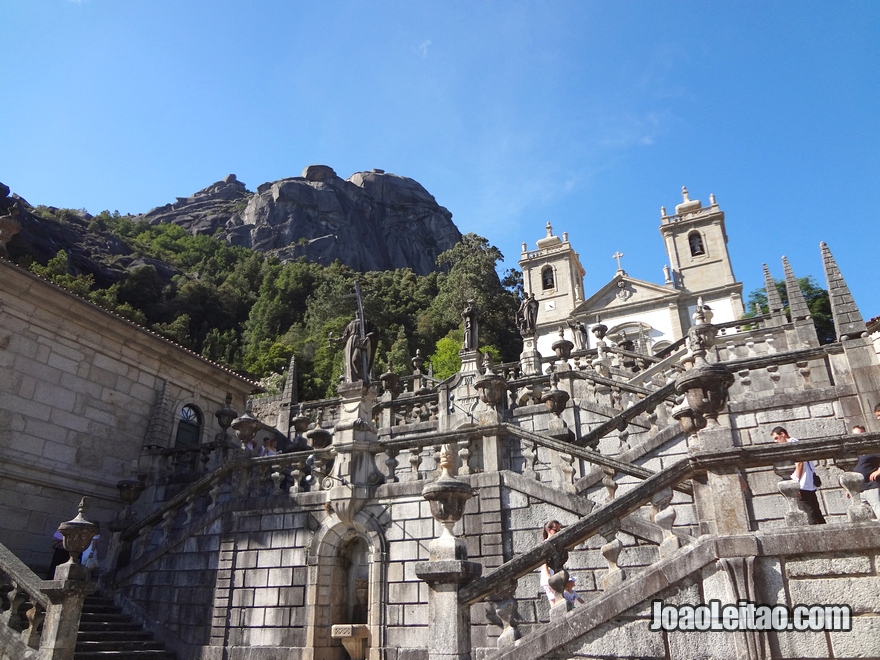
Nossa Senhora da Peneda, located in Ponte da Barca municipality, is famous for its sanctuary. It resembles Bom Jesus de Braga sanctuary with a staircase in the front adorned with statues and fountains in every floor level. Another less prone staircase stretches along 300m, flanked by 20 small chapels with scenes of Jesus’s life.
What to visit in Nossa Senhora da Peneda
- Nossa Senhora da Peneda Sanctuary
- Peneda Gerês National Park
- Peneda Trail
- Bouça dos Homens
- Branda São Bento do Cando
- Batateiro Megalithic Site
- Rock Climbing
- Branda da Aveleira
- São Bento do Cando Chapel
- Branda de Rouças
- Gavieira Village
- Brande de Santo António
- Druidas Lagoon
47. Medieval Necropolis of Fernão Joanes
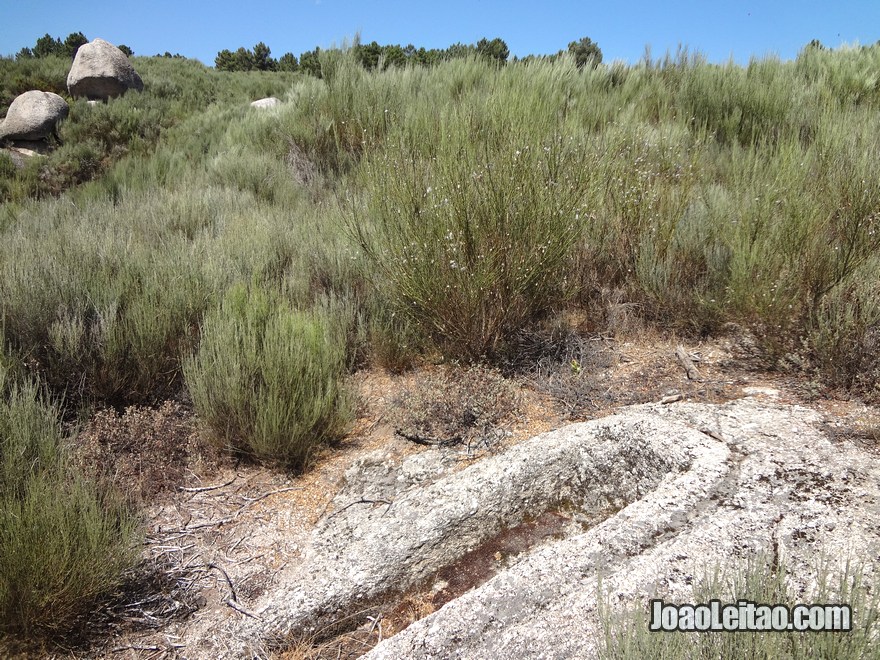
The village of Fernão Joanes stands in Serra da Estrela Natural Park, in Guarda district. Outside the village we can find a medieval necropolis with tombs, some easier to identify than others thanks to its bumps.
What to visit in Medieval Necropolis of Fernão Joanes
- Medieval Necropolis of Fernão Joanes
- Parish Church
- Nossa Senhora do Soito Chapel
- Caldeirão Dam
- Crossódromo das Lajes
48. Nazaré
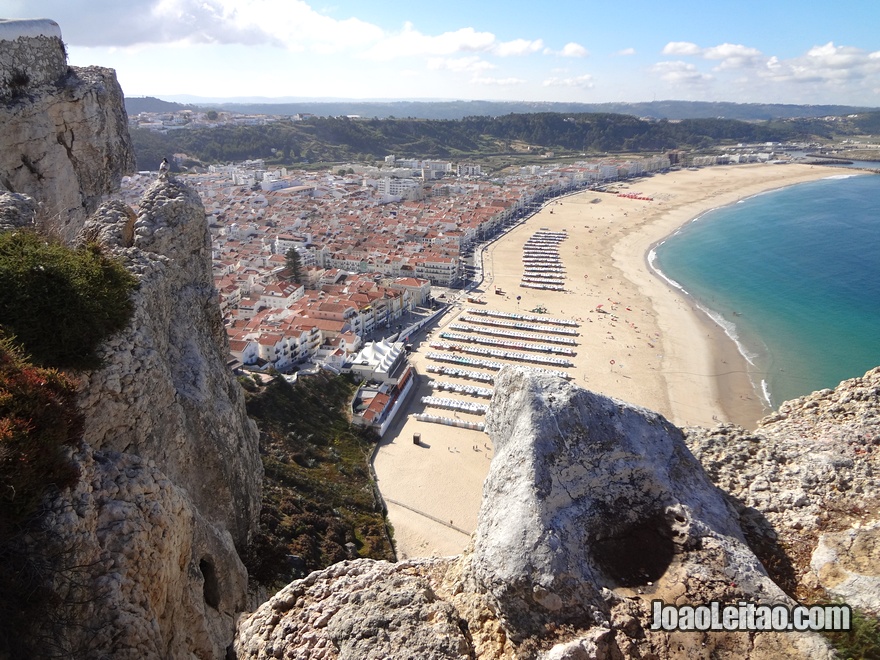
Nazaré lies on the central west coast of Portugal, and it is one of the most traditional fishing villages in the country. The typical costumes of Nazaré women are very peculiar: seven overlapping skirts, all of a different pattern and color. Even today you can see women dressing up like that. Nazaré is also a very popular beach for surfing.
Garrett McNamara Breaks Big Wave World Record in Nazaré
30m (100ft) rogue wave… Garrett McNamara makes history by breaking the current record of the biggest wave ever surfed while in Nazare, Portugal.
What to visit in Nazaré
- São Gião Church
- Nazaré monumental urban complex and landscape
- Pescadores Street House
- Chaby Pinheiro Theatre
- Old Town Hall
- Vila Foutain
- Nossa Senhora dos Anjos Chapel
- São Miguel Arcanjo Fortress
- Nossa Senhora da Nazaré Church
- Misericórdia da Pederneira Church
- Nossa Senhora da Nazaré Chapel
- Royal Road
- Granja do Valado
- Nazaré Canyon
- Nazaré Beach
- Nazaré Funicular
- Monte de São Bartolomeu
- Nazaré Site
- Aguieira Dunes
- Monte Branco
- Pederneira Lagoon
- Serra da Pescaria
- Pederneira Fossil
49. Montalegre
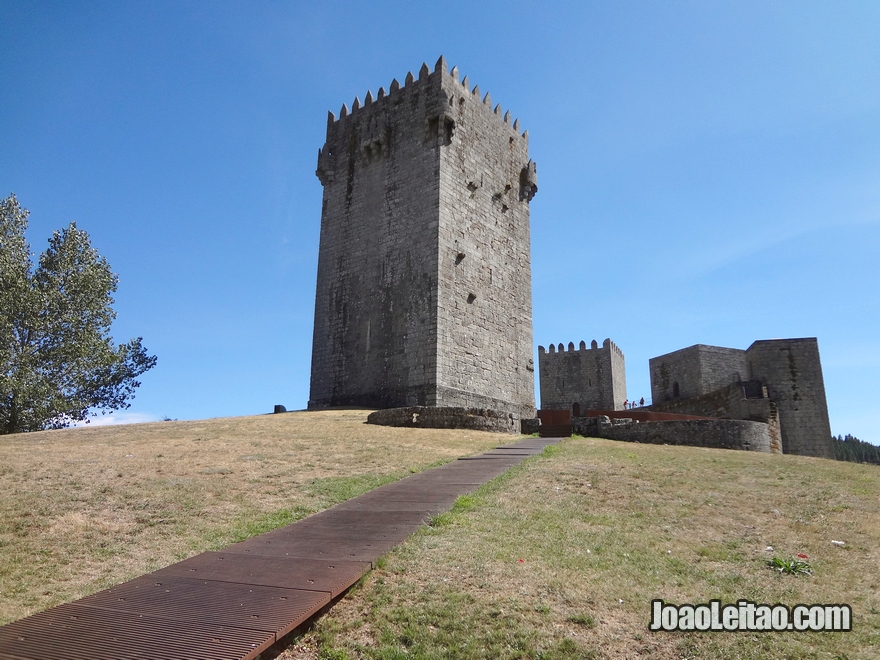
Montalegre is a town which stands in the northernmost region of Portugal, close to Spain. Montalegre Castle stands out in the village landscape. In recent years Montalegre devoted itself to celebration of mysticism. Every Friday 13th offers numerous events and ceremonies which are attended by hundreds of tourists.
What to visit in Montalegre
- Montalegre Castle
- Barroso Ecomuseum
- Misericórdia Church
- Cávado Park
- Veiga Megalithic Site
- Roman Road Braga-Chaves
- Town Hall
- Senhora das Treburas Scenic Viewpoint
- Alto Rabagão Dam
- Corujeira Scenic Viewpoint
- Corujeira Bridge
- Portela Oven
- Castelo Church
- Boi do Povo Monument
- Paradela Dam
- Sezelhe Dam
- Contrabando Trail
- Vilar de Perdizes Trail
- Serra da Vila Trail
- Avelar Wolf Trap
- Montalegre Multi-purpose Indoor
- Carvalho da Forca Oak Tree
- Montalegre Car Track
- Sabuzedo Wayside Shrine
- Serra do Larouco
- Peneda Gerês National Park
- Tourém Monumental Oven
- Vila da Ponte Village
- São Vicente da Chã Romanesque Church
- Montalegre Pillory
- Minas da Borralha Ecomuseum
- D. Nuno Trail
- Pitões das Júnias Village
- Ourigo Trail
- Ourigo Trail
- Ponte da Misarela Trail
- Rio Trail
50. Monsaraz
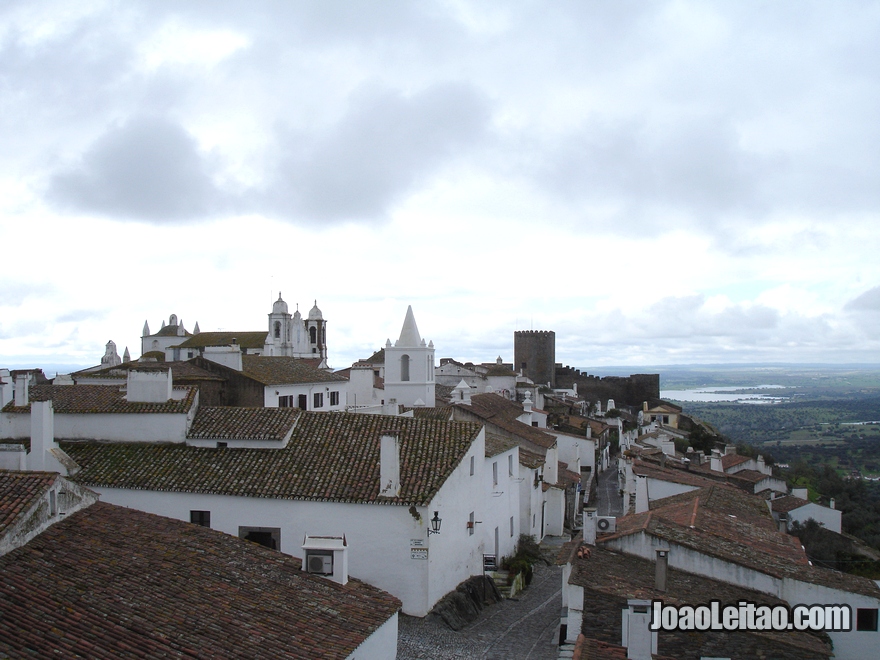
The small village of Monsaraz is located in the Alentejo region, close to the border with Spain. The whiteness of its houses stands out on top of the hill, within the castle walls.
What to visit in Monsaraz
- Herdade do Xerez Megalithic Site
- Outeiro Menhir
- Bulhoa Menhir
- Olival da Pega Megalithic Site
- Santa Catarina de Monsaraz Chapel
- São Bento Chapel
- Monsaraz Pillory
- São Gens Watchtower
- Santa Maria da Lagoa Parish Church
- Vila Gate
- Monsaraz Castle
- D. Nuno Álvares Square
- Paços da Audiência
- São João Baptista Chapel
- São José Chapel
- São Bento Chapel
- São Lázaro Chapel
- Santa Catarina Chapel
- Old Cistern
- São Tiago Church
- Alqueva Dam
- Monsaraz Keep Tower
51. Monsanto

Monsanto is a historic village in the municipality of Idanha-a-Nova, called “the most Portuguese village in Portugal”. Small stone houses lean against big rocks that seem to threaten to roll down at any time. The streets are narrow and cobbled.
What to visit in Monsanto
- Santo António Chapel
- Fernando Namora House
- São Salvador Calvary
- Misericórdia Church
- Monsanto Parish Church
- Espírito Santo Gate
- Lucano Tower
- Monsanto Castle and Walls
- São João Baptista Chapel
- Senhora da Azenha Chapel
- Santa Maria do Castelo Chapel
- São Lourenço Roman Archaeological Site
- 17th century House
- Governadores Manor House
- Ferreiro Fountain
- Pillory
- Chafariz do Meio
- Oven
- Banco da Paciência
- Old Wine Cellar
- Pousada de Monsanto
- Pinheiros Manor House
- Família Melo Manor House
- Família Pinheiro Manor House
- Priores de Monsanto Manor House
- São Miguel do Castelo Chapel
- São Pedro de Vir à Corça Chapel
- Santo António Chapel
52. Moimenta da Beira
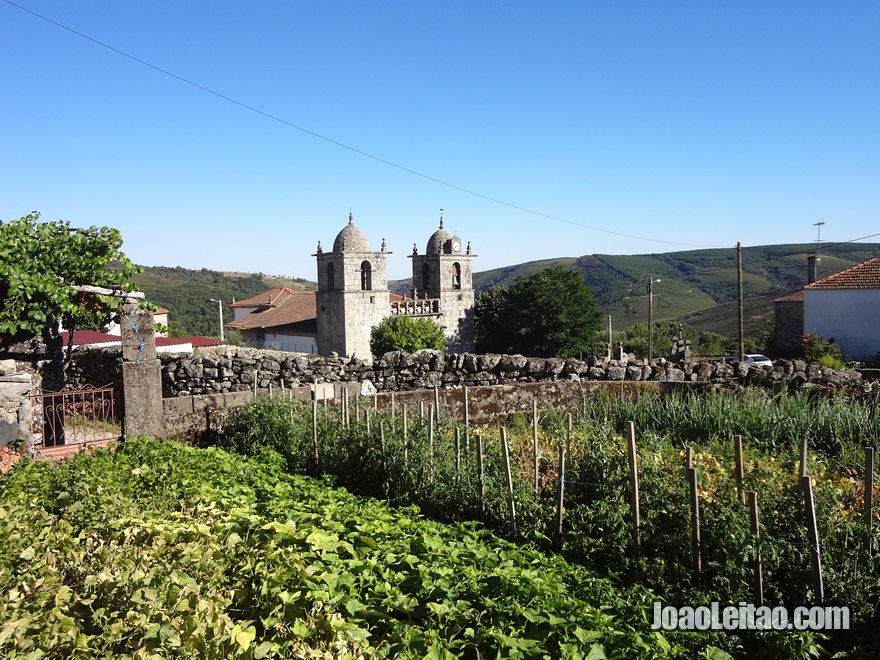
Moimenta da Beira stands in Montesinho Natural Park. It is a countryside village, surrounded by beautiful landscapes. In the village center there is a beautiful church that, despite being originally from the 14th century, shows features mainly from the 17th-18th centuries renovations.
What to visit in Moimenta da Beira
- Moimenta da Beira Pillory
- Guedes Manor House
- Morais Sarmento Palace
- Castle Pillory
- Royal Road
- Granja do Valado
- Nossa Senhora da Purificação Convent
- São João Baptista Parish Church
53. Miranda do Douro
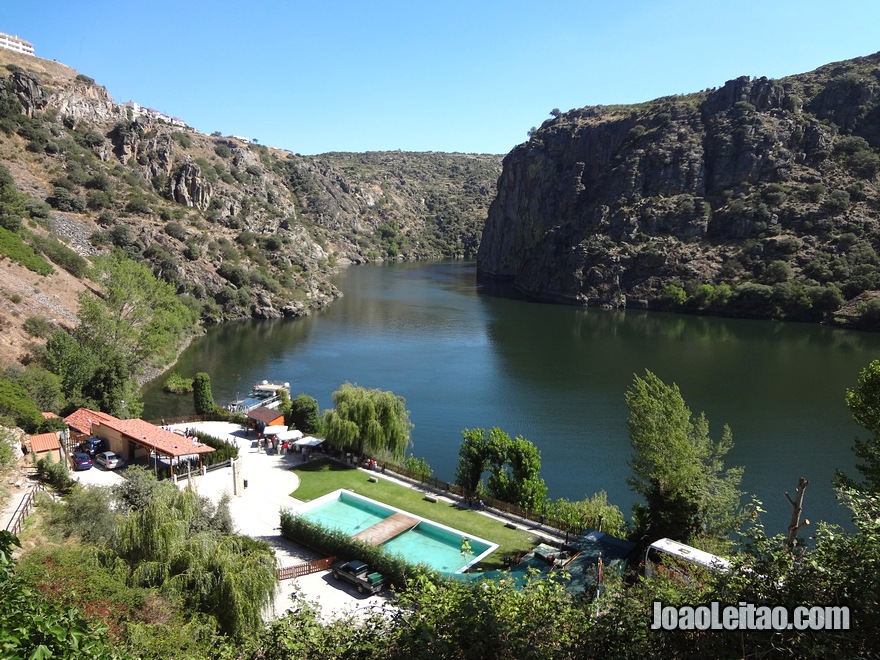
Miranda do Douro is a city in the northeast inland of Portugal, in Bragança district. It is a land of ancient traditions like the famous dance of “Pauliteiros” and it has its own language, the second official language of Portugal: “Mirandês”. It stands within Douro International Natural Park, and its major attractions are the landscape and the diverse outdoor activities.
What to visit in Miranda do Douro
- Santa Eufémia Church
- Solhapa Rock Shelter
- São Genísio Church
- Ifanes Church
- Vale de Águia Archaeological Site
- Os Santos Rock Shelter
- Terra de Miranda Museum
- Episcopal Palace Ruins
- Frades Trinos Ancient Convent
- Miranda do Douro Cathedral
- Aldeia Nova Archaeological Site
- Cathedral Square Building
- Miranda do Douro Castle
- Hispano-Luso Environmental Center
- Terra Mater Ecomuseum
- Picote Dam
- Douro International Natural Park
54. Mértola
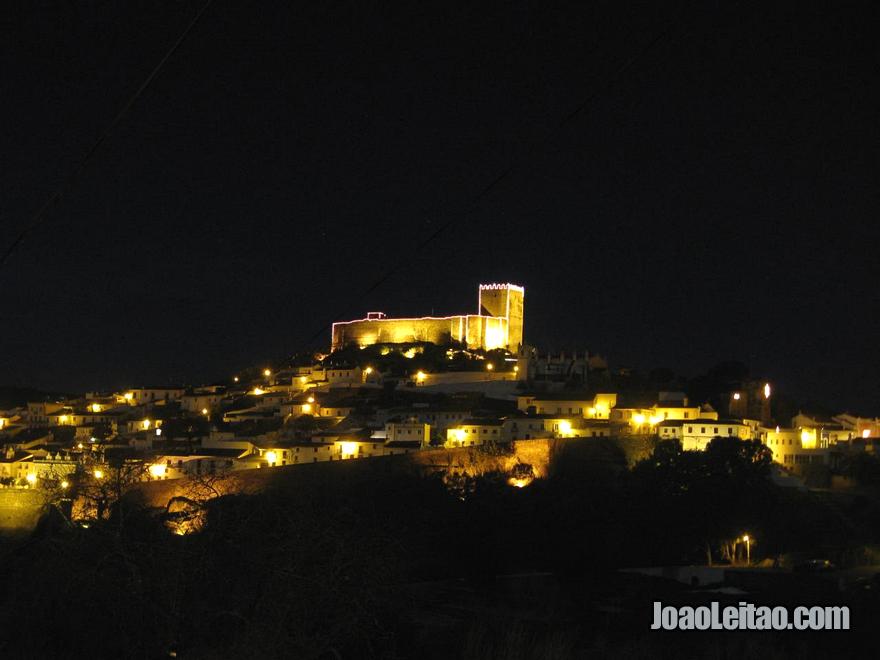
Mértola is a city in Alentejo region on the banks of River Guadiana, which separates Portugal from the neighboring country, Spain. At the highest point of the city stands the castle and in the level below stretches the city of white houses built in the typical style of the region.
What to visit in Mértola
- Mértola Castle
- São Barão Chapel
- Mértola Parish Church
- São Francisco Convent
- Couraça Tower
- Rio Tower
- Islamic House Replica
- Roman House
- Keep Tower
- O Rio Grande do Sul Trail
- Os Canais do Guadiana Trail
- As Margens do Guadiana Trail
- Entre o Escalda e o Pulo do Lobo Trail
- À Subida da Senhora do Amparo Trail
- Early Christian Basilica
- São Sebastião Chapel and Necropolis
- Guadiana Watermills
- Clock Tower
- Mértola Museum
- Weaving Workshop
- São Domingos Mines
- Vale do Guadiana Natural Park
- À Volta do Montado Trail
- Ao Ritmo das Águas do Vascão Trail
- Um Percurso Ribeirinho Trail
- Rota do Minério Trail
55. Marvão
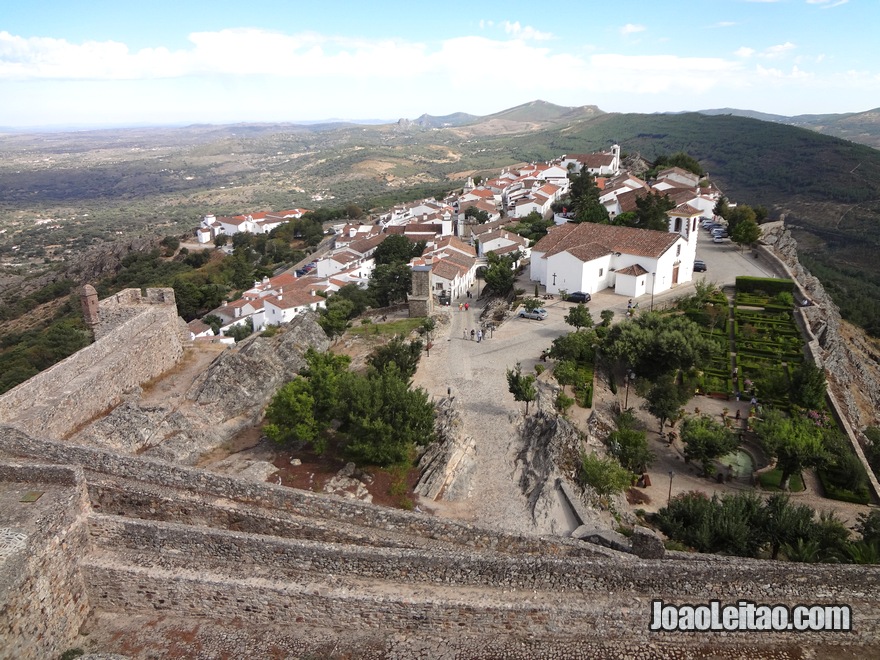
Marvão is a small village located in Alto Alentejo region, near the border with Spain. At the highest peak of Serra de S. Mamede, one can see a village of immaculate white houses, typical of Alentejo. The whole village is protected by the walls of Marvão Castle.
What to visit in Marvão
- Marvão Castle and Walls
- Herdade dos Pombais Archaeological Site
- Estrela Calvary
- Santa Maria de Marvão Church
- Marvão Pillory
- Nossa Senhora da Estrela Convent
- Pousada de Santa Maria
- Ammaia Roman City
- Caleiras de Escusa
- XVI Century Bridge
- Marvão Trail
- Galegos Trail
- Marvão Keep Tower
- Sever River
- Serra de São Mamede
- Bourbon e Valle Palace
- Mattos Mouzinhos Palace
- Espírito Santo Church
- São Tiago Church
- Calvário Church
- Whitewash Oven
- Marvão Museum
- Contrabando do Café Trail
56. Manteigas
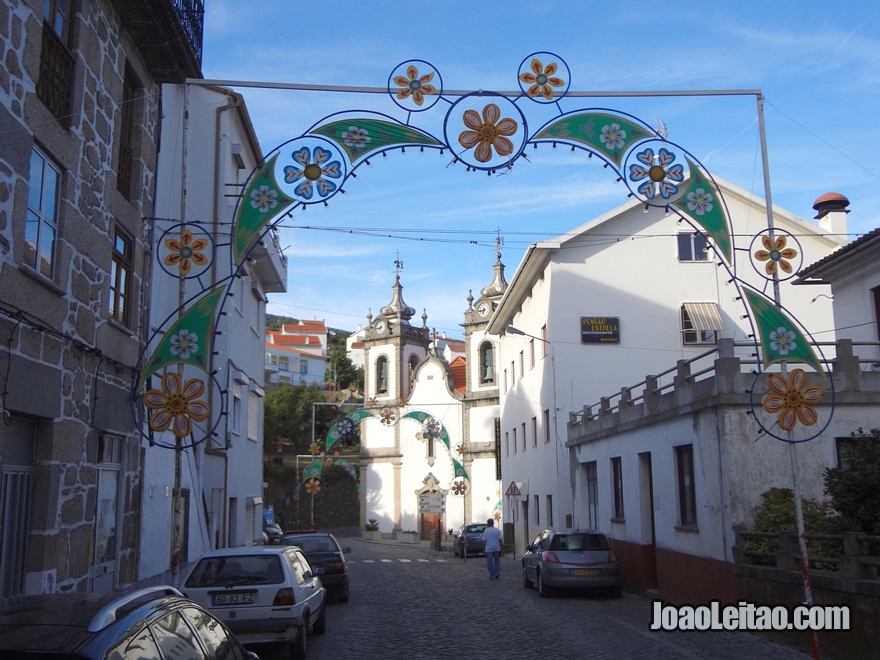
The town of Manteigas stands right in the heart of Serra da Estrela and can be the starting point for exploring the region. As it lies on a valley, you can climb up from there towards the highest points of the mountain, enjoying the natural beauty.
What to visit in Manteigas
- Covão dos Conchos Lagoon
- Zêzere Glacier Valley
- Serra da Estrela Torre (Tower)
- Covão do Boi Geologic Site
- Cântaros
- Covão d’Ametade Natural Site
- Nave de Santo António Natural Site
- Paulo Luís Martins Fountain
- Serra de Baixo
- Meteorological Observatory
- Nossa Senhora da Estrela Chapel
- São Sebastião Chapel
- São Domingos Chapel
- Nossa Senhora dos Verdes Chapel
- Santa Maria Parish Church
- Obras House
- Pousada de São Lourenço
- Poço do Inferno
57. Mafra
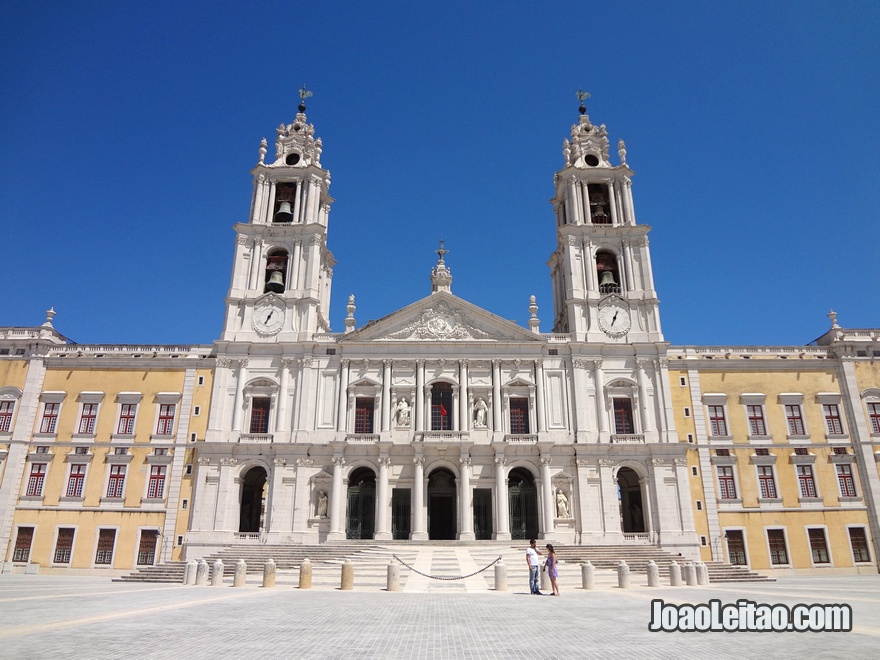
Mafra is situated 40 km north from Lisbon. The Convent of Mafra (or Mafra National Palace) and Tapada de Mafra are the most emblematic spots in town. Part of the Convent can be visited, another part belongs to the Portuguese School of Weapons. Tapada de Mafra is an area of rich forest biodiversity where you can enjoy several activities related to nature.
What to visit in Mafra
- Mafra National Palace
- Tapada de Mafra
- Santo André Church
- D. João V Square
- Praça da Republica Square
- São Sebastião Chapel
- São Pedro Church
- Misericórdia Church
- Misericórdia Museum
- Mafra Museum
- Nossa Senhora da Boa Viagem Chapel
- Santa Marta Church
- Mata Pequena Village
- José Franco Museum
- Empa Beach
- Foz do Lizandro Beach
- Penedo do Lexim
- Porto Barril
- Linhas de Torres Historical Route
- Enxaras Route
- Xeleiros Urban Trail
- Calada Beach
- São Lourenço Beach
- Coxos Beach
- Matadouro Beach
- São Julião Beach
- Pescadores Beach
- Algodio Beach
58. Lisbon
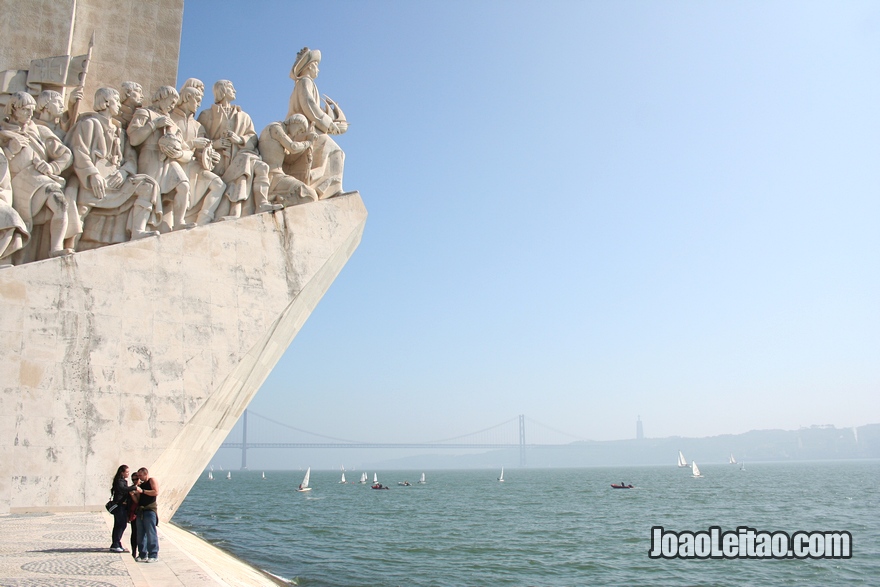
Lisbon is the capital of Portugal, known as the city of seven hills (like Rome and Istanbul) also a unique city that delights tourists from all over the world.
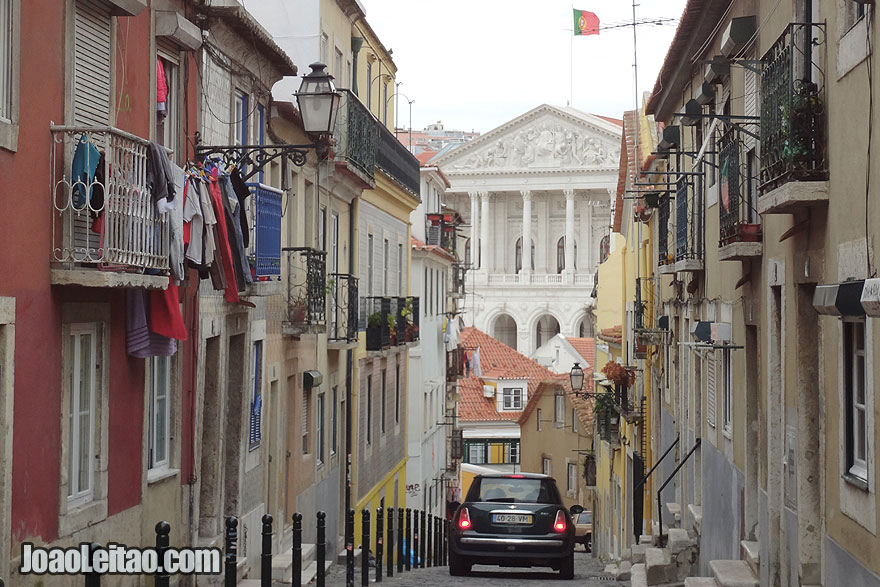
Lisbon is a city to be visited with plenty of time. In addition to the many historic monuments, one must stroll around its picturesque neighborhoods of moorish origin, such as Alfama or Mouraria, to see how people live in this area of the city, in contrast to the frenetic life “out there”.
What to visit in Lisbon
- Lisbon City Hall
- Lisbon Sé Cathedral
- Fado Museum
- Jerónimos Monastery
- Belém Tower
- National Museum of Archaeology
- National Pantheon
- National Azulejo Museum
- Military Museum
- Ajuda National Palace
- Rua Augusta Street
- Padrão dos Descobrimentos Monument
- Santa Justa Lift
- Bicos Manor House
- National Museum of Ancient Art
- Cerca Moura Lisbon Walls
- São Nicolau Church
- Cristo Rei
- D. Maria II National Theatre
- Terreiro do Paço / Praça do Comércio Square
- Carmo Fountain
- São Bento Palace
- Lisboa Pillory
- Águas Livres Aqueduct
- Torre do Tombo National Archive
- Amália Rodrigues House Museum
- Rua dos Correiros Archaeological Site
- Museum of the Orient
- National Museum of Ethnology
- Ribeira das Naus
- Cultural Centre of Belém
- Estrela Basilica
- Santa Luzia Viewpoint
- Parque das Nações
- Gare do Oriente
- Santa Apolónia Railway Station
- Calouste Gulbenkian Museum
- National Coach Museum
- National Museum of Costume and Fashion
- Navy Museum
- Water Museum
- Lisbon Museum – Roman Theatre
- Assembly of The Republic
- Praça dos Restauradores Square
- São Domingos Square
- Portas do Sol Scenic Viewpoint
- Tagus River
- 25 de Abril Bridge
- Carmo Convent
- Bairro Alto (Neighborhood)
- Bairro de Alfama (Neighborhood)
- Prazeres Cemetery
- Money Museum
- Lisbon Oceanarium
- São Vicente de Fora Church
- Shaaré Tikvah Synagogue
- Campo Pequeno
- Lisbon Zoo
- Monsanto Forest Park
- Tapada das Necessidades
- São Pedro de Alcântara Scenic Viewpoint
- Torel Scenic Viewpoint
Read the page: Things to do in Lisbon by Travel with Pedro.
59. Linhares da Beira
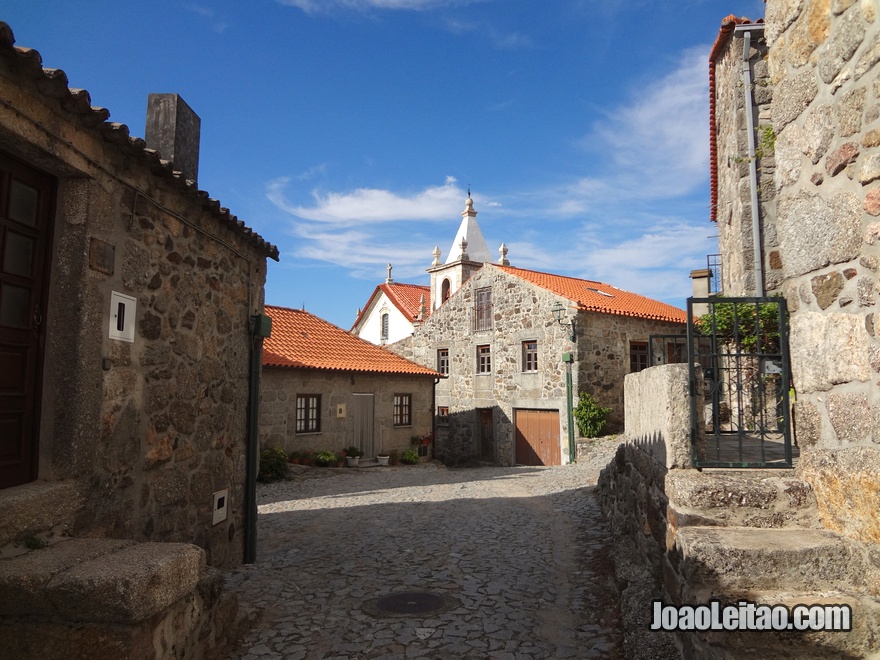
Linhares da Beira is a historic village in Celorico da Beira municipality. The buildings are mostly made of stone and many of them alongside with big rocks that seem to be part of the house. The castle stands at the highest point of the village as if crowning the landscape.
What to visit in Linhares da Beira
- Former Town Hall and Prison
- Hospedaria
- Roman Road
- Linhares da Beira Castle and Walls
- Parish Church
- Linhares da Beira Pillory
- Barbosa Fountain
- Forum and Mergulho Fountain
- São Caetano Fountain
- Misericórdia Church
- Corte Real Palace
- Pina Aragão Palace
60. Lindoso
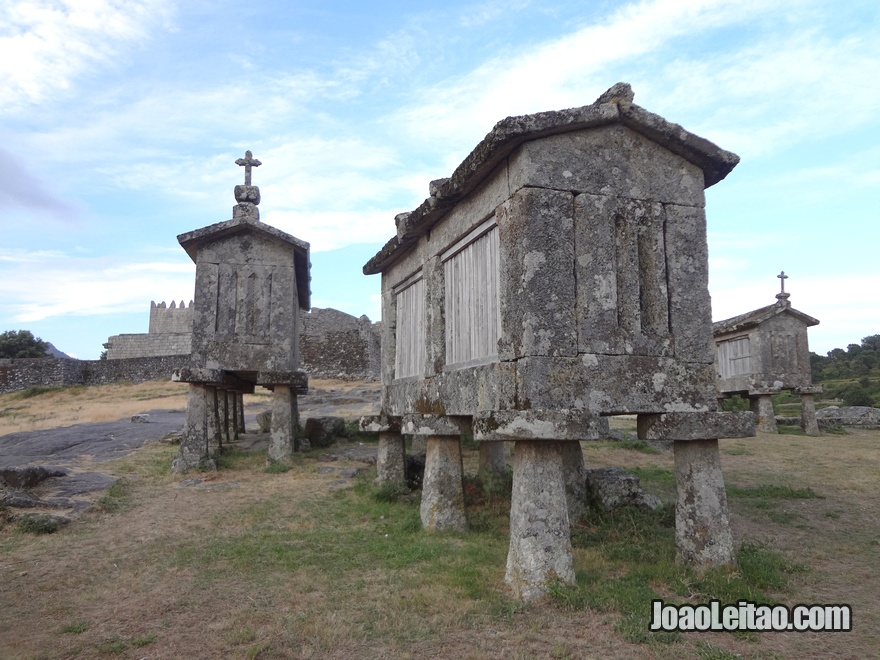
Lindoso is a parish and village in Ponte da Barca municipality in the northernmost region of Portugal. According to the legend, Lindoso name comes from the word “beautiful” in Portuguese, thus classified by King D. Dinis when he first visited the village. But, in fact, it seems that the real name is “Limitosum” meaning boundary, border. Lindoso castle was used to protect these limits of the kingdom for centuries. In the square in front of the castle, there are many granaries, stone buildings that look like little chapels on stilts, and they are still used nowadays to dry cereals and corn.
What to visit in Lindoso
- Porto Chão Rock Art
- Antenas de Louriça Viewpoint
- Monte da Madalena Calvary
- Castelo Calvary
- Largo do Destro Calvary
- Pillory
- Lavadouro
- Poço da Gola
- Lindoso Waterfall
- Penedo do Encanto Trail
- Santa Maria Madalena Chapel
- Parish Church
- Moinhos de Água Trail
- Lindoso Granaries
- Lindoso Castle
- Medieval Road
- Lindoso Dam
- Moinhos de Parada Trail
- Lindoso Castle Museum
- Peneda Gerês National Park
61. Leiria
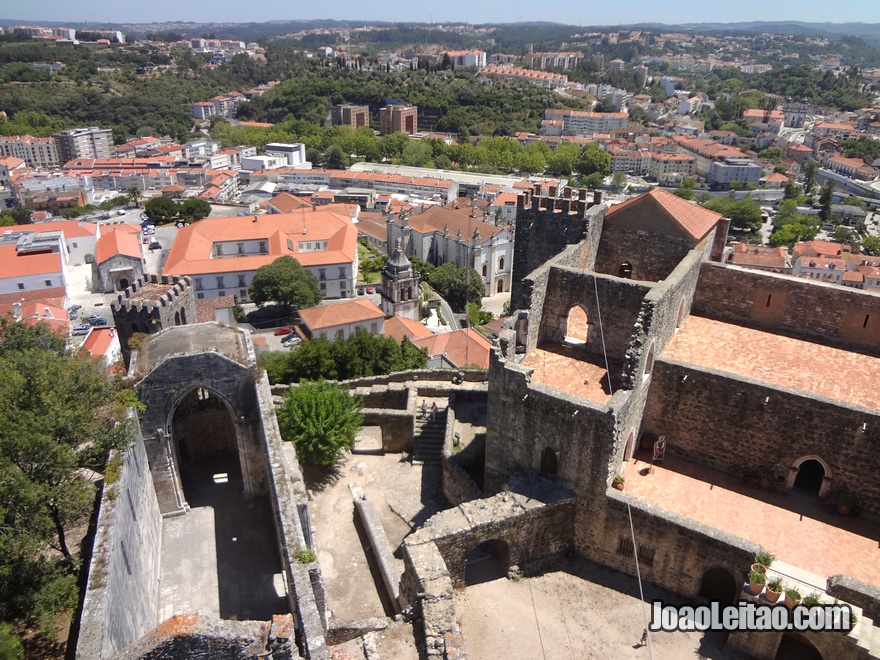
Leiria became a city during the rule of the first king of Portugal, D. Afonso Henriques, in 1142. It stands in the heart of Portugal, near the coast. To protect the coast and the city from seawater and sand moving forward, King D. Dinis ordered to grow the famous Pinhal de Leiria (pine forest), between 1279 and 1325. The castle that stands at the top of the highest hill in the city was built in 1135 but went through many enlargements afterward. The first stones used to build the castle have been taken out from the ancient Roman city, located in that place.
What to visit in Leiria
- Leiria Castle and Walls
- Leiria Cathedral
- Senhor Jesus dos Milagres Sanctuary
- São Pedro Chapel
- São Francisco Church and Convent
- Nossa Senhora da Encarnação Sanctuary
- Santo Agostinho Convent
- D. Julinha Municipal Museum
- João Soares Cultural Center
- Painters House
- Moinho de Papel
- Santo António dos Capuchos Convent
- Vale do Lapedo Trail
- Termas d’El Rei Trail
- Mata dos Marrazes Trail
- Lis River
- Imagem em Movimento Museum
- Fábrica de Cimentos Maceira-Lis Museum
- School Museum
- Leiria Museum
- Keep Tower Museum
- Local Firefighters Museum
- Miguel Franco Theatre
- Leiria Stadium
- José Lucio da Silva Theatre
- Leiria Former Market
- Nascente do Rio Lis Trail
- Moinhos do Rei Trail
- Ervedeira Lagoon
62. Janeiro de Cima
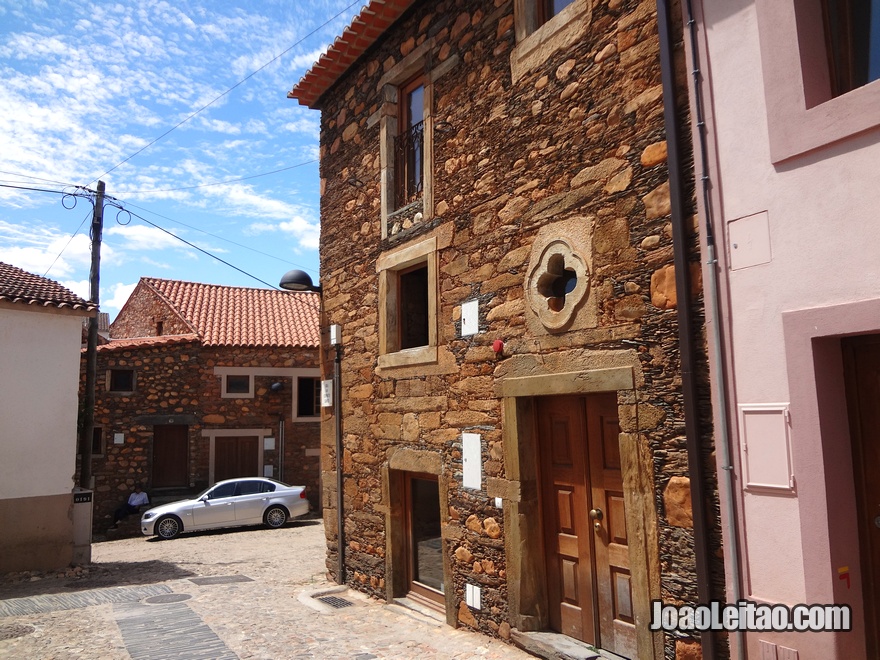
Janeiro de Cima is an ancient village in Fundão municipality. The houses are built of shale speckled with river pebbles, lighter and rounded. The village is included in the so-called “Shale Villages” and it is part of a beautiful countryside landscape along the river. Formerly, the boat was the only way to move to the other side of the river, but at present we can use it for a nice tour.
What to visit in Janeiro de Cima
- Tecedeiras House
- São Sebastião Chapel
- Igreja Velha
- Roda de Janeiro
- Giant Loom
- A Barca
- Zêzere River
- NaturTejo Geopark
- Janeiro de Cima Xisto Path
- Igreja Nova
- Primary School
- School Museum
- Divino Espírito Santo Chapel
- Nossa Senhora do Livramento Chapel
- XVII and XVIII Historical Buildings
63. Janeiro de Baixo
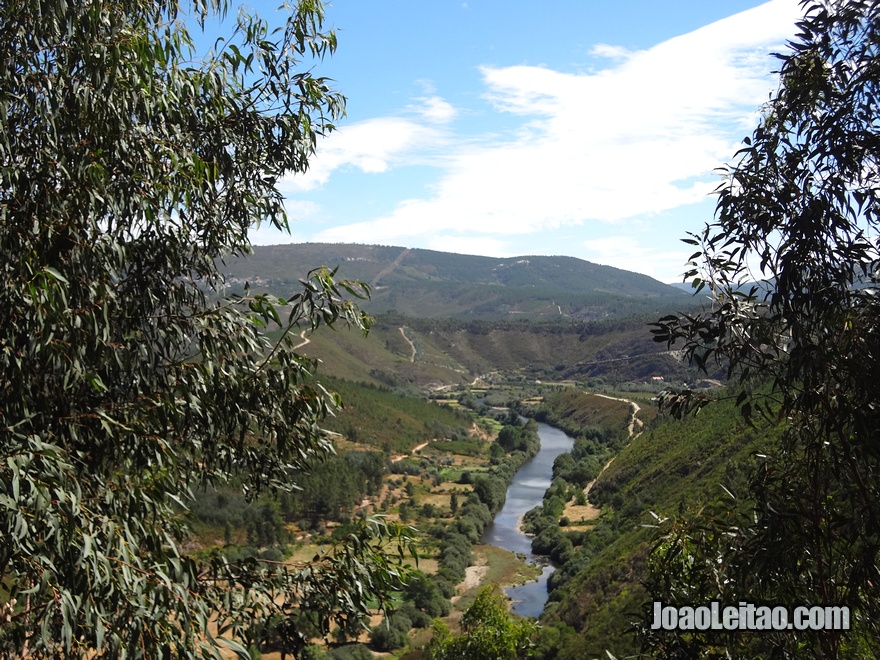
Janeiro de Baixo stands south of Janeiro de Cima, as its name implies, but on the right bank of Zêzere River, in the municipality of Pampilhosa da Serra. It is also part of the “Shale Villages”, with its typical houses. The village surroundings invite you to take one of the hiking trails.
What to visit in Janeiro de Baixo
- Parish Church
- Santo Cristo Chapel
- Mergulho Fountain
- Former Primary School
- São Sebastião Chapel
- Wayside Shrine
- Mill excavated in rock
- Traditional Ovens
- Zêzere River
- Santa Luzia Dam
- Zêzere Gorge
- NaturTejo Geopark
64. Igrejinha
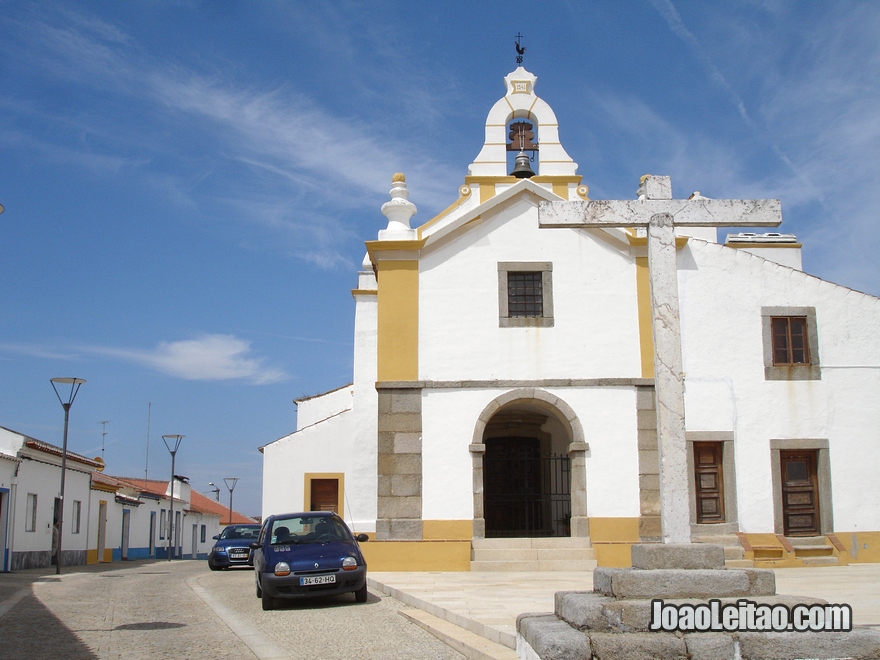
Igrejinha is a village in Arraiolos municipality, in Alentejo region. It is a typical Alentejo village with single storey houses, immaculately whitewashed (now painted) with blue or yellow bars around the doors and windows. 4 km away from the village towards Azaruja, there is a Roman building in ruins, probably dating from the first century BC, called Castelo do Mau Vizinho (Bad Neighbour Castle) or Pontega Castle.
What to visit in Igrejinha
- Parish Church
- Mau Vizinho Castle
- Igrejinha Ethnographic and Craft Museum
- Divor Dam
65. Idanha-a-Velha
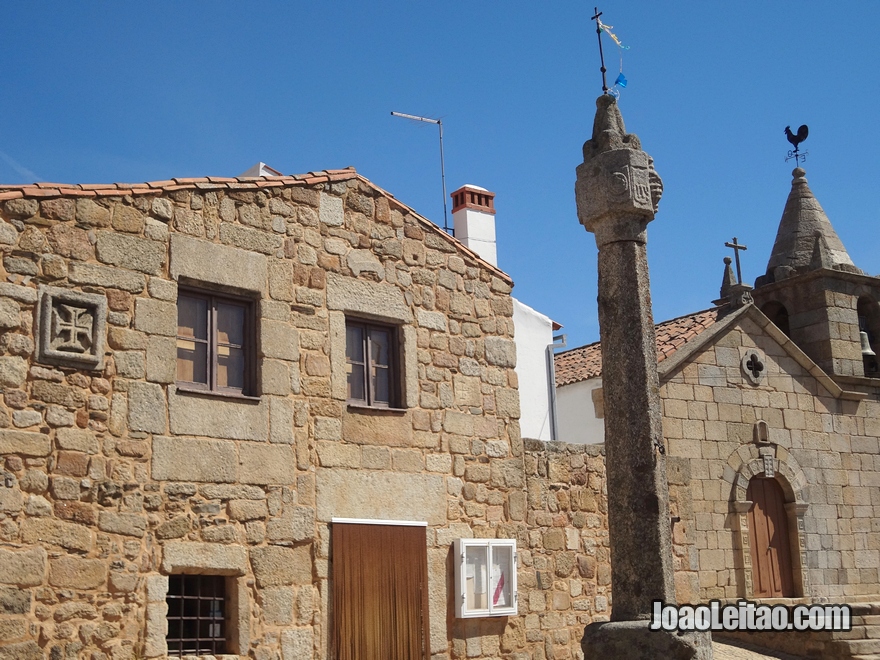
Idanha-a-Velha lies in the Portugal inland, in Idanha-a-Nova municipality. The village had a great reputation during the Roman occupation that began in the 1st century BC. It was later the target of Barbarian invasions in the 3rd and 4th centuries, conquered by the Moors in 713 and finally received a charter in 1206 from the King D. Sancho I. The village itself consists of typical stone houses and several impressive monuments that tell the history of the community, such as the Castle, the Tower of the Templars, the Cathedral, the Bridge over Ponsul River, among others. It is classified as one of the “Historic Villages of Portugal.”
What to visit in Idanha-a-Velha
- Epigraphic Archive
- Espírito Santo Chapel
- São Dâmaso Chapel
- São Sebastião Chapel
- Traditional Oven
- Idanha a Velha Cathedral
- Parish Church
- Tourism Office
- São Dâmaso Haylofts
- Idanha a Velha Pillory
- Põnsul River Bridge
- Roman Bridge
- North Gate
- Templars Tower
66. Guimarães
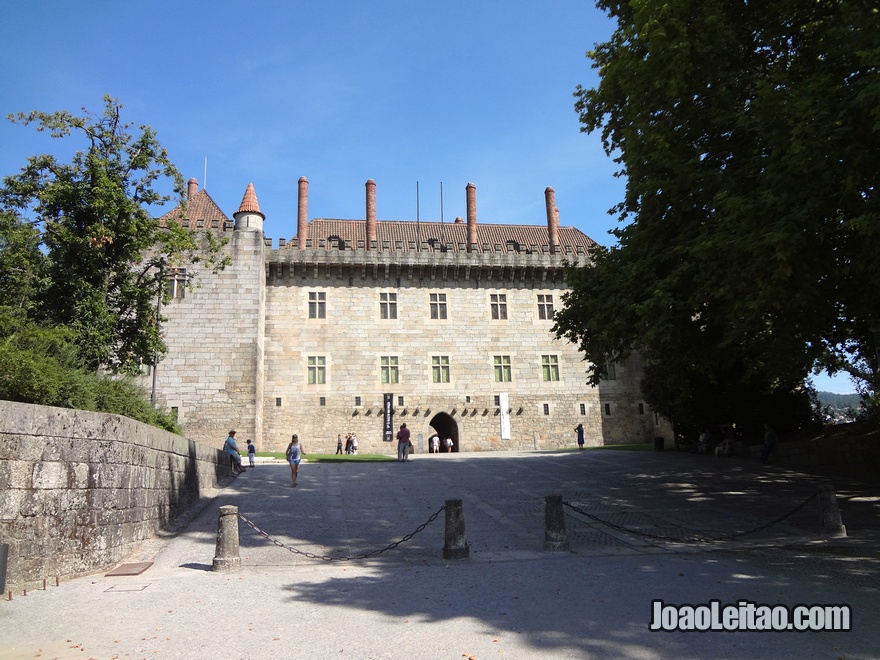
Guimarães is known as the birthplace of Portugal. In fact, on one of the towers of the city wall we can read “Here was born Portugal”. It was also in Guimarães that Afonso Henriques, who would become the first king of Portugal, was born. He was responsible for the conquest of the territory that is Portugal nowadays.
What to visit in Guimarães
- Duques de Bragança Palace
- Santo António dos Capuchos Convent
- Alberto Sampaio Museum
- Guimarães Castle
- Santiago Square
- São Miguel do Castelo Church
- Nossa Senhora da Oliveira Church
- São Francisco Church
- Toural Square
- Rua de Santa Maria Street
- Old Town Hall
- Nossa Senhora da Conceição Church
- Santa Clara Convent
- Padrão do Salado
- São Domingos Church
- Vila Flor Palace
- Rua D. João I Street
- Rua Nova Manor House
- Lobo Machado Manor House
- Misericórdia Church
- Dominicas Church and Convent
- Arts Laboratory
- Martins Sarmento Archaeology Museum
- Memory House
- Living Science Centre
- City Park
- Penha Park
- Mumadona Square
- Citânia de Briteiros Archaeological Site
- Penha Sanctuary
- D. Afonso Henriques Statue
- São Dâmaso Church
- São Pedro Church
- Nossa Senhora do Carmo Church
67. Mira de Aire Caves
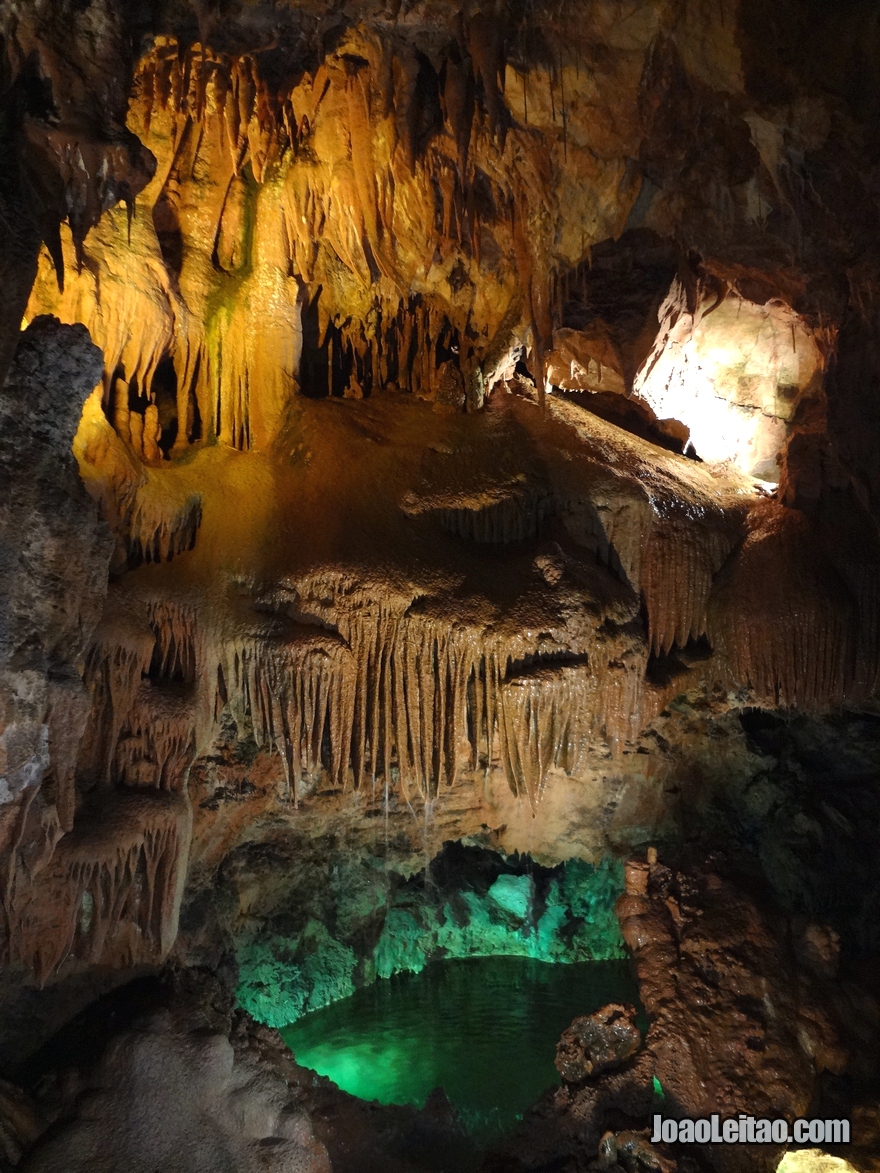
Mira de Aire Caves are the largest complex of caves in Portugal. It was occasionally discovered in 1947 and opened to the public in 1974. Until now, 11 km of caves have been found, but only 600m can be visited. This is is already a considerable extension, and it enables to view the beautiful galleries with underground rivers and massive stalactites and stalagmites. Mira de Aire Caves are in a limestone mountain. Being limestone a highly permeable rock, water does not flow on the surface, it infiltrates almost immediately and runs through streams underground. On the other hand, water wears the limestone, forming the galleries and carving the caves’ walls.
What to visit in Mira de Aire Caves
-
- Mira de Aire Caves
- Sundial
- Rock Garden
- Windmill
- Exhibition
-
- Water Park
- Cave Houses
- Moinhos Velhos Cave
- Serra de Aire e Candeeiros Natural Park
- Bandstand
68. Vide rock carvings
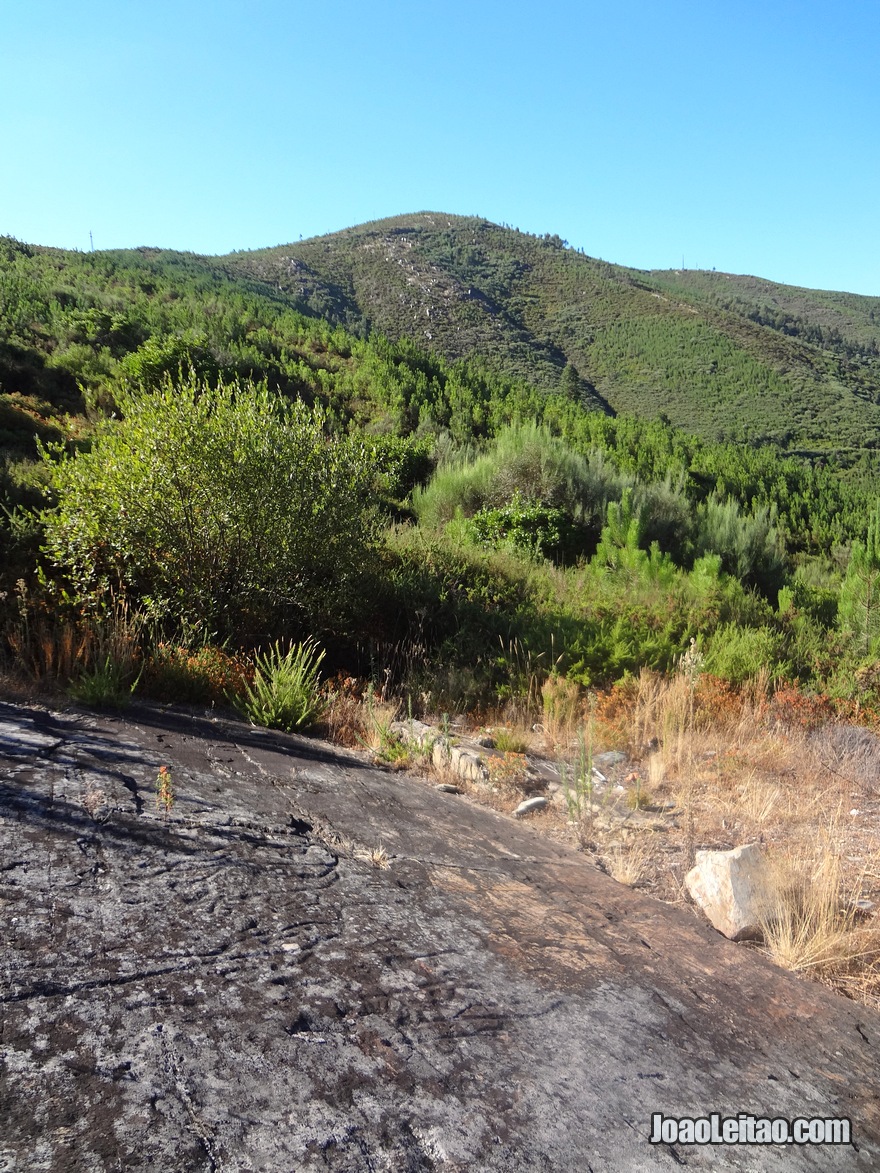
The village of Vide is located in Seia municipality. In the region there are three archaeological sites with petroglyphs (Horseshoes, Carvalhinhos and Cid Fountain). The rock carvings date from prehistory and protohistory (most recent), and in the case of Horseshoe site the rock carvings belong to the Bronze Age.
What to visit in Vide rock carvings
- Nossa Senhora da Assunção Church
- Senhor do Calvário Chapel
- Nossa Senhora da Guia Chapel
- Senhora da Póvoa Chapel
- Nossa Senhora de Fátima Chapel
- Ribeiro Fountain
- Poço da Broca Waterfall
- Poço dos Caneiros Waterfall
- São João Degolado Chapel
- Rua do Passadiço Street
- Pillory Ruins
- Varandas de Vide
- Ribeira do Alvoco
- Ribeira da Loriga
- Roman Bridge
- Várzea Dam
- Ferreiros Dam
- Covões Village
- Vide Rock Carvings
- Archaeological Sites
- São José Chapel
69. Freixo de Espada à Cinta
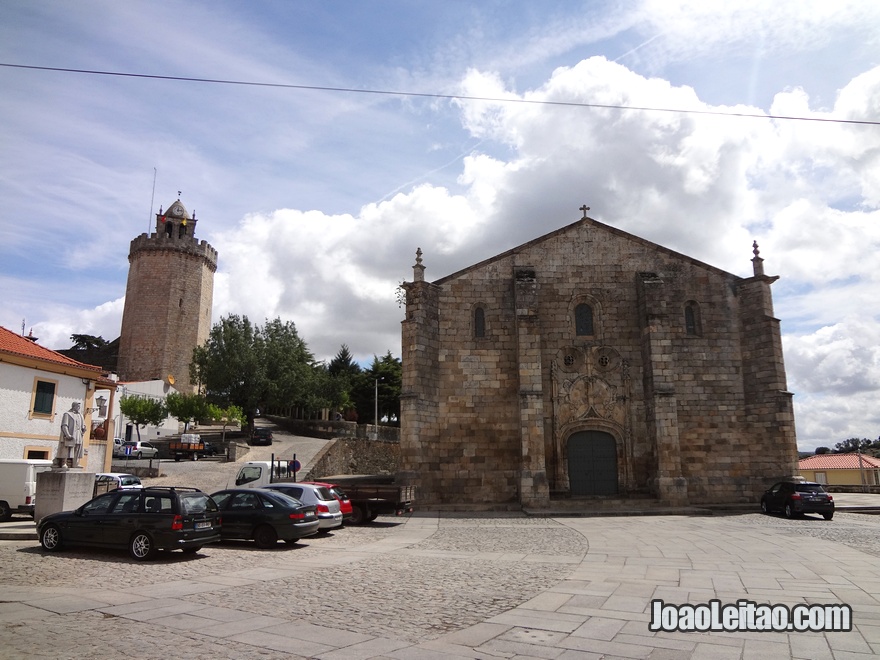
Freixo de Espada à Cinta is part of Douro International Natural Park and belongs to Bragança district. Its location on the border caused it to be a target of attacks from other peoples. Freixo de Espada à Cinta Castle and Roster Tower were therefore important lookout points, and they still maintain their medieval traces. The main church has got a beautiful door in “Manuelino” style which is also present on doors and windows almost everywhere around the village.
What to visit in Freixo de Espada à Cinta
- Pillory
- Galo Tower
- Craft Center
- Rock Art
- Penedo Durão Scenic Viewpoint
- Douro International Natural Park
- Congida River Beach
- “Manueline Style” Windows
- Parish Church
- Freixo de Espada à Cinta Church
- Misericórdia Chuch
- São Filipe de Nery Convent
- Jorge Álvares Square
- Casa Junqueiro Museum
- Silk Museum
- Mazouco Rock Art
70. Three Kingdoms Rock
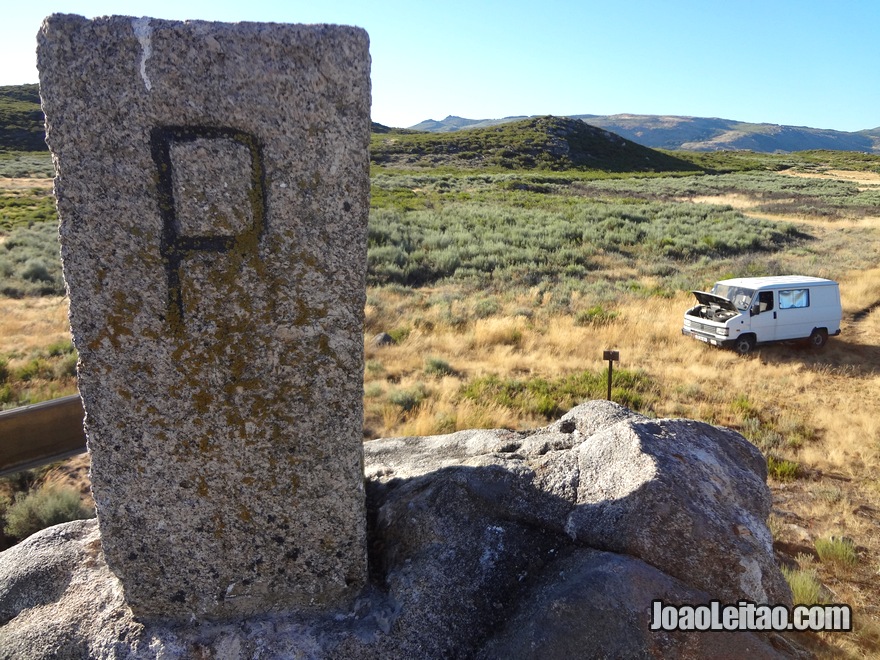
Fraga dos Três Reinos (Three Kingdoms Rock) is a monument consisting of a rock (fraga) with a milestone that indicates the place where the kings of three kingdoms – Portugal, Castile and Leon (Spain still didn’t exist by then) – have met to decide on the ownership of a well claimed by the three kingdoms. The monument stands in Moimenta, an inland region on the border with Spain.
What to visit in Three Kingdoms Rock
- Moimenta Parish Church
- Three Kingdoms Rock
- Serra de Montesinho
- Vinhais Village
71. Foz d’Égua
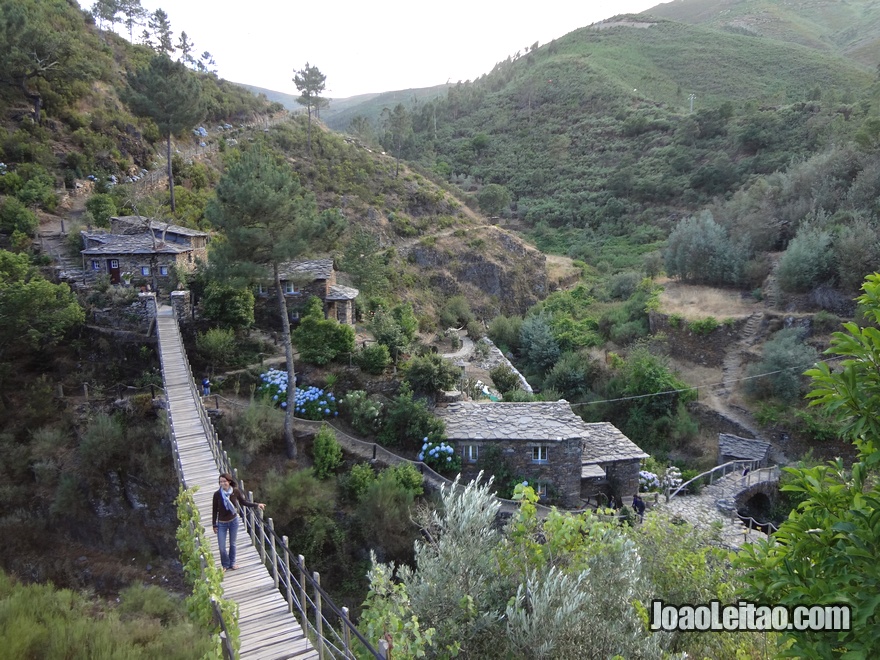
Foz d’Égua is a typical shale village very close to Piódão, in Arganil municipality, and it is one of the well-known “Historic Villages of Portugal”. The village of Foz d’Égua is beautiful with its nicely kept shale houses and a breathtaking scenery: a suspended wooden bridge completes the setting of a lost village in the middle of an almost wild nature.
What to visit in Foz d’Égua
- Foz d’Égua River Beach
- Ribeira de Piódão
- Ribeira de Chão d’Égua
- Serra do Açor
- Foz d’Égua Village
- Piódão Village
72. Vila Nova de Foz Côa
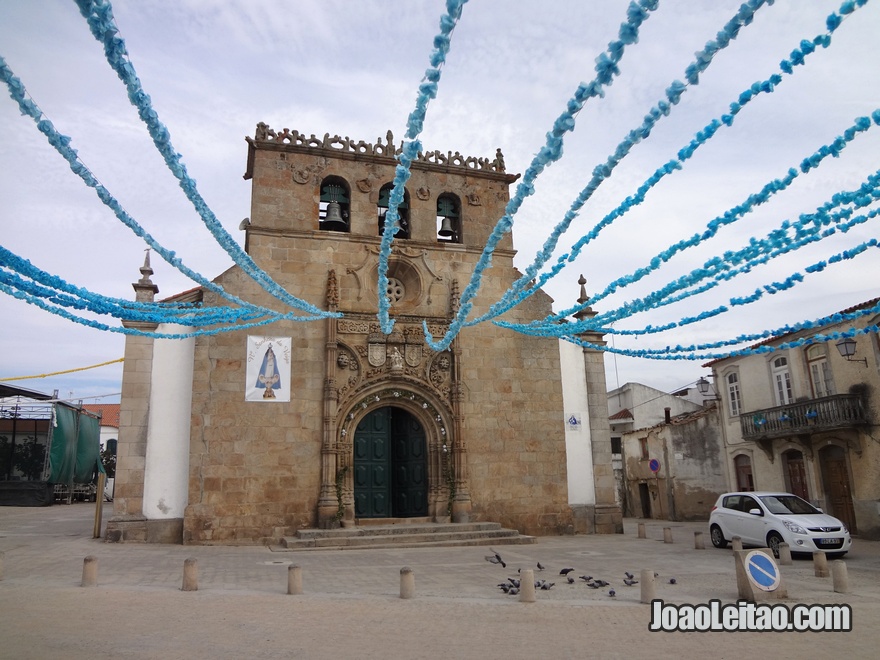
Vila Nova de Foz Côa stands in the northern Portugal inland, in Guarda District. The village received its first charter in 1299 during the reign of King D. Dinis. The national monuments in this village such as Numão Castle (in the neighboring parish Numão), Pelourinho and Vila Nova de Foz Côa Main Church confirm its importance at that time. In the 90s the village has returned to the spotlight due to the discovery, in 1994, of rock carvings in the banks of River Côa, with the highest concentration of rock carvings in the area of Vila Nova de Foz Côa.
What to visit in Vila Nova de Foz Côa
- Pillory
- Parish Church
- Santa Quitéria Chapel
- Andrades Manor House
- Clock Tower
- São Pedro Chapel
- Santa Bárbara Chapel
- Vale do Côa Archaeology Museum
- Tourism Office
- Red House
- Vale do Forno Prehistoric Rock Art Site
- Santo António Chapel
- Canada do Inferno Prehistoric Rock Art Site
- Vale Cabrões Prehistoric Rock Art Site
- Linha do Douro Railway
- Douro Vinhateiro Region
- Caminho da Costa Scenic Viewpoint
- Santa Luzia Scenic Viewpoint
73. Archaeological Park of Vale do Côa
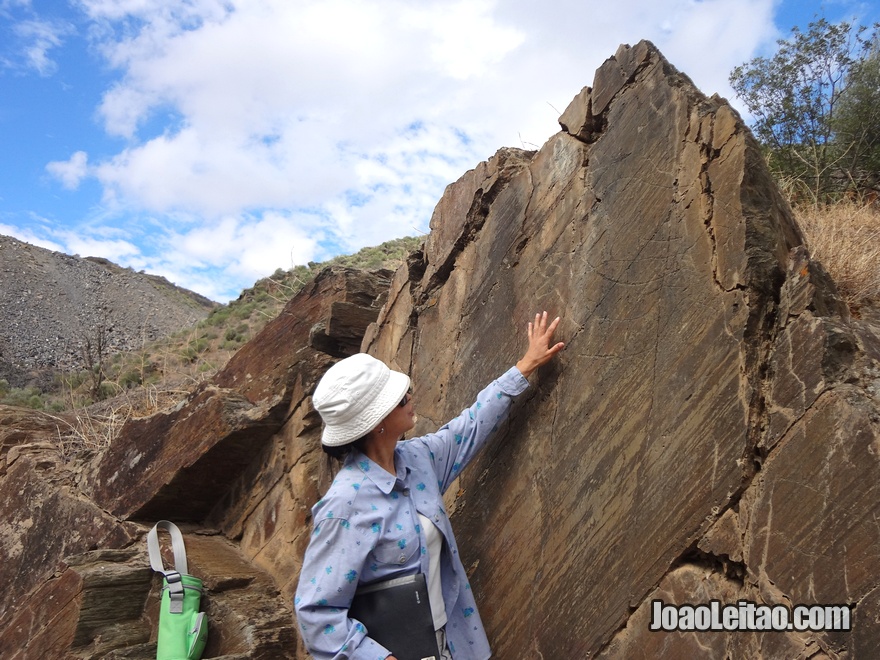
The Archaeological Park of Vale do Côa is one of the most important historic sites in the country. It is an open air museum that stretches along the banks of the Côa River over the last 17 km of this river till it joins Douro River. It is one of the largest archaeological complexes of rock carving in the world. The figures drawn in shale rocks are between 15cm and 180cm, but most are between 40-50 cm and represent animals: horses and bovines. The park was opened in August 1996, and it received the distinction of UNESCO World Heritage Site right after, in 1998.
What to visit in Archaeological Park of Vale do Côa
- Archaeological Park of Vale do Côa
- Vale do Côa Archaeology Museum
- Douro River
- Quinta de Ervamoira Archaeological Site
- Canada do Inferno Prehistoric Rock Art Site
- Penascosa Prehistoric Rock Art Site
- Ribeira de Priscos Prehistoric Rock Art Site
- Salto do Boi Prehistoric Site
- Douro Vinhateiro Region
74. Fontanelas
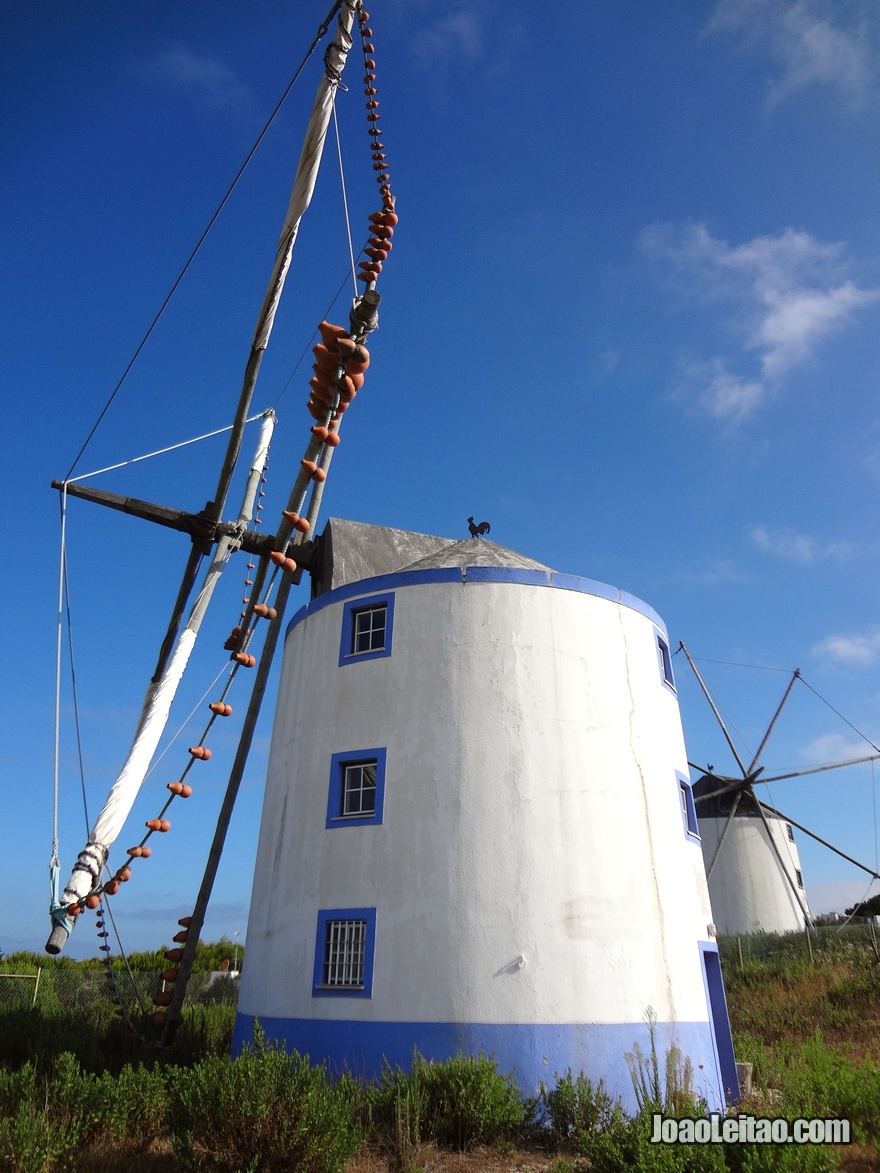
Fontanelas is a small village near the Atlantic coast about 8.5 km from Sintra. Outside the village you can see some beautiful and very well kept specimens of windmills. The proximity of the coast and the abundance of sea wind provided the proper functioning of the mills, and in the 18th century there were about 500 mills in Lisbon area, which guaranteed the production of an average of half a kilogram of bread per person.
What to visit in Fontanelas
- Windmills
- Aguda Beach
- Fontanelas Village
75. Fojo do Lobo
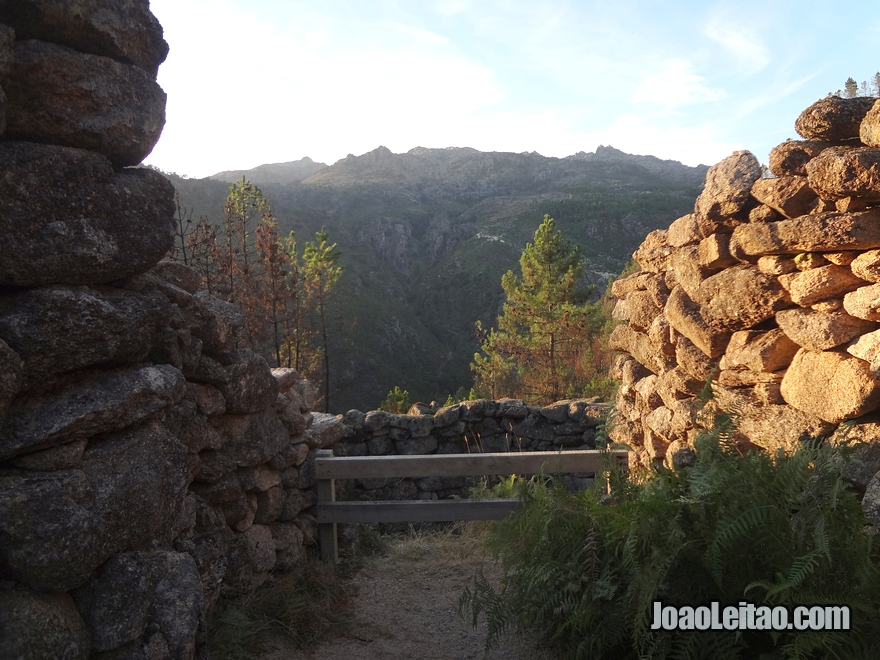
Fojo do Lobo de Fafião – “fojo” is a trap disguised in a cave or shelter, which was used to hunt wild animals, wolves in this case. The stone structure was built in order to trap the wolf. In Fafião village, which lies right in Peneda-Geres National Park, in Montalegre municipality, there are a few of these recently restored buildings.
What to visit in Fojo do Lobo de Fafião
- Fojo do Lobo Wolf Trap
- Vezeira Trail
- Fafião Village
- Peneda Gerês National Park
- Cabril Lagoons
- Salamonde Dam
76. Faro
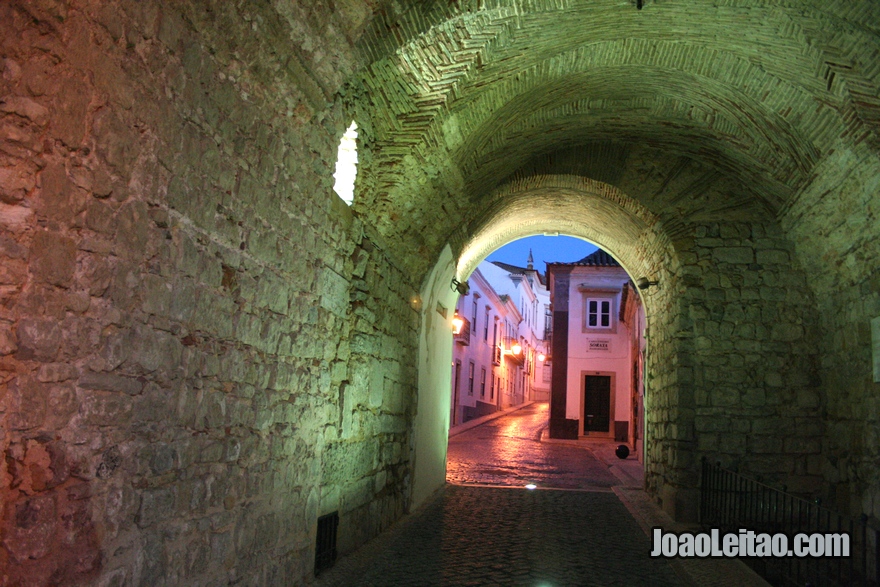
Faro is the capital city of the Algarve, the southernmost region of Portugal. Its prominent location in the western Mediterranean has made it a much-desired territory by several ancient peoples. The first people to arrive were the Phoenicians around the 8th century BC. After came the Romans and the Visigoths between 3rd and 8th centuries AD, then the Moors, who took the city in 713 AD, and only in 1249 D. Afonso III conquered it from the Moors, thus completing the Christian Reconquest and the complete delimitation of Portugal territory.
What to visit in Faro
- Old Jewish Cemetery
- Casa das Figuras
- Mateus da Silveira Manor House
- Lethes Theatre
- São Francisco Convent
- São Luís Chapel
- Santo António do Alto Chapel
- São Francisco Church
- Fialho Manor House
- Palace of Justice
- Guerreirinho Manor House
- São Sebastião Chapel
- Town Arch
- Customs House
- Bank of Portugal
- Café Aliança
- Faro Harbourmaster
- Arouca Manor House
- Açafatas Manor House
- Compromisso Manor House
- Lamprier Manor House
- Town Hall
- Arab Door
- Revelim Fortress
- Cúmano Mansion
- São José Seminary
- Ria Formosa
- Ribeirinho Park
- Tenente Manor House
- Castle / Brewery
- Faro Cathedral
- Faro Museum
- Bandstand
- Nossa Senhora do Ó Chapel
- Nossa Senhora do Pé da Cruz Chapel
- Civil Government
- Misericórdia Church and Hospital
- Santo António dos Capuchos Church
- São Pedro Parish Church
- Town Walls
- Arco do Repouso
- Byzantine tower
- Pantojas Manor House
- Gárfias Manor House
- Capitão Mor Manor House
- Manuel Bívar Garden
- Mata do Liceu
- Almirante Ramalho Ortigão Maritime Museum
- Faro Marina
- Algarve Stadium
77. Évora
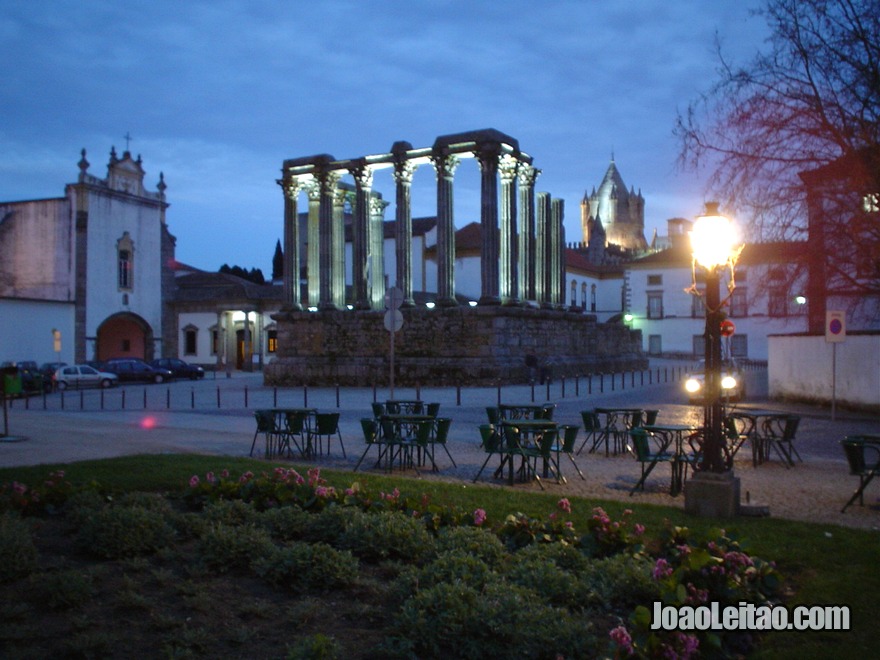
Évora is a very rich city in what concerns history and architecture, and where it is visible the track of several peoples. The Roman influence is the strongest, which remains today in several monuments around the city. The historic center of Évora has been considered a UNESCO World Heritage Site since 1986.
What to visit in Évora
- Bones Chapel
- Giraldo Square
- Évora Cathedral
- Roman Temple
- Santo Antão Church
- Almendres Cromlechs and Menhir
- Duques de Cadaval Palace
- São Francisco Church
- Dom Manuel Palace
- Town Hall
- Évora Museum
- São Miguel Palace
- Graça Church
- Carmo Church and Convent
- Misericórdia Church
- Alto de São Bento Viewpoint
- Antas do Barrocal Archaeological Site
- Portas de Moura
- Garcia de Resende Theatre
- Dragões de Évora Military Base
- D. Isabel Roman Arch
- Água de Prata Aqueduct
- Aviz Gate
- Anta Grande do Zambujeiro Archaeological Site
- Cartuxa Convent
- Garcia Resende House
- Watch Museum
- Roman Ruins
- Public Library
- Cordovil House
- Metrology Museum
- Portas de Moura Fountain
- Nossa Senhora do Ó Chapel
- São Vicente Church
- São Mamede Church
- Senhora da Pobreza Church
- Salvador do Mundo Church
- Frei Manuel do Cenáculo National Museum
- Évora University
78. Cresmina Sand Dune
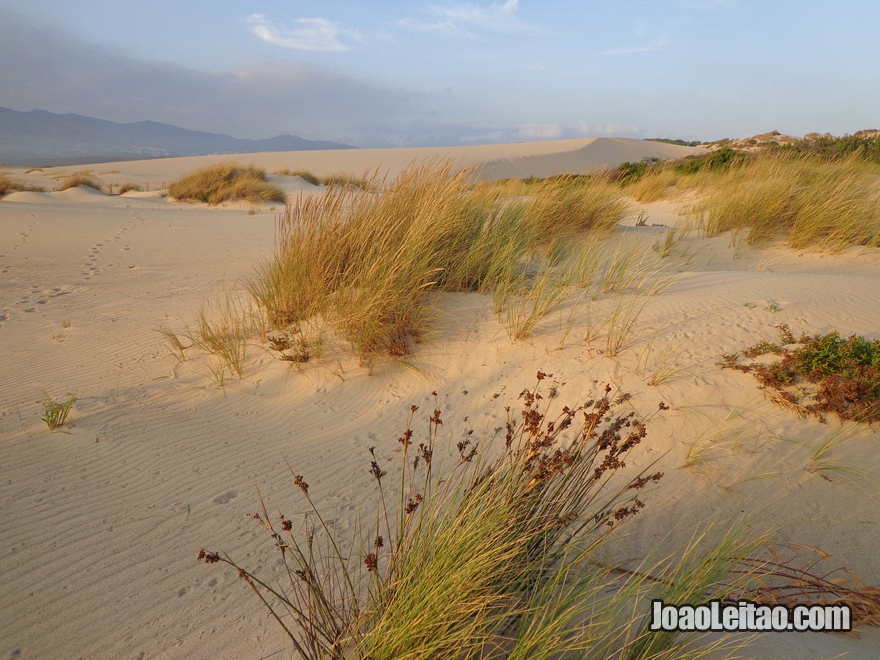
Cresmina Sand Dune is close to Guincho beach, a place of rich biodiversity, where it was recently built a 2km walkway over the dune, which lets you look around the site observing plant species outlined in the so-called “Interpretive Trail”. The local fauna is also a subject of interest, but seeing animal species always involves a bit of luck, thus unlike plants they are not standing still waiting for the visitors.
What to visit in Cresmina Sand Dune
- Cresmina Sand Dune Interpretation Centre
- Guincho Beach
- Cresmina Beach
- Sintra Cascais Natural Park
79. Almendres Cromlech
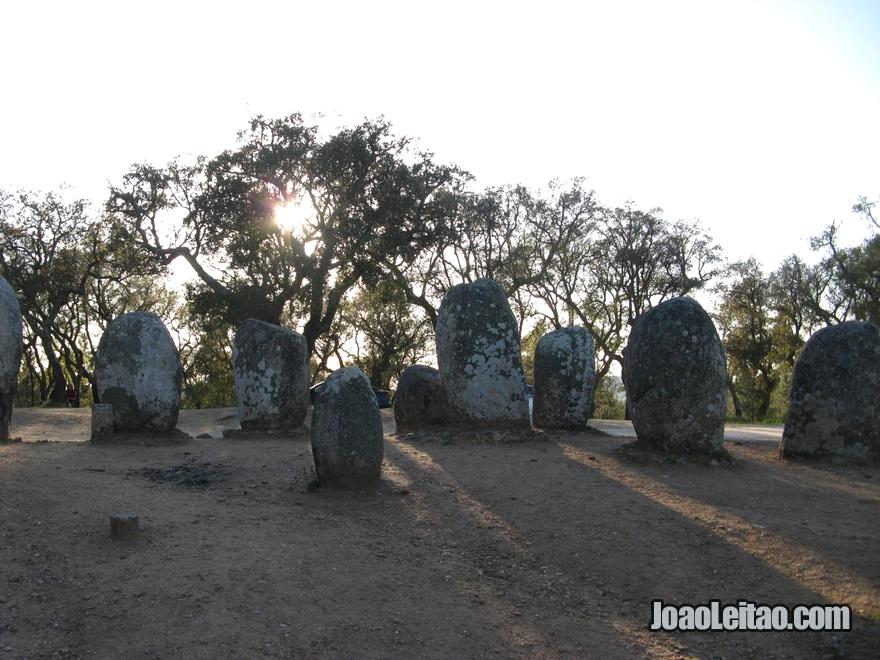
Almendres Cromlech is an archaeological site which stands about 12 km far from Évora. In fact the region of Évora is rich in prehistoric monuments from the Neolithic to the Iron Age. The Cromlech of Almendres is a circle of 95 stone monoliths, and due to its size and conservation status is one of the most important megalithic monuments in the Iberian Peninsula.
What to visit in Almendres Cromlech
- Almendres Menhirs
- Almendres Cromlech
- Giraldo Castle
- Anta Grande do Zambujeiro Archaeological Site
- City of Évora
80. Costa da Caparica
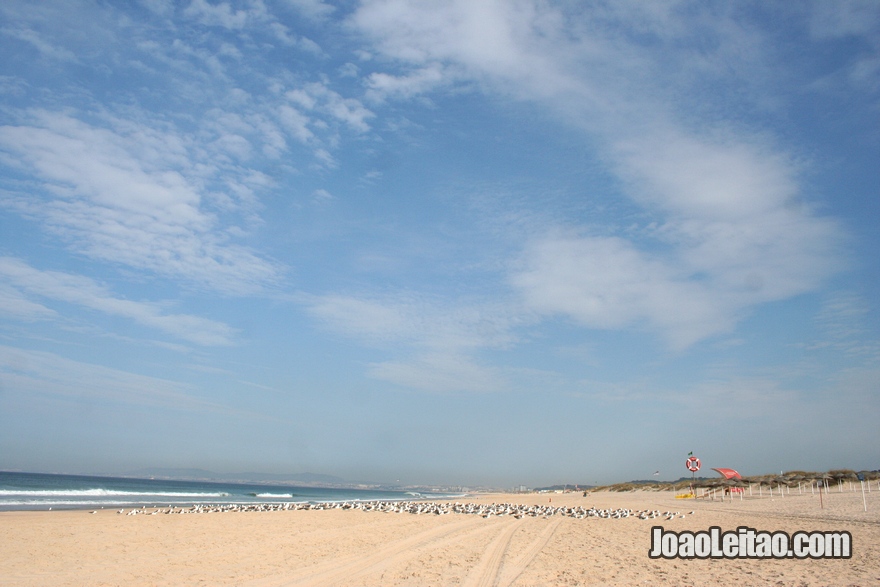
Costa da Caparica is traditionally the beach for those living in Lisbon. It lies on the south bank of Tagus River, just a short distance from the capital and it is the main beach destination due to the proximity and layout: long sandy beaches and good infrastructures. The whole of Costa da Caparica beaches stretch for over 10 km.
What to visit in Costa da Caparica
- Chibalta Lighthouse
- Capuchos Convent
- Fonte da Telha Beach
- CDS Beach
- São João Beach
- Nova Beach
- Tarquínio Paraíso Beach
- Medos Beach
- Sol Beach
- Raínha Beach
- Cabana do Pescador Beach
- Costa da Caparica Fossil Cliff
- Dragão Vermelho Beach
- Municipal Market
- Vasco da Gama Square
- Saúde Beach
81. Chaves
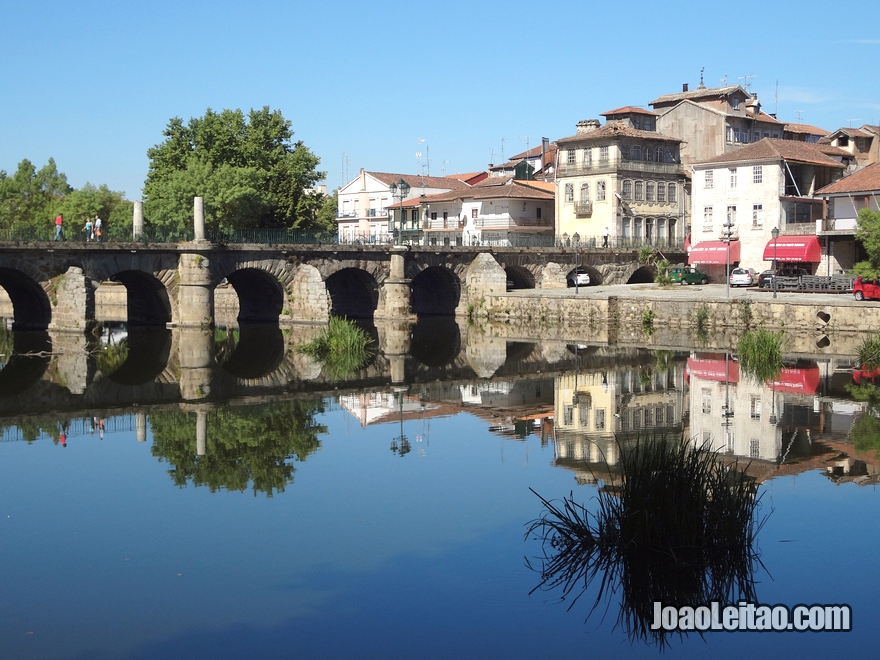
Chaves stands in the northernmost region of Portugal, bordering Spain. Given its position at the border and close to a major water stream, Tâmega River, the city was constantly invaded by Romans, Northern Europe Barbarians, and later by the Moors, until it finally became part of the territory of Portugal in 1160. The Romans left important traces in the city such as its own name – Chaves from the Latin word Flaviae (Aquae Flaviae was the name of the city during the Roman rule and comes from the name of the Emperor Titus Flavius Vespasian). The well-preserved Trajan Bridge remains from this period. Also, the tradition of public baths is still present in the famous thermal waters of Chaves. To defend the city from imminent invaders threats, D. Afonso III built the Chaves Castle in 1258, the same year he awarded the charter to the city. The Old Town of Chaves is beautiful, with narrow streets flanked with houses that preserve the architecture of the region with overhanging wooden balconies, beautifully adorned with flower beds.
What to visit in Chaves
- Trajano Roman Bridge
- Pelourinho Square
- Keep Tower
- Madalena Church
- Monforte Castle
- Santa Maria Maior Church
- Misericórdia Church
- Lapa Church
- Salezianos Church
- São Roque Chapel
- Santo Amaro Chapel
- Thermal and Water Route
- Camões Square
- Chaves Waterfront
- Senhor dos Passos Chapel
- São Neutel Fortress
- Chaves Library
- Town Hall
- Flaviense Museum
- Nadir Afonso Museum of Contemporary Art
- Freiras Garden
- Tâmega River
- Chaves Spa Town
- Chaves Casino
- Nadir Afonso Museum of Contemporary Art
- Portuguese Way (Camino de Santiago)
82. Castro São João das Arribas
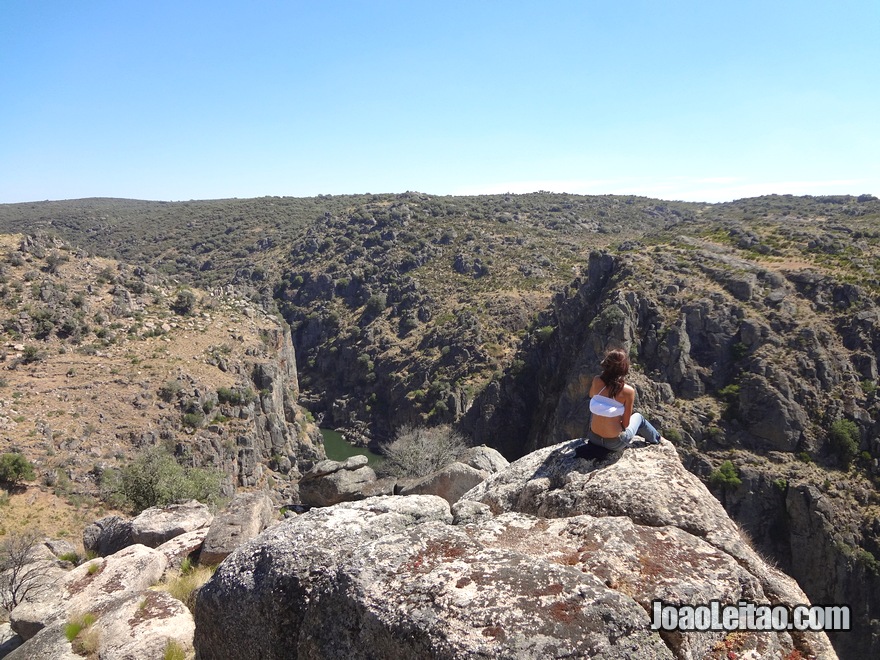
Castro São João das Arribas is in Douro International Natural Park and has a privileged view over the beautiful landscapes of the region. “Castro” means castle or fortress around which the town grew up. The remaining wall ruins must be from the Iron Age, having been rebuilt and used after that by the Romans.
What to visit in Castro São João das Arribas
- Castro São João das Arribas Trail
- Castro São João das Arribas Scenic Viewpoint
- Castro São João das Arribas Archaeological Site
- Picnic Area
- São João Chapel
- Fountains
83. Castro Laboreiro
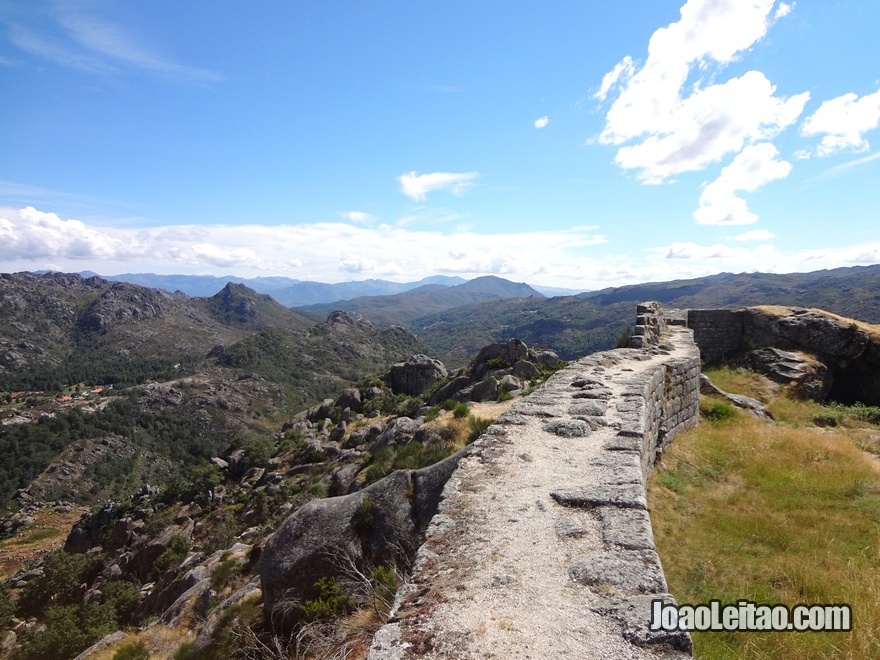
Castro Laboreiro belongs to the so-called roadmap of “typical villages of Portugal”. It lies in Serra da Peneda, inside Peneda-Gerês National Park, one of the main natural resources of the country. The castle on the hill offers one of the most beautiful views in the country.
What to visit in Castro Laboreiro
- Old Bridge
- Castelo Trail
- Castro Laboreiro Castle
- Pillory
- Castro Laboreiro Watermills
- Castro Laboreiro Viewpoint
- Parish Church
- Castro Laboreiro River
- New Bridge
- Rodeiro Bridge
- National Park Gate (Lamas de Mouro)
- Castro Laboreiro Museum
- Padre Aníbal Rodrigues Statue
- Tourism Office
- Castro Laboreiro Library
- Laboreiro Waterfall
- Traditional Oven
- Old Town Hall
- Quingosta Calvary
- Pontes Aqueduct, Calvary and Wayside Shrine
84. Castro do Zambujal
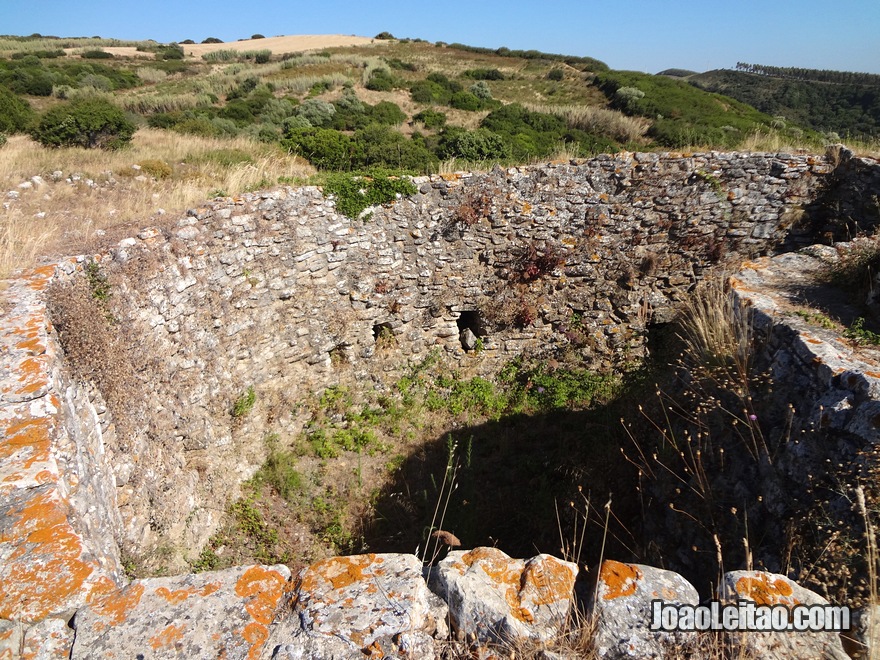
Castro do Zambujal is 3 km away from Torres Vedras, in the region of Extremadura, where there are several similar castles. Castro do Zambujal is a legacy dating back to the 3rd millennium BC. It is impressive how such an ancient historic legacy has remained till today.
What to visit in Castro do Zambujal
- Castro do Zambujal
- Castro do Zambujal Trail
- City of Torres Vedras
85. Castelo Rodrigo
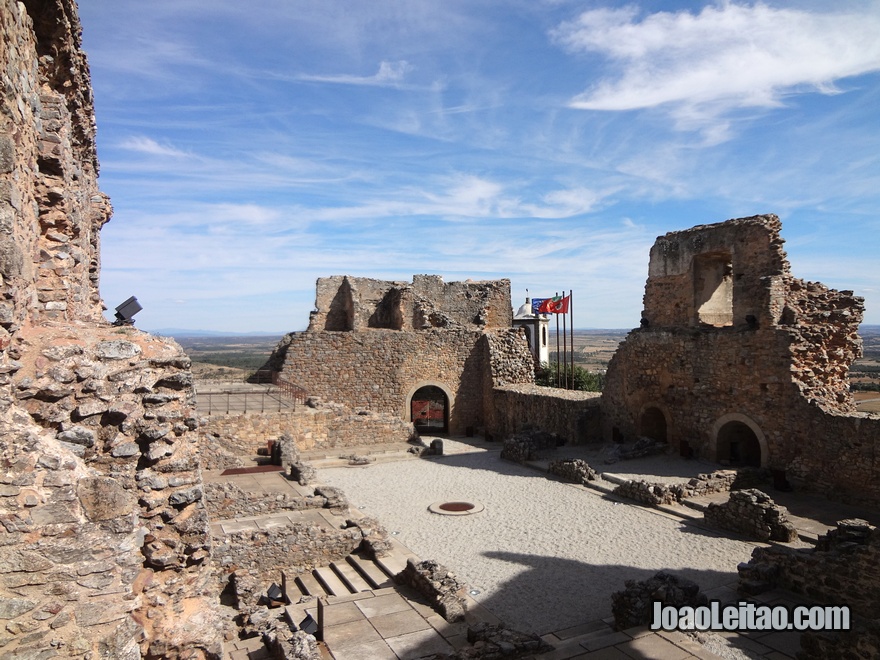
Castelo Rodrigo is a historic village in Portugal inland, in Guarda district, near the border with Spain. Today it belongs to Figueira de Castelo Rodrigo municipality, and keeps a small population within the walls of the Castle. The houses reveal different influences such as “Manuelino” style, which can be seen on the windows and Arabic style arched doorways.
What to visit in Castelo Rodrigo:
- Old Town Hall
- Misericórdia House
- Castle and Walls
- Medieval Cistern
- Parish Church
- Monument to Restauration
- Cristóvão de Moura Palace
- Pillory
- Donjon
- Keep Tower
- Cross Shaped Embrasures
- Semi-Circular Turrets
- Sun Gate
- São João Square Gate
- Tourism Office
86. Castelo Mendo
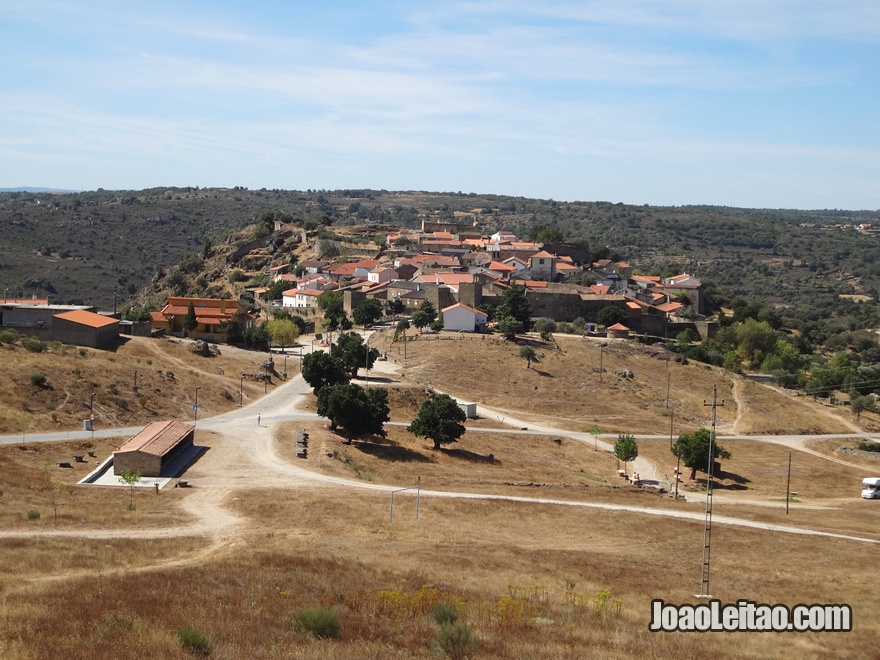
Castelo Mendo is 20 km away from the historic village of Almeida, a region higher than 800m above the sea level, near Côa River. In the village there is a castle from the 13th century, which gives the name to the village. The houses are typical granite buildings with two floors and the ground floor was used to shelter cattle.
What to visit in Castelo Mendo:
- Medieval Paving
- XVI Century House
- Castle and Walls
- Misericórdia Hospital
- Oven
- Manueline Houses in Rua do Forno
- São Vicente Church
- Parish Church
- Nobleman’s Tomb
- Pillory
- Guarda Gate
- Town Gate
- Castelinho Gate
- Tourism Office / Senses Museum
- Nobleman’s Mansion
- Santa Maria do Castelo Church
87. Castelo Melhor
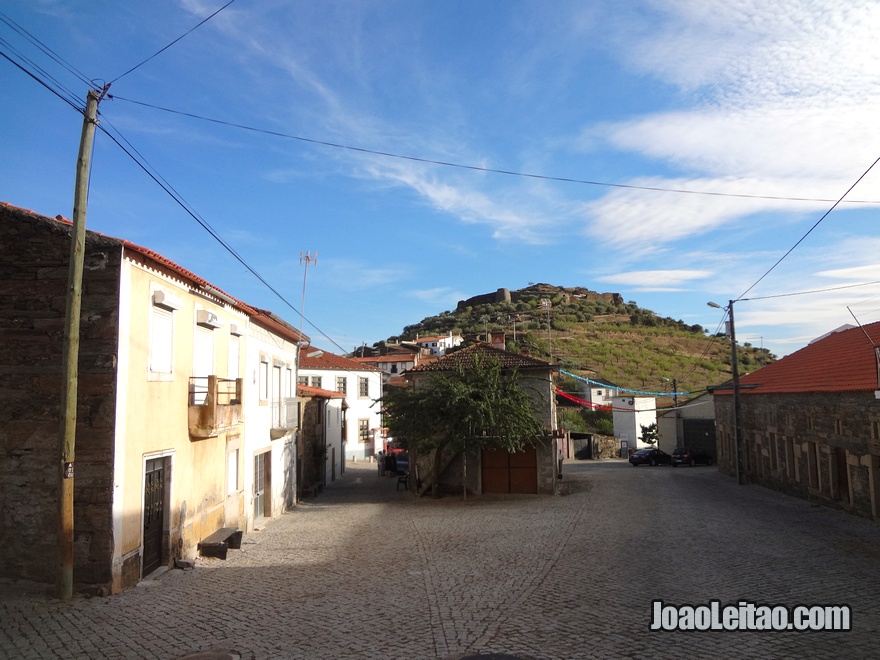
Castelo Melhor is a village north of Castelo Mendo, 13 km away from Vila Nova de Foz Coa. The castle is from the early 11th century (1210), and only the round walls on top of the hill are still standing. The village, which in the Middle Ages was inside the walls, was moved down to the lower lands.
What to visit in Castelo Melhor:
- Castle and Walls
- Semi-Circular Turrets
- Cistern
- Castelo Melhor Parish Church
- People Fountain
- Fonte Frieira Prehistoric Rock Art Site
- Meijapão Prehistoric Rock Art Site
- Santa Barbara Chapel
- Arcanjo São Gabriel Chapel
- Castelo Melhor Railway Styation
- Penascosa Prehistoric Rock Art Site
- Broeira Prehistoric Rock Art Site
- Vale dos Namorados Prehistoric Rock Art Site
- Canada da Moreira
88. Monforte Castle
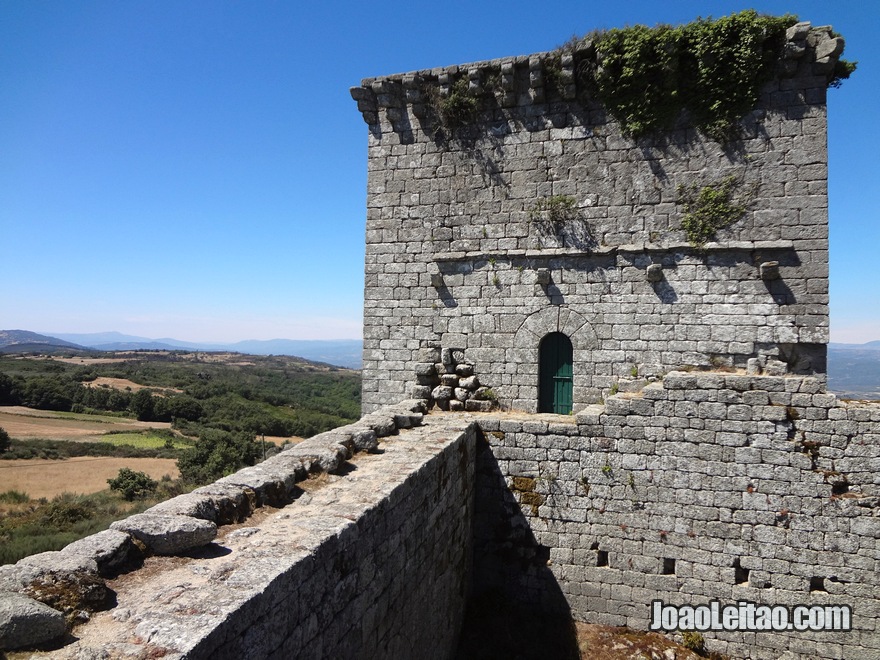
Monforte Castle stands in Águas Frias municipality, in Trás-os-Montes region. Here there was a prehistoric castle which was later recuperated by the Romans. The construction of the castle on top of the mountain allowing to see the entire region from Chaves to Verin in Spain, started in 1273 right after the village received a charter by King Afonso III.
What to visit in Monforte Castle:
- Castle and Walls
- Keep Tower
- Cistern
- Galeão Gate
- Ribeira de Águas Livres
- Águas Frias Village
- Serra do Brunheiro
89. Almourol Castle
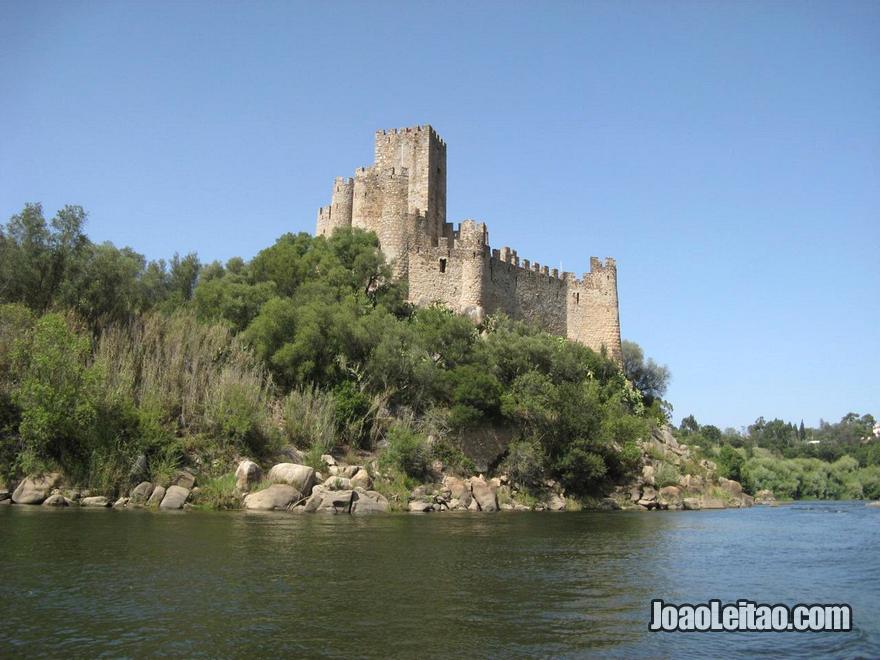
The beautiful Almourol Castle stands in Santarém district, more precisely in Vila Nova da Barquinha parish. Several elements combine themselves to shape up the beauty of this monument. The castle is located on a small islet in the Tagus River, which houses the castle only. All around the castle a water mirror reflects its image, making it a unique monument. Its construction started in 1129 by the Templars Knights, who gave it an austere architecture, which was later changed during the reconstruction after the extensive damages caused by the earthquake of 1755. This castle was the official residence of the President of Portugal during Estado Novo.
What to visit in Almourol Castle:
- Castle and Walls
- Keep Tower
- Tejo River
- Castelo de Zêzere Ruins
- Praia do Ribatejo Bridge
- Loreto Convent
- Tancos Halt
90. Portela do Homem Waterfall
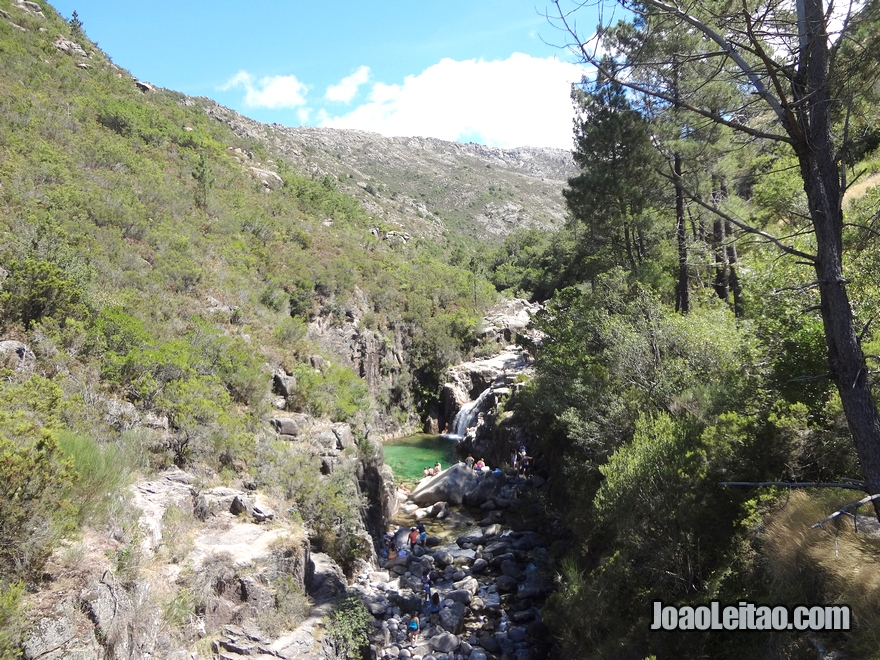
Portela do Homem is situated in Serra do Gerês, between Portugal and Spain. Its magnificent waterfall is a hidden paradise of clear crystal water in the middle of the mountains, close to the border between the two countries. Nearby we can find milestones that show the existence of an important Roman road linking Bracara Augusta (Braga) to Astorga in Spain.
What to visit in Portela do Homem Waterfall:
- Portela do Homem Waterfall
- Peneda Gerês National Park
- Homem River
- Mata da Albergaria Forest
- Preguiça Trail
- Roman milestones
- Geira Trail
- Minas dos Carris Trail
- Former Border Building
91. Fírvidas Waterfall
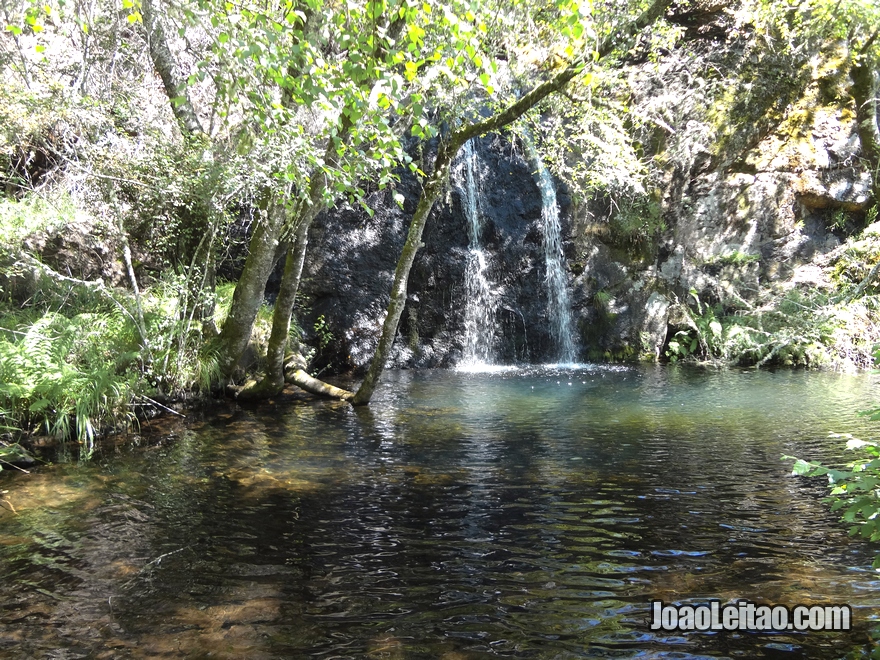
Fírvidas Waterfall is a wild nature paradise in its purest form, a few kilometers away from the village of Fírvidas in Montalegre municipality. The place is difficult to access which makes it even more special since only the most persistent tourists will keep walking through the bush tracks. However there are some plates with directions of the route.
What to visit in Fírvidas Waterfall:
- Fírvidas Waterfall
- Alto Barroso Plateau
- Fírvidas Village
- Alto Rabagão Dam
92. Caldas da Rainha
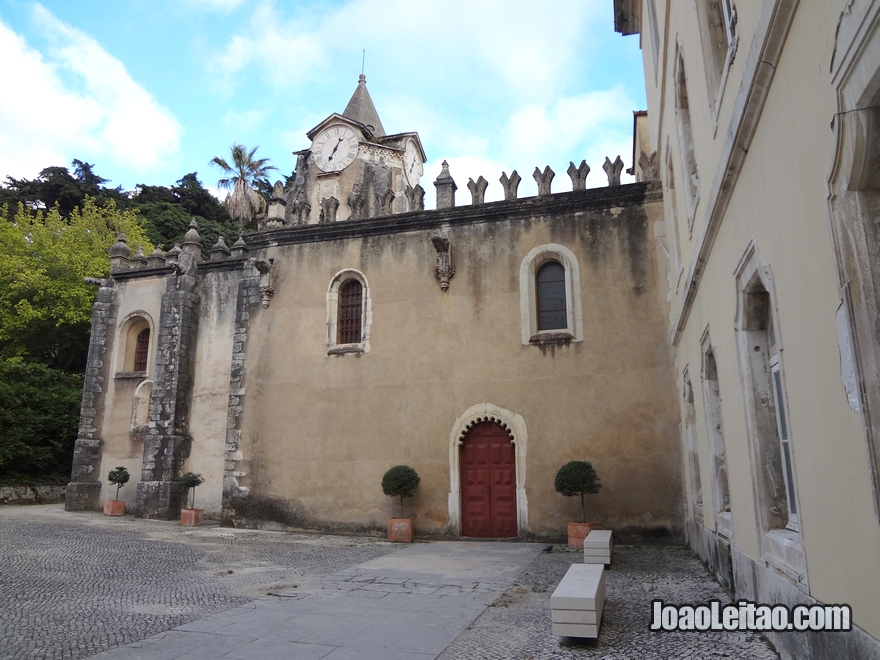
Caldas da Rainha is a city on the west coast, in the district of Leiria. Legends tell that Queen Leonor has stopped by, in the place where is today Caldas da Rainha, on her way from Batalha to Óbidos, and she saw locals bathing in strong smelling waters. As these waters were said to have medicinal properties, the Queen wanted to try it, and she has actually confirmed its healing powers since she got cured of the disease she was said to suffer from, but no one knows for sure what disease it was. Then the Queen ordered the construction of a hospital and granted privileges to those willing to establish themselves in this place. During the 19th century, Caldas da Rainha experienced its apogee, with a spa highly appreciated by wealthy families. Caldas da Rainha is also known as an important faience production center (pottery clay made) such as the famous creations of Rafael Bordallo Pinheiro, which started in Fábrica de Faianças das Caldas da Rainha, between 1884 and 1907.
What to visit in Caldas da Raínha:
- Caldas da Rainha Parish Church
- Bullring
- 25 de Abril Square
- Republic Square
- Caldas da Rainha Spa Town
- Thermal Hospital
- Town Hall
- Barata Feyo Museum
- Rafael Bordalo Pinheiro House Museum
- Caldas da Rainha Cultural Center
- Bordaliana Route
- Water Route
- Railway Station Building
- Cinco Bicas Fountain
- Espírito Santo Chapel
- São Sebastião Chapel
- José Malhoa House Museum
- São Rafael House Museum
- Rua Nova Fountain
- Cycling Museum
- Ceramics Museum
- Bus Station Building
- Rainha D. Leonor Forest
- D. Carlos Park
93. Cabo Espichel
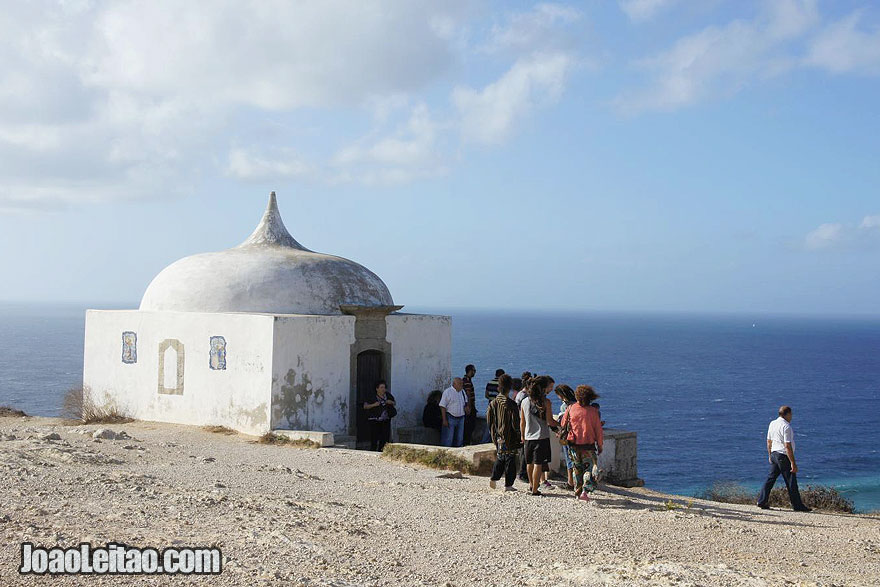
Cabo Espichel is a promontory in Sesimbra Peninsula. In the extreme promontory, there is a small chapel from the 15th century – Chapel of Memory – a white building with a very peculiar rounded dome, which marks the place where a Virgin Mary’s figure has been found. This image is now worshiped at the Shrine of Our Lady of Cabo Espichel, also known as the Shrine of Our Lady of Mua Stone, a religious complex located on the cape.
What to visit in Cabo Espichel:
- Cabo Espichel Lighthouse
- Water House
- Calvary
- Aqueduct
- Memory Chapel
- Nossa Senhora do Cabo Church
- Círios House
- Terreiro
- Opera House Ruins
- Pegadas da Pedra Mua Natural Monument
94. Bravães
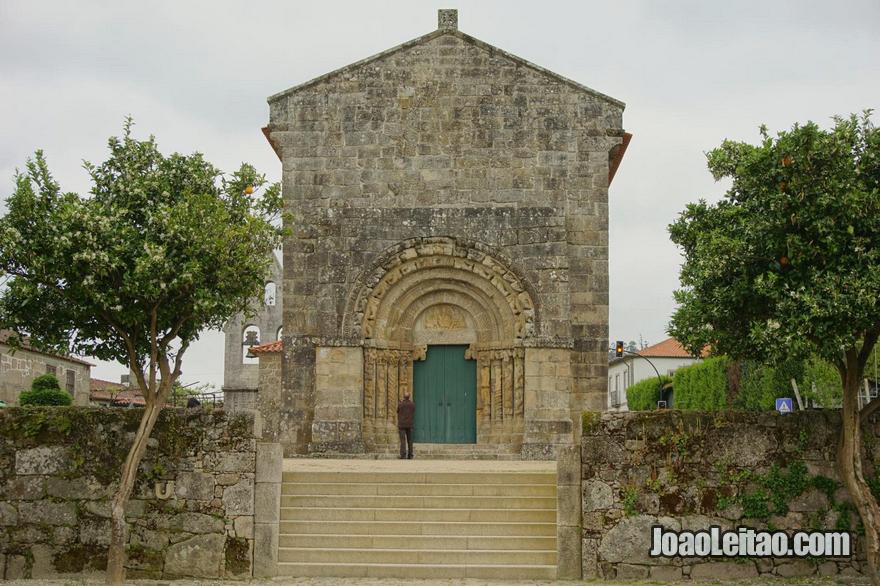
Bravães is a small village in the municipality of Ponte da Barca. The Church of Bravães is one of the finest examples of Romanesque style in Portugal. The church was built in the 12th century in the same place of a previous monastery founded by D. Vasco Nunes from Bravães in 1080, but from which there are no traces remaining. It is a pretty simple building, but the doors are richly ornamented with arches, columns and sculptures.
What to visit in Bravães:
- Bravães Romanesque Church
- Ponte da Barca Village
- Lima River
95. Bragança
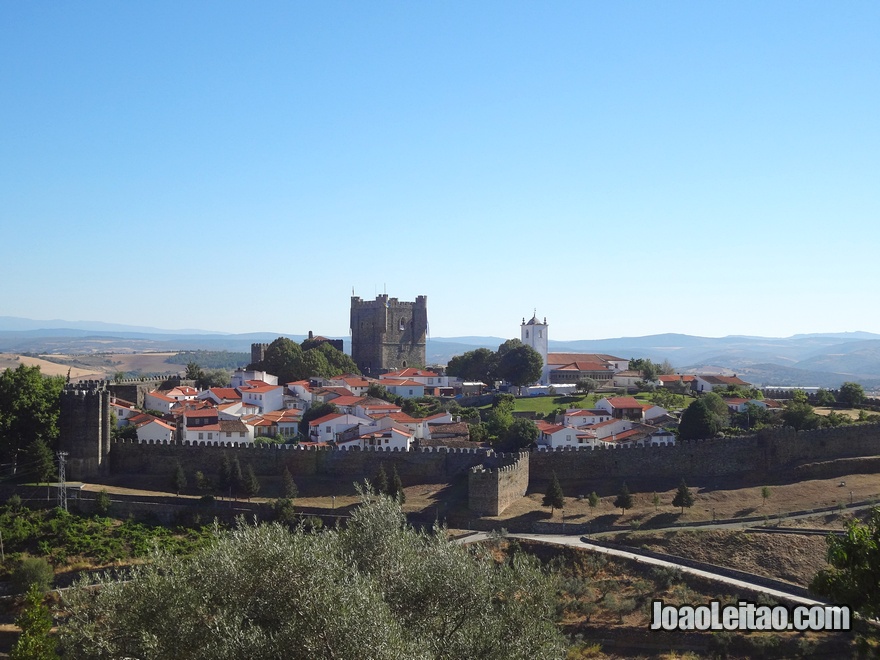
Bragança is the main city at the northeast point of Portugal. It stands in the border with Spain and for that reason it has always been the subject of territorial quarrels. It has a vast historic heritage, noticeable by the remains of several peoples.
What to visit in Bragança:
- Bragança Castle and Walls
- Keep Tower
- Pillory
- Domus Municipalis
- Bragança Sé Cathedral
- Nossa Senhora das Graças Church
- Misericórdia Church
- São Bento Church
- Lousada Sarmento Mansion
- Rei Afonso Henriques Foundation
- Jesuítas Church
- Montesinho Natural Park
- Figueiredos House
- Teixeiras Mansion
- Arco House
- Principal Building
- Calaínhos Mansion
- Morgados Mansion
- Bragança Club
- Former Town Hall
- Principal Square
- Paulo Quintela Auditorium
- Fervença River
96. Braga
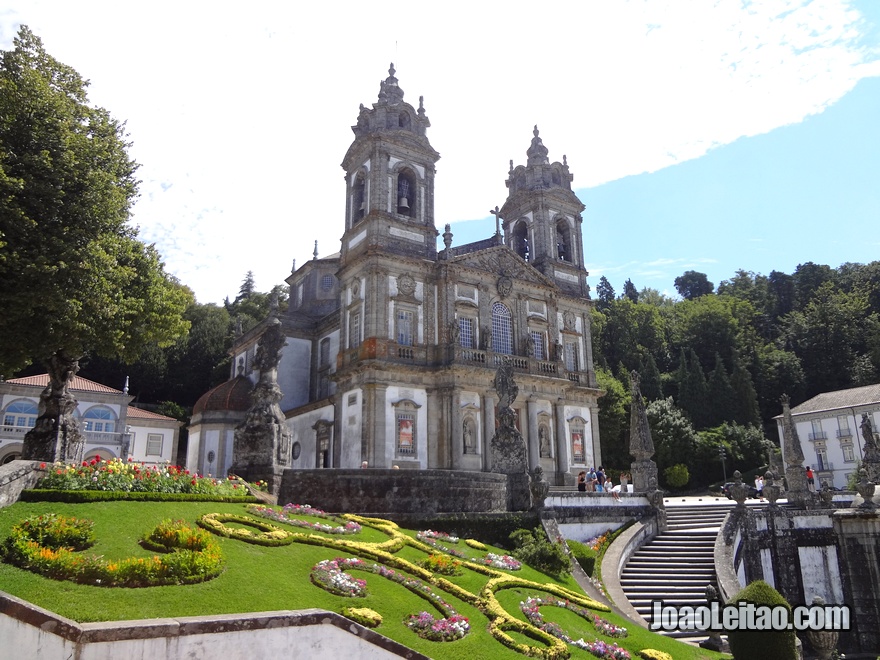
Braga is a city of great ecclesiastical importance and it is known as the city of the Archbishops. In Roman times it was called Bracara Augusta and was the main city of the territory where is Portugal now.
What to visit in Braga:
- Braga Sé Cathedral
- Rua do Souto (Street)
- Keep Tower
- Idol Fountain
- Carvalheiras Roman Ruins
- Cividade Roman Ruins
- Thermal Bath Ruins of Bracara
- Via Nova Roman Road (Geira)
- XVIII Roman Road
- XVII Roman Road
- Sameiro Sanctuary
- Bom Jesus Sanctuary
- São Frutuoso Chapel
- Coimbras House and Chapel
- São Sebastião Church
- São Vitor Church
- Santa Cruz Church
- Arch of Porta Nova
- Rodovia Park
- Pedagogical Farm
- Costume Museum
- Pópulo Convent
- Casa dos Crivos
- Raio Palace
- D. Diogo de Sousa Archaeology Museum
- Pio XII Museum
- Biscainhos Museum
- Theatro Circo
- Sete Fontes
- Este River
- City Square
- Este Bike Path
- Portuguese Way (Camino Portugues de Santiago)
- Image Museum
- Exhibition Park
- Pedreira Stadium
- Lúcio Craveiro da Silva Library
- Ponte Park
- Santa Bárbara Garden
- Tibães Monastery
97. Belver
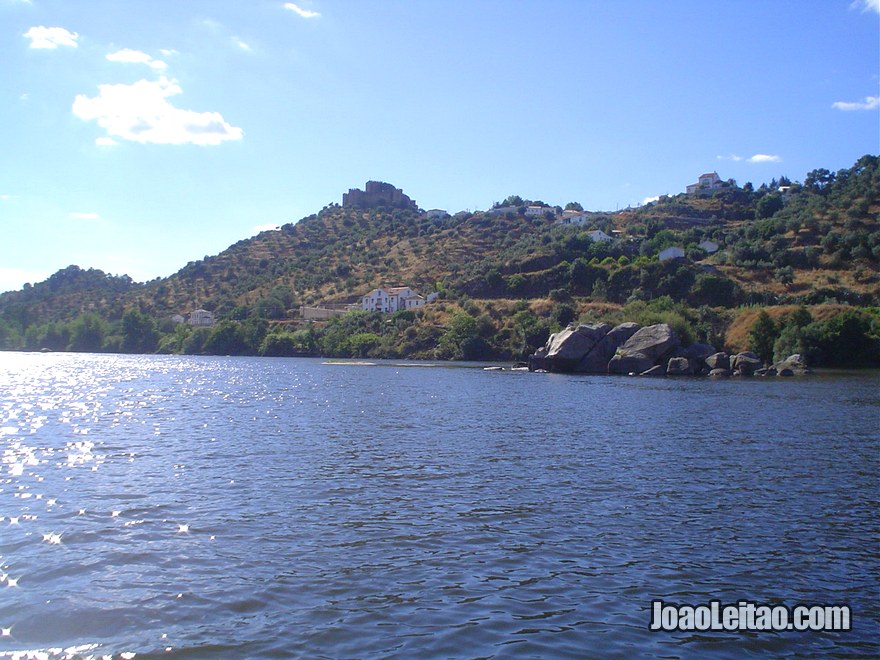
Belver is a small village in the center Portugal, in Portalegre district. It is a typical Alentejo village with its white houses and some of them keep the usual yellow and blue stripes around doors and windows. Belver Castle stands on top of the hill and boasts magnificent views of the Tagus River and the village below. The landscape natural beauty is the biggest attraction, and there are the Outeirinho Lookout and the Birdlife Observatory where you can enjoy the surrounding scenery and bird watching.
What to visit in Belver:
- Belver Bridge
- Outeirinho Lookout
- Nossa Senhora do Pilar Chapel
- Belver Parish Church
- Belver Castle
- Domingos da Vinha Museum
- Soap Museum
- São Brás Chapel
- Tagus River
- Penedo Gordo Dolmen
- Belver Dam
- Fonte Velha Trail
- Tapestry Museum
98. Belmonte
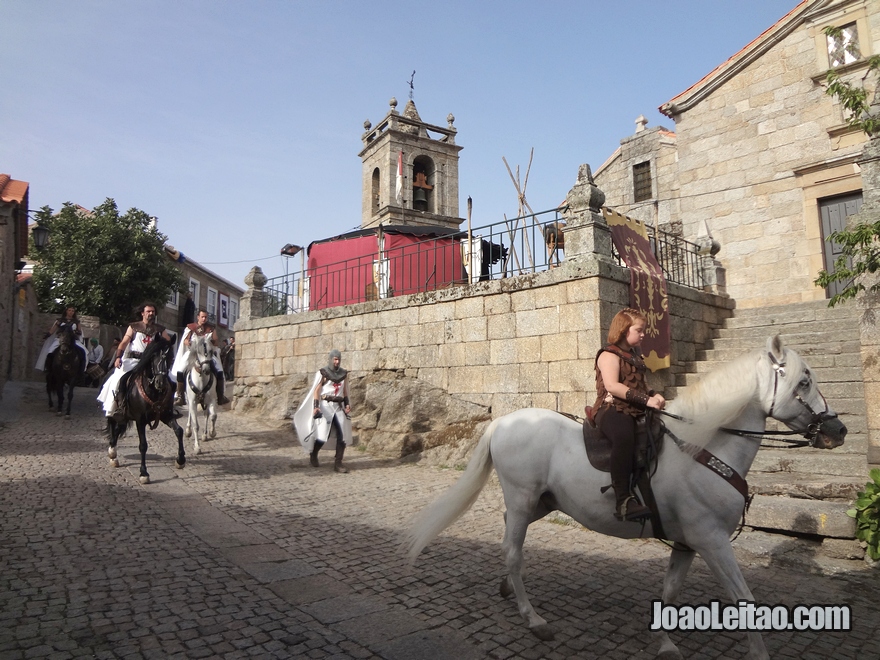
Belmonte is a Portuguese town full of history. It is located in the Portugal inland, in Castelo Branco district. The village received its first charter by King D. Sancho I in 1199, but its history goes further back. It is impressive that the history of this town covers as many historic periods as the Roman rule (Roman Tower Centrum Cellas), the Discoveries (it was the birthplace of Pedro Álvares Cabral, and the Museum of the Portuguese Discoveries is in a property owned by his family) and an important Jewish heritage (Jewish Museum of Belmonte and the Synagogue Bet Eliahu, established in 1996). The Jewish occupation in this village is one of the most important episodes in its history. When the Catholic Kings expelled the Jews out of the country in the 16th century, a group of Jews (nicknamed “Marranos”) took refuge in Belmonte and lived there for over 400 years disguising their Jewish traditions to avoid detection. It was only in the 1970’s that the Jews of Belmonte revealed their true identity and now they can freely practice their ancestral traditions.
What to visit in Belmonte:
- Former Town Hall
- Belmonte Municipal Council
- Santo António Chapel
- Calvário Chapel
- Belmonte Castle
- Centum Cellas
- Zêzere Eco-Museum
- Santiago Church and Cabrais Pantheon
- Parish Church
- Museum of the Discoveries
- Jewish Museum
- Pillory
- Tourism Office
- Pousada Convento de Belmonte
- Bet Eliahu Synagogue
- Cabrais Mansion
- Villa da Quinta da Fórnea Archaeological Site
99. Beja
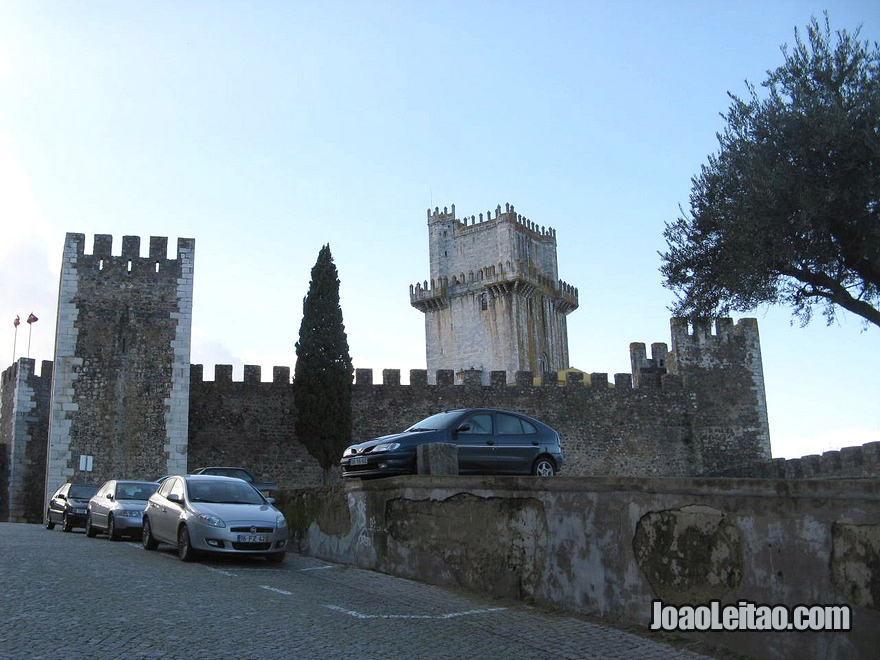
Beja is the capital city of the district of the same name. It stretches for the entire width of Portugal territory and separates the Algarve in the south from Setúbal and Évora in the north. The city has been founded by the Celts in the 1st century BC, then dominated by the Carthaginians before they were driven out by the Romans in the 2nd and 3rd centuries BC. Beja (Pax Julia) was a famous Roman city, as proved by the Roman road that crosses the city. With the fall of the Roman Empire came the barbarian peoples from northern Europe who dominated the city until the arrival of the Moors in 714. The Arabs rule lasted in the region until 1162, during the reign of D. Afonso Henriques when Beja was definitely included into the jurisdiction of Portugal. Alentejo is a flat region, therefore Beja castle, unlike most cities where the castle stands on top of a hill, lies in the town center in the lowland.
What to visit in Beja:
- Beja Castle
- Jesuit College
- Nossa Senhora da Conceição Convent
- São Francisco Convent
- Misericórdia Church
- Nossa Senhora da Piedade Church
- Nossa Senhora dos Prazeres Church
- Santa Maria Church
- Santo Amaro Church
- Salvador Church
- Maldonados Palace
- Beja Regional Museum
- Seminary Museum
- Monument to the Unknown Political Prisoner
- Beja Pillory
- Beja Sé Cathedral
- Rainha D. Leonor Museum
- Rua do Sembrano Museum
- Pisões Roman Ruins
- Beja Episcopal Museum
- City Park
- Casa das Artes
- Arts and Archaeology Center
- Parish Church
- Pharmacy Museum
- Botanic Museum
- Toy / Play Museum
100. Batalha
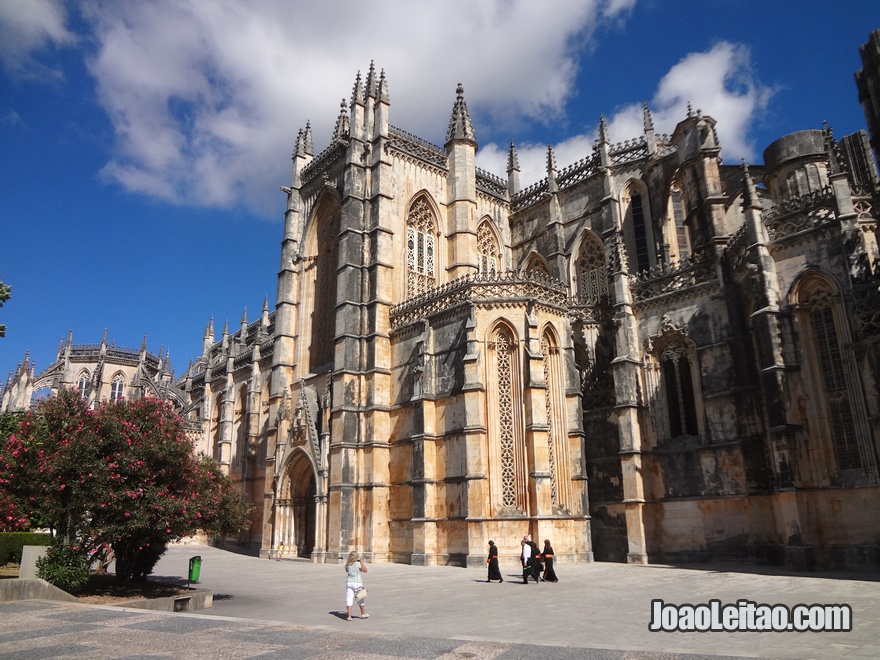
Batalha is a city located about 12 km away from Leiria and grew up thanks to the main monument of the city: the Batalha Monastery (less known by its other name Monastery of Santa Maria da Vitória). The construction of the monastery was ordered by King D. João I to thank the “divine” help in the battle of Aljubarrota (August 14, 1385). Its construction lasted over two centuries between 1386 and 1517. The Monastery is a UNESCO World Heritage Site.
What to visit in Batalha:
- Batalha Monastery
- Moeda Caves
- Nossa Senhora dos Aflitos Church
- Exaltação de Santa Cruz Parish Church
- Boutaca Bridge
- Community Museum
- Alta Estremadura Ethnographic Museum
- Vila Heróica Route
- Carso Route
- Faith Route
- Unknown Soldier Offerings Museum
- Center of the First Position of the Portuguese Army
- Pia do Urso
- São Nuno de Santa Maria Equestrian Statue
- Maciço Calcário Estremenho
- Mouzinho de Albuquerque Building
- Quinta do Fidalgo Palace
- Batalha Pillory
101. Bemposta Dam
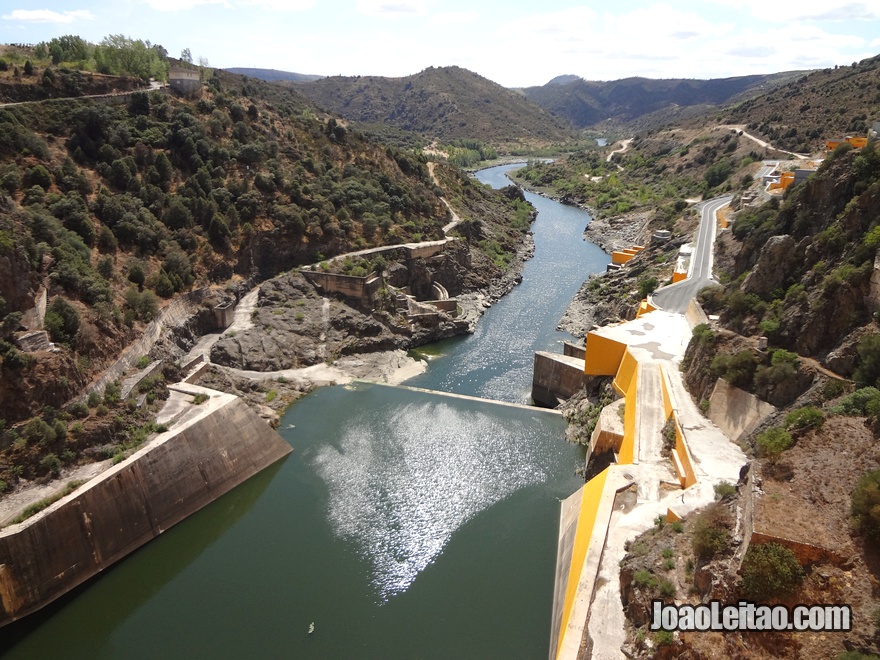
Bemposta Dam is located in Bragança district, right in the Douro International Natural Park. The dam began operating in 1964, making the hydroelectric development of Douro River flow. The dam landscape with its arch structure of 87m high, a basin with the capacity to hold back 129 000 000m3 of water and the surrounding landscape of Douro wine region make this region a magnificent setting.
What to visit in Bemposta Dam:
- Bemposta Village
- Parish Church
- Bemposta Dam
- Cardal do Douro Lookout
- Douro River
- Cascata da Faia d’Água Alta Trail
- Oleiros Castle
- Douro International Natural Park
- Bemposta Pillory
- São Sebastião Chapel
- Santa Bárbara Chapel
- Marcos Manor House
- Santo Cristo Chapel
102. Azenhas do Mar
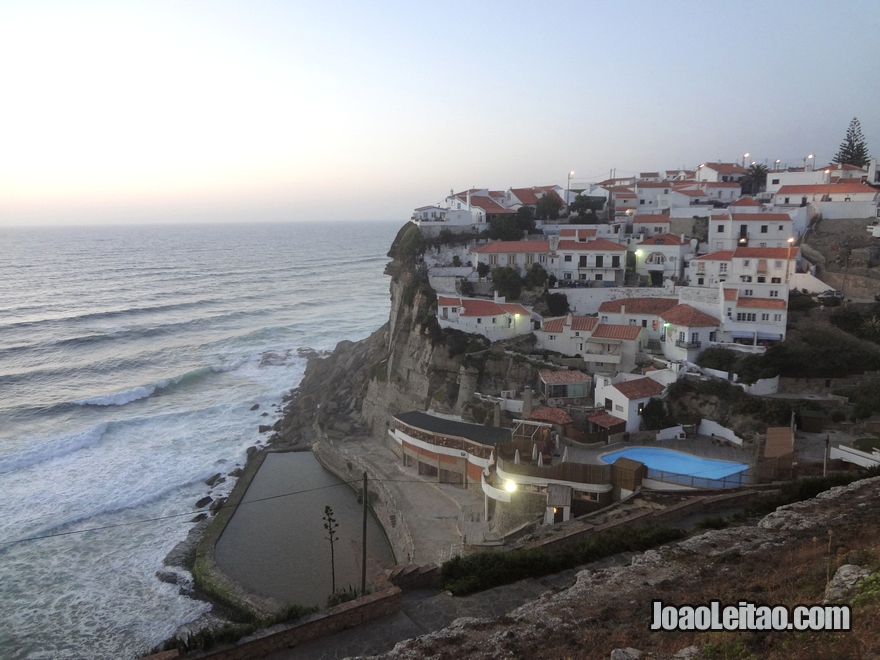
Azenhas do Mar is a village situated in Linha de Sintra (Sintra Route), on the Atlantic coast. The village stands on a cliff overlooking the sea. The village is crossed by a small stream that was used by many mills (water mills) built there, hence its name Azenhas do Mar (Sea Mills). Right on the beach there is a natural pool, which is actually a barrier that traps seawater and during the high tide it is flooded and the confined water is renewed.
What to visit in Azenhas do Mar:
- Azenhas do Mar Beach
- Maçãs Beach
- São Lourenço Chapel
- Sintra Cascais Natural Park
- Azenhas do Mar Lookout
- Ocean Pool
103. Avis
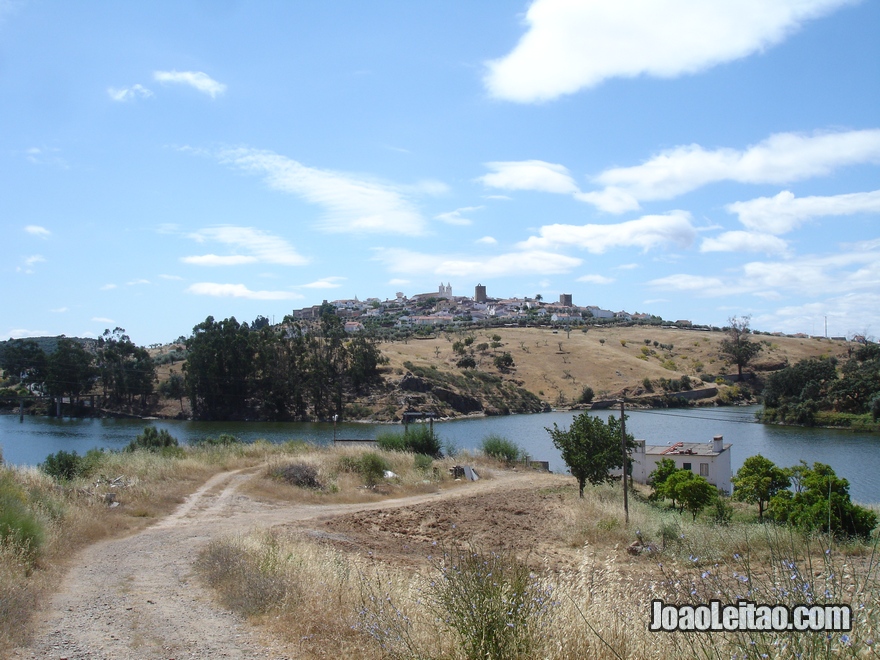
Avis is a village in Alto Alentejo inland, in Portalegre district. Avis was the birthplace of the Military Order of the same name – Avis Order – and it is where they built their castle. According to the legend, when the knights sought for the perfect location for the castle, they saw two eagles on top of an oak. They interpreted this as a luck sign, and thus they built the castle and, consequently, the town of Avis (which means “bird” in Latin) in this place. The village maintains its architecture of white houses inside the castle walls and the arch gate that indicated the entrance to the village itself, is one of the symbols of the village. Around the city, the scenery is breathtaking with Albufeira do Maranhão (a dam) at its feet.
What to visit in Avis:
- Avis Castle
- Pillory
- São Bento de Avis Monastery
- Maranhão Dam
- São Roque Tower
- Avis Parish Church
- Fundação Abreu Callado Rural Museum
- Municipal Museum
- Nossa Senhora D’Entre Águas Chapel
- Cândido dos Reis Square
- Avis City Walls
104. Arraiolos
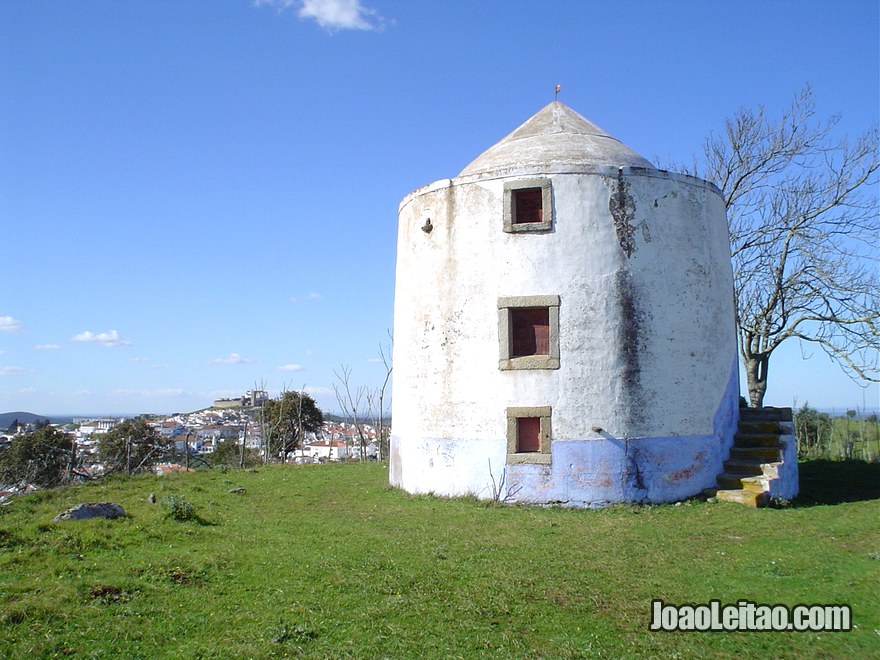
Arraiolos is a typical Alentejo village, 25 km away from Évora, the capital city of the district. Arraiolos is known for the great handmade rugs from this region: the carpets of Arraiolos. Arraiolos Castle stands out with its circular shape on top of a hill and below lies the village with its carefully maintained typical houses. The Church of Mercy, which is in the center of the village is a mandatory stopover to enjoy the beautiful blue and white tiles panels dating from the 18th century, although the church is older than that.
What to visit in Arraiolos:
- Loios Convent
- Arraiolos Castle
- Pedra Fountain
- Capitão-Mor Mansion
- São Gregório Parish Church
- Misericórdia Church
- Arraiolos Pillory
- Arraiolos Rug Interpretive Center
- Town Hall
- Tapeteira de Arraiolos Monument
- São Francisco Convent
105. Berlengas Archipelago
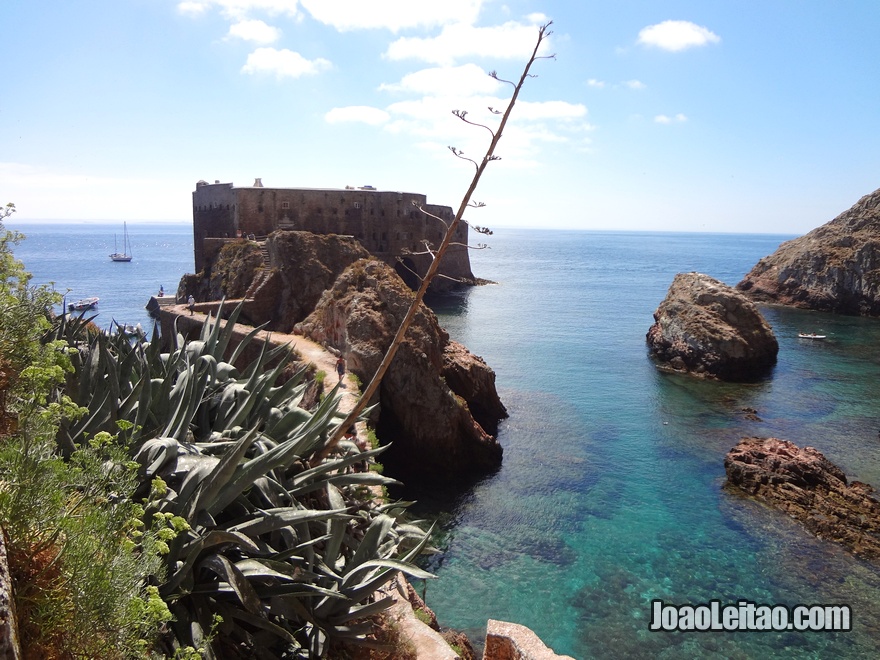
Berlengas is an archipelago of three small islands, but only the largest one is inhabited. It lies off the coast of Peniche from where boats depart during the summer season.
What to visit in Berlengas Archipelago:
- Duque de Bragança Lighthouse
- São João Fortress
- Carreiro do Mosteiro Beach
- Visitor Center
- Forte Beach
- Cova do Sonho Beach
- Brandal Cave
- Blue Cave
- Muxinga Cave
- Lagosteira Cave
- Flandres Cave
106. Pegões aqueduct
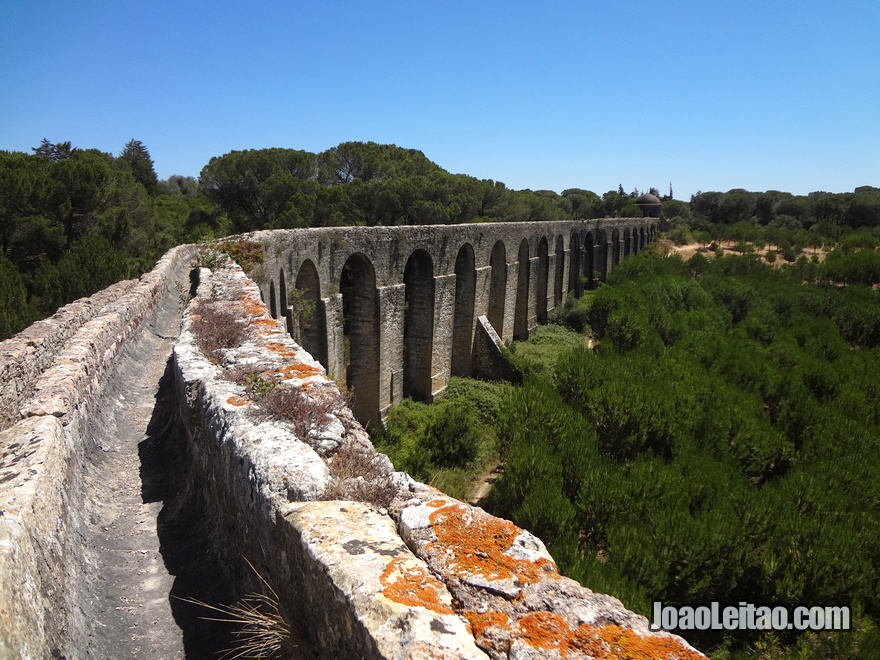
Pegões aqueduct is a great infrastructure, but it is not well known despite its magnificence. It stands close to Tomar in the Ribeira de Pegões Valley. It was built to supply water to Tomar Convent . Its construction began in 1593 and was completed in 1614. The aqueduct stretches along 6 km, with 58 complete round arches over 16 pointed arches supported by pillars. It has a maximum height of 30 meters. And the best part is that you can freely walk on this aqueduct, an amazing walk and a unique experience.
What to visit in Pegões aqueduct:
- Sete Montes National Forest
- Pegões Aqueduct
- Pegões Aqueduct Trail
- City of Tomar
- Convent of Christ
- Nabão River
- Charolinha Tower
107. Alvor
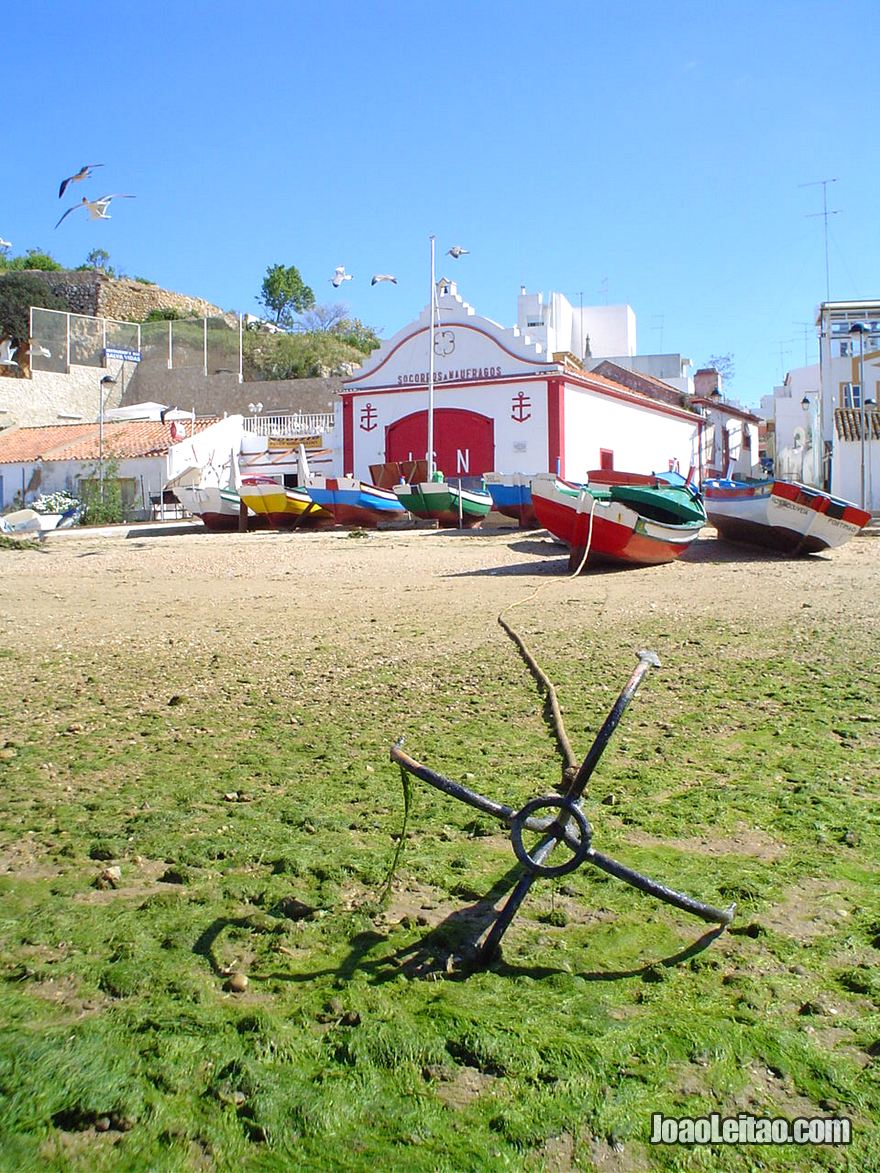
The village of Alvor lies on the western Algarve, near Portimão. Alvor was under Arab rule from 716 to 1250 before the conquest of the Algarve by King D. Afonso III. From the Arab castle there are only a few vestiges of its walls left. It is a traditional fishing village and it keeps its picturesque character with small boats displayed on the beach close to the city center. Alvor is a paradise for those who like to combine a beach holiday with a more traditional setting, away from the mass market tourist destinations of the Algarve.
What to visit in Alvor:
- Alvor Parish Church
- Alvor Castle
- Morabito de São Pedro (Chapel)
- Morabito de São João (Chapel)
- Alvor Ria
- Torralta Alvor Complex
- Misericórdia Church
- Former Fish Market Building
- Vau Beach
- Três Irmãos Beach
108. Alto Douro Wine Region
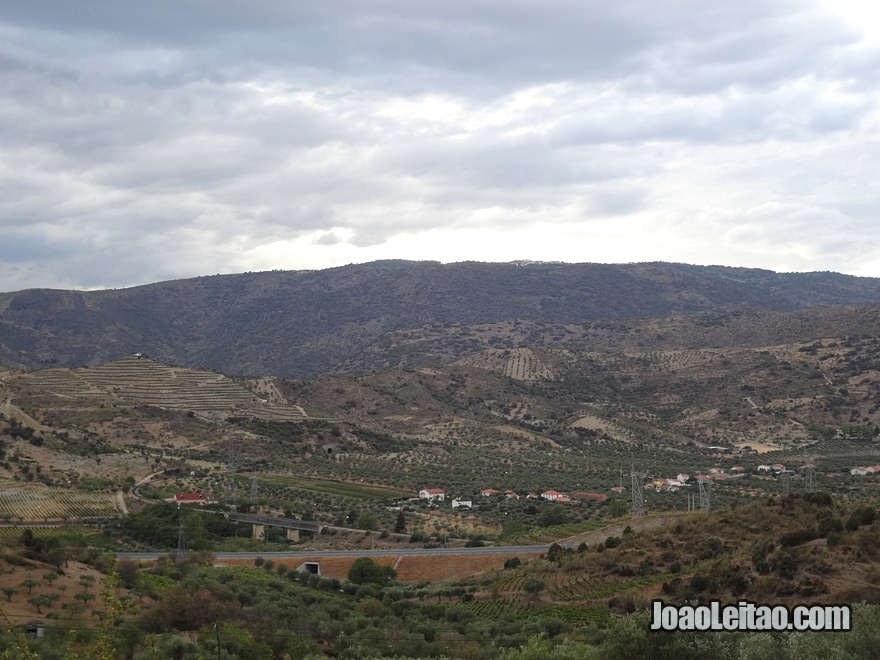
Alto Douro Wine Region is a region in the northeast of Portugal classified as a UNESCO World Heritage Site for its unique landscape. The Alto Douro Wine Region was the world’s first demarcated region in 1756 as initiative of the Marquês de Pombal government. In fact this region has been producing wine for over 2000 years, and the world-famous Port wine is one of the main products. The wine-growing tradition has shaped the landscape of the region, with Douro River banks covered with vines carefully lined up in terraces, creating a magnificent setting.
What to visit in Alto Douro Wine Region:
- Pinhão Village
- São Leonardo de Galafura Viewpoint
- Casal de Loivos Viewpoint
- São Salvador do Mundo Viewpoint
- Senhora das Neves Viewpoint
- Santo António Viewpoint
- Nossa Senhora da Piedade Viewpoint
- Penedo Durão Viepoint
- Archaeological Park of Vale do Côa
- City of Lamego
- City of Torre de Moncorvo
- Casa de Mateus
- Tua Railway Line
- Wine Museum
- Freixo de Numão Archaeological Route
- Douro International Natural Park
- Ucanha Tower and Bridge
- Salzedas Monastery
- City of Miranda do Douro
- São João de Tarouca Monastery
- Trevões Wine Village
- Favaios Wine Village
- Prevosende Wine Village
- Barcos Wine Village
- Douro River Cruises
- City of Peso da Régua
- Douro Museum
- Porto Wine Palace
- Barca d’Alva Village
- Scenic Route EN222
109. Almeida
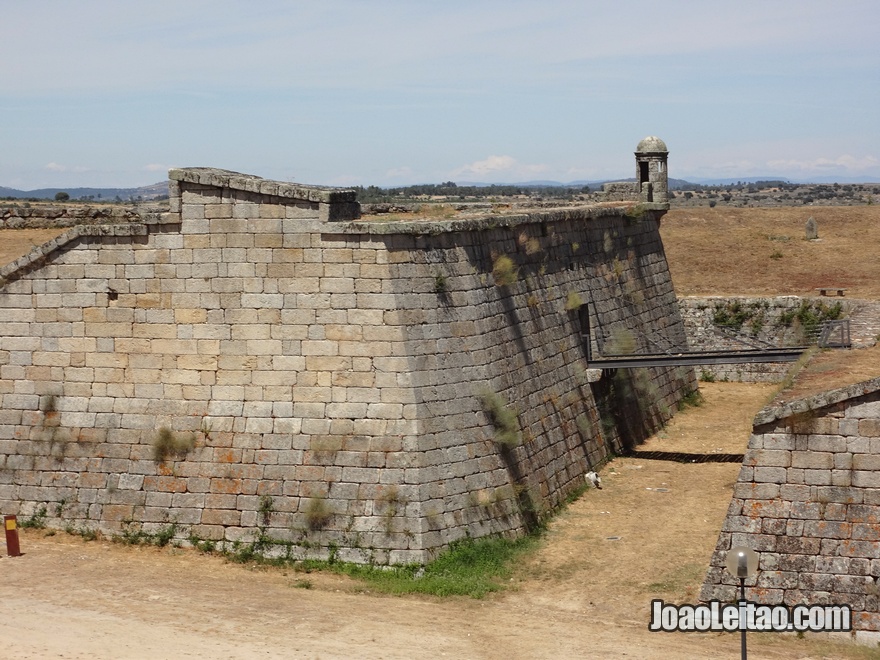
Almeida is a historic town in the northern inland of the country, bordering Spain. This location always led it to be an important spot for border defense. It was only in 1297, during the reign of King D. Dinis that the village definitely became a Portuguese possession. The medieval fortress gave way to a more complex structure built in the 17th century – Praça Forte de Almeida which faced Real Fuerte de la Concepción in the opposite side of the border in Spain. Praça Forte de Almeida is the most important example of military architecture in Portugal, a fortress in an irregular hexagonal plant, with a bastion at each corner and a moat dug all the way around. Almeida village is located within the walls of this fortress. Almeida was on the route of French Invasions on their way to get to Lisbon. Here took place an important episode of the history of Portugal – Almeida Siege – an assault from the Napoleonic troops in 1810.
What to visit in Almeida:
- António Pereira Fontão Júnior Manor House
- Brigadeiro Vicente Delgado Freire Manor House
- Casa da Roda dos Expostos
- Leitões Manor House
- Casa dos Vedores Gerais
- João Dantas da Cunha Manor House
- Almeida Casemates
- Noble Manor House
- Praça Alta Square
- Terreiro Velho
- Doble Ravelin Blood Hospital
- XVI Century House
- Almeida Castle
- Corpo da Guarda Principal
- Misericórdia Church
- Town Hall
- Ammunition Depot and Guard House
- Picadeiro d’El Rey
- Santo António Double Gates
- São Francisco da Cruz Double Gates
- Quartel das Esquadras
- Vedoria Geral
- Clock Tower
110. Aljubarrota
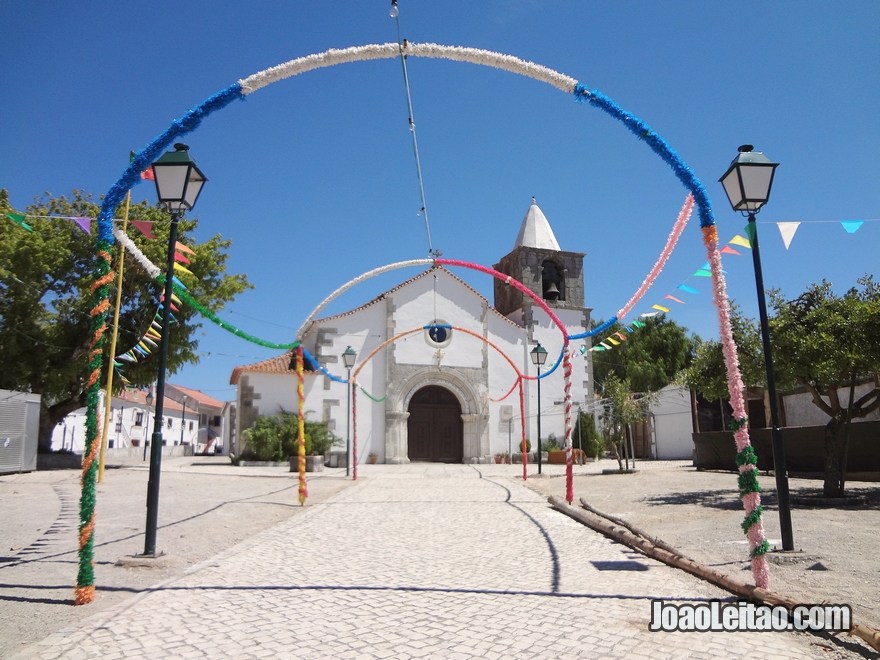
Aljubarrota belongs to Alcobaça municipality and is located in central Portugal. This small village has a huge weight in the history of Portugal. The important Battle of Aljubarrota, considered a symbol of Portugal independence, took place near this village on the 14th August 1385. Also famous is a woman baker, then called Padeira de Aljubarrota (the Baker of Aljubarrota), which has a monument in her honor in the town. According to the legend, this woman (a baker) has killed six Spanish invaders with her baker shovel. Aljubarrota town keeps its medieval look with its white single-storey houses with nice stonework on the facades.
What to visit in Aljubarrota:
- Pelourinho Square
- Misericórdia Church
- Nossa Senhora dos Prazeres Church
- Capitães Manor House
- Carvalhos Manor House
- “Manueline” Style Windows
- Arco da Memória
- São Vicente Church
- Santo Amaro Chapel
- Medieval Well
- Rua Direita
- Sacred Arts Museum
- São João Chapel
- Municipal Library
- Carvalhal Roman Bridge
- Footpath
- Battle of Aljubarrota Interpretation Center
- Nossa Senhora das Areias Chapel
- Santa Teresa Chapel
- São Romão Chapel
- Boavista Chapel
111. José Franco´s Typical Village
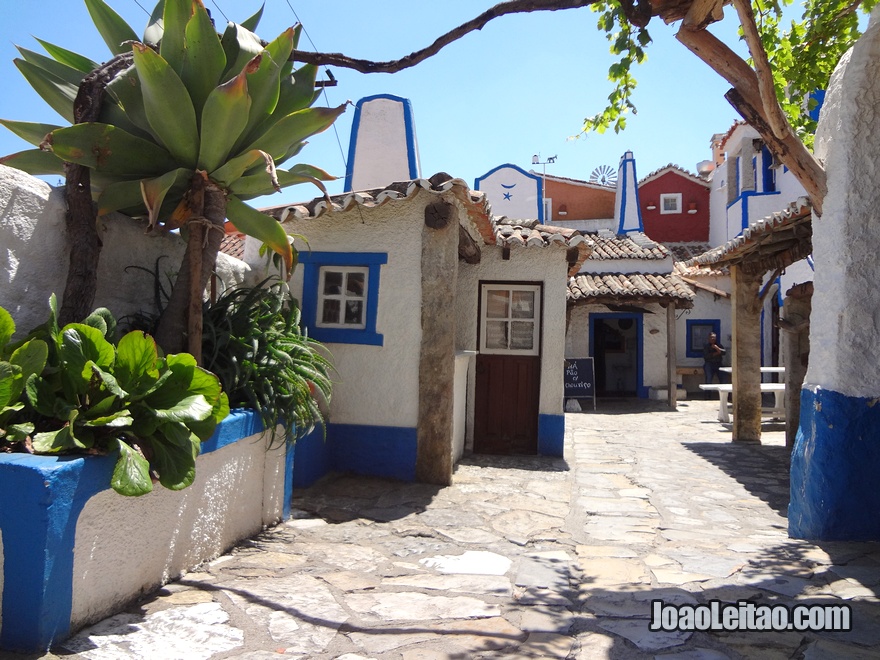
José Franco´s Typical Village, also nicknamed “Aldeia Saloia” (old-fashioned village), is a creation of the sculptor and potter José Franco. In 1945 he decided to recreate scenarios, totally made of clay, of typical Portuguese villages and traditional occupations from the early 20th century. There are life-size reproductions and also miniature recreations of the typical houses from the different regions of Portugal. This ethnographic exhibition started in the backyard of his home, but now covers an area of 2500m2. This village stands in Sobreiro, a town in Mafra municipality.
What to visit in José Franco´s Typical Village:
- Castle
- Carpentry
- Blacksmith
- Cellar
- School
- Mill
112. Aldeia de João Pires
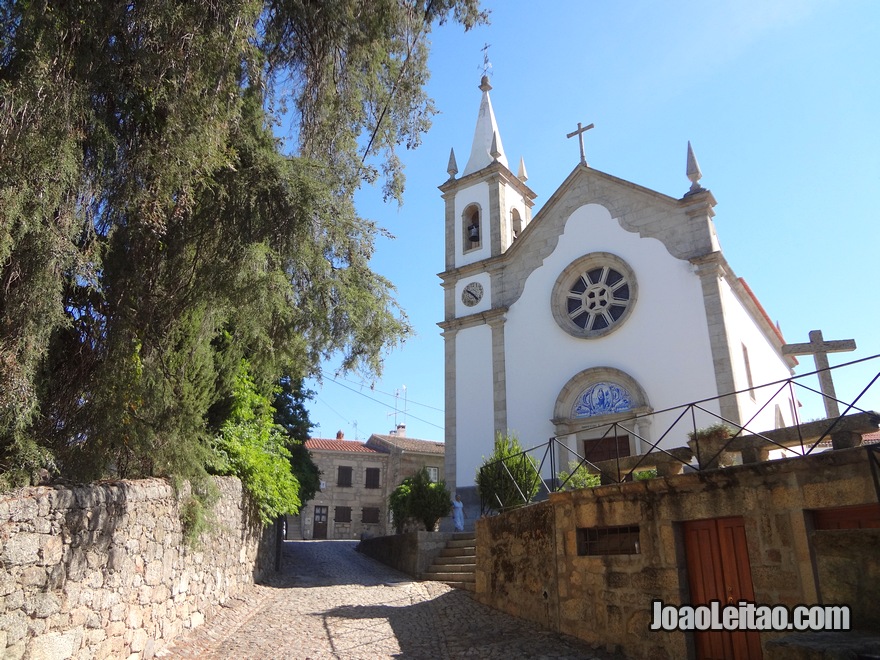
Aldeia de João Pires is a village with less than 200 inhabitants in Penamacor parish. It is a typical village which keeps its houses made of stone carefully preserved. In the village center the beautiful Church stands out, immaculately white contrasting with the stone buildings around. Outside the village we can climb to the highest point – Pena de Águia – and enjoy the panorama over the village.
What to visit in Aldeia de João Pires:
- Parish Church
- Taborda Manor House
- Oliveira Monteiro House
- Mergulho Fountain
- Tapado Cabeço Archaeological Site
- Espírito Santo Calvary
- Cruz do Rebolo
- São Miguel Chapel
- Aldeia de João Pires Parish Museum l
- Espirito Santo Chapel
- Parish House
- Sequoia
113. Alcobaça
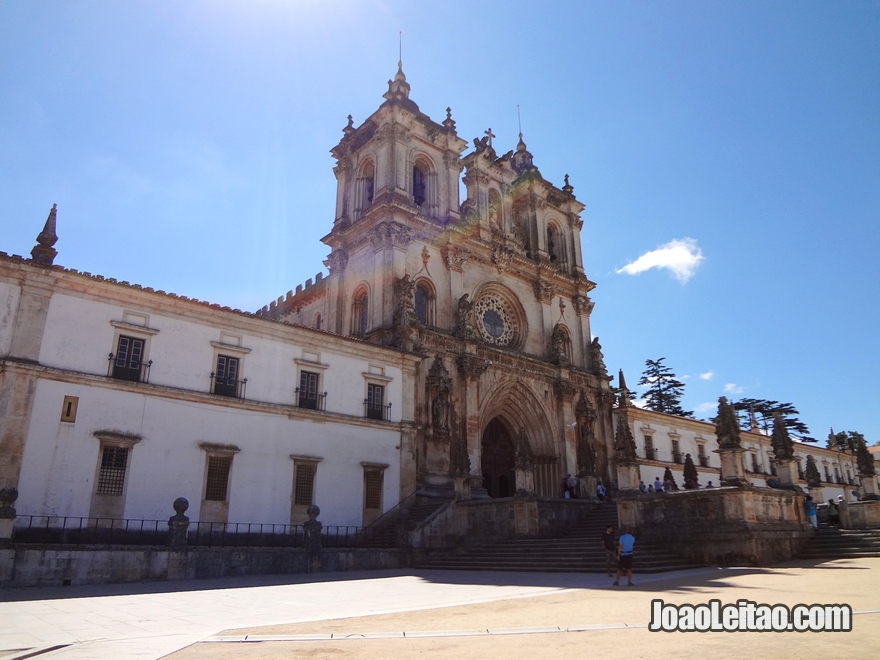
Alcobaça stands in the district of Leiria, at the meeting point of Alcoa and Baca Rivers, hence probably its name Alcobaça. The city is known for the Monastery of Santa Maria (Monastery of Alcobaça), a majestic monument built between 1148 and 1222, originally in Gothic style. The Monastery was rebuilt several times over the centuries and other styles such as the “Manuelino” have been added. The Monastery houses the tombs of the most romantic couple in the history of Portugal: Pedro and Inês de Castro. The tombs are true masterpieces of Portuguese sculpture.
What to visit in Alcobaça:
- Alcobaça Monastery
- Alcobaça Castle
- Nossa Senhora da Conceição Chapel
- Cine Theatre
- Adães Bermudes School
- Fonte Nova Challet
- Armazém das Artes
- Nossa Senhora da Conceição Church
- Misericordia Church
- Town Hall Gardens
- Alcobaça River
- Pataias Lagoon
- Serra de Aire e Candeeiros Natural Park
- Cistercian Hydraulic System
- Bernardino Lopes Ferreira Manor House
- Araújo Guimarães Manor House
- Wine Museum
- Vieira Natividade House Museum
- Chalet Rhino
- Raul da Bernarda Museum
- Cova da Onça Manor House
- Faience Museum
- Pena Palace
- Adão Bermudes Building
- Piedade Thermal Baths
114. Alqueva dam
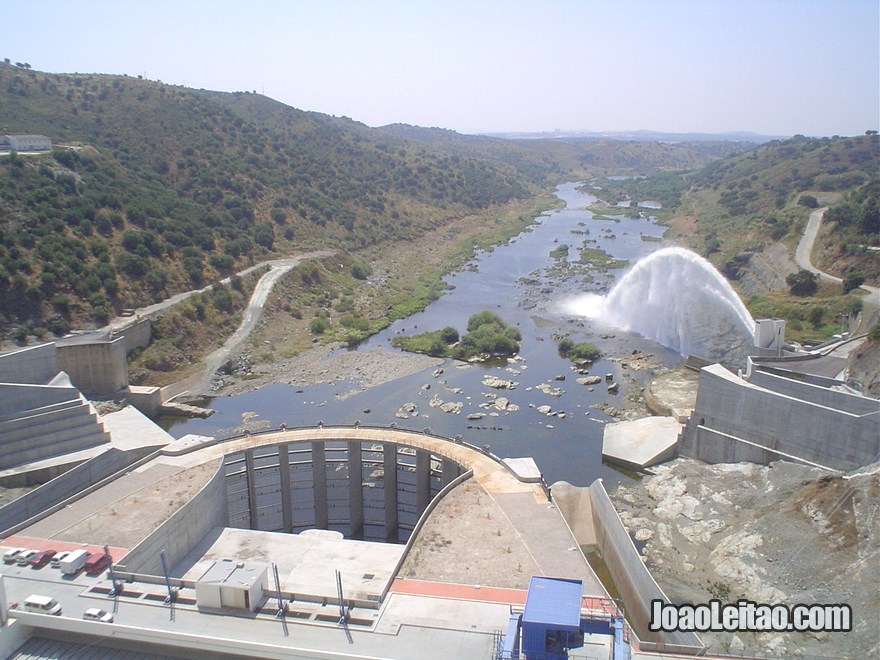
Alqueva dam was one of the most controversial public works in Portugal, in recent decades. It took 30 years for the work to be completed, since the approval of the project in 1975 until the closure of the gates and the filling with water in 2002 there were many controversies between that did stop the work. The dam, located in Alentejo and benefiting of Guadiana River, was considered the solution to irrigate crops in such an arid zone and also to produce electricity. As this work involved the flooding of a village (Vila da Luz), the controversy arose and the issue was only solved with the construction of a new village where the inhabitants of the ancient Vila da Luz were relocated. Alqueva dam is currently the largest dam in Portugal and it has undergone enlargement works to increase the capacity of its hydroelectric power station. The dam brought several tourism related activities.
What to visit in Alqueva Dam:
- Guadiana River
- Alqueva Dam
- Estrela Village
- Alqueva Village
- Amieira Village
- Monsaraz Village
- Mourão Village
- Xerez Cromlech
- São Pedro do Corval Village
- City of Moura
- Monte de São Sebastião Viewpoint
- Barrancos Viewpoint
- São Pedro Viewpoint
- Alto de São Gens Viewpoint
- Herdade da Contenda
- Monte Viewpoint
- Boat Cruises
- Luz Village
115. Vilarinho das Furnas
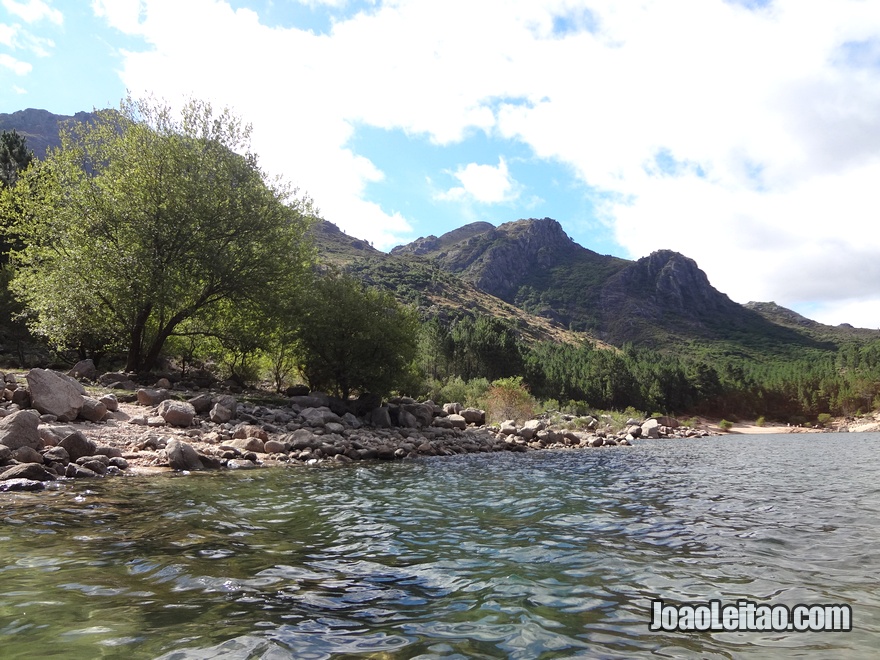
Vilarinho da Furna (commonly called Vilarinho das Furnas) was a village in Terras de Bouro municipality, in Braga district. With the construction of Vilarinho das Furnas dam in 1971, the village was submerged, but in years of extreme drought, with the reservoir in a low level, it is possible to see the remains of the village. Vilarinho das Furnas dam covers an area of 77 km2 and it is surrounded by such natural beauty that makes it a great place to enjoy nature and outdoor activities.
What to visit in Vilarinho das Furnas:
- Vilarinho das Furnas Dam
- Homem River
- Peneda Geres National Park
- Aguia do Sarilhão Trail
- Serra Amarela

